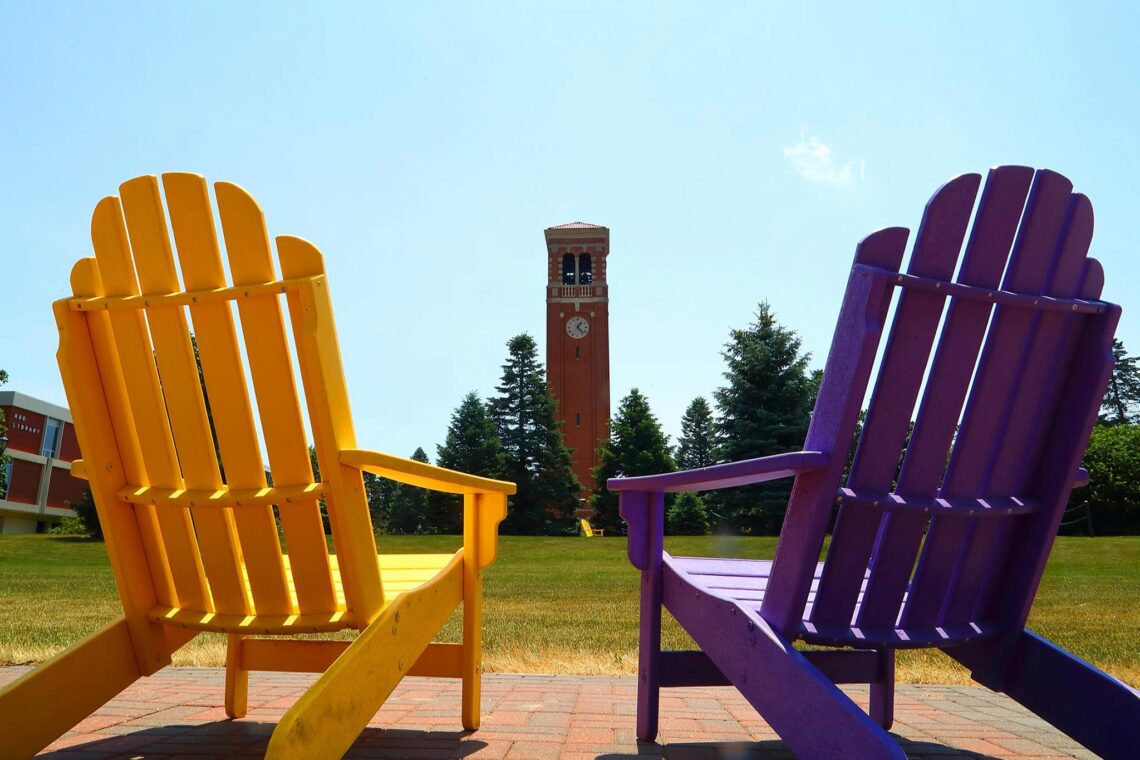
Iowa welcomes you with the full spectrum of four vibrant seasons, with a unique weather experience that complements all four seasons!
From the vibrant colors of fall to the snowy wonderland of winter, there’s always something exciting to look forward to. Spring brings renewal, and summer is all about fun in the sun. With a diverse climate, Iowa offers the perfect backdrop for your academic journey, ensuring you have a memorable and enriching experience while pursuing your education. Read my previous blog about ‘Exploring the State of Iowa’ to learn more about the state and its geographical location in the USA Map.
Each season has its unique charm, making Iowa a place where you can savor the changing weather and all the outdoor activities that come with it. Whether you prefer to ski in the winter, hike in the spring, swim in the summer, or admire the foliage in the fall, Iowa has something for everyone, no matter the season. So now, let’s talk about the weather in Cedar Falls.
Spring in Cedar Falls
Spring in Cedar Falls typically begins in March and lasts through May. During these months, you can expect milder temperatures, blooming flowers, and the city coming to life after the winter season. It’s a great time to explore parks and enjoy outdoor activities.
During spring in Cedar Falls, you can look forward to pleasant temperatures ranging from 50 to 70 degrees Fahrenheit (10-24 degrees Celsius). As the snow thaws and the temperatures rise, you’ll find an array of beautiful parks to explore. Head to Big Woods Lake Recreation Area for a leisurely stroll, picnics, and bird-watching. Or, if you’re into adventure, take a trip to George Wyth State Park or a stroll along the picturesque Cedar Valley Nature Trail, a perfect escape for nature lovers where you can hike, bike, and enjoy serene lake views.
If you’re an art enthusiast, visit the outdoor sculpture garden at the Hearst Center for the Arts. For a more urban experience, downtown Cedar Falls offers charming streets, quaint cafes, and the scenic Overman Park. With the city’s parks coming to life in the spring, you’ll have plenty of green spaces to relax and rejuvenate while studying at the University of Northern Iowa. And don’t forget to attend local events like outdoor concerts and farmers’ markets. Spring in Cedar Falls offers a wonderful blend of nature, culture, and community for potential students to embrace.

Big Woods Lake Cedar Falls, IA
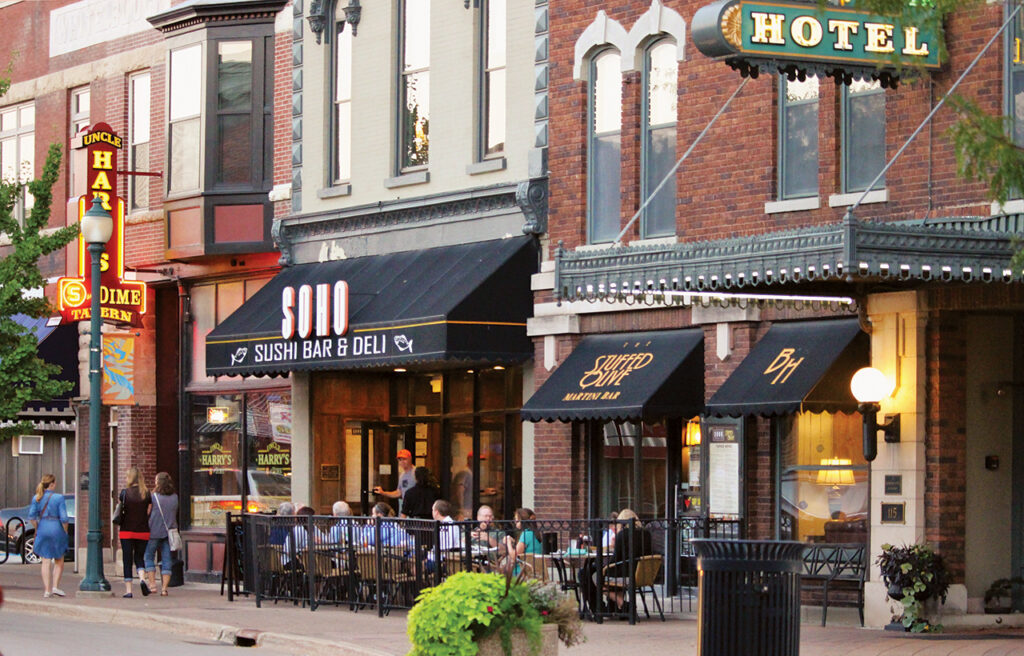
Popular bars and restaurants line Main Street in Downtown Cedar Falls
Summer in Cedar Falls
Summer in Cedar Falls typically begins in June and continues through August. These months offer warm and pleasant weather, making it the perfect time for outdoor adventures and enjoying the local parks. It’s an ideal period for swimming, hiking, and various recreational activities.
Summer in Cedar Falls is a delightful season with temperatures ranging from 70 to 90 degrees Fahrenheit (21-32 degrees Celsius). It’s the perfect time for students to explore the outdoors. Make a splash at the beautiful Big Big Woods Lake Recreation Area, where you can swim, kayak, or have a picnic by the shore. For a more adventurous experience, head to George Wyth State Park for hiking and birdwatching. You can also enjoy serene moments at the Butterfly Garden or experience a round of disc golf at Prairie Lakes Park.
Plus, don’t miss out on the lively summer festivals and events happening around downtown. Cedar Falls in the summer is a hub of activity and natural beauty, offering a wide range of experiences for students looking to make the most of their time here. The Lost Island Waterpark in Waterloo is conveniently close to Cedar Falls, just a short drive of approximately 15-20 minutes. So, when the summer heat rolls in, it’s easy for students in Cedar Falls to escape to this fantastic waterpark and enjoy a day filled with fun and excitement.
Also, if you are interested to learn fun things you can do during summertime, check out below.
Fall in Cedar Falls
Fall in Cedar Falls typically begins in late September and lasts through November. With the colorful foliage, mild temperatures, and various seasonal activities, it’s no wonder that fall is everyone’s favorite time of the year in Cedar Falls.
As the vibrant leaves of fall paint the city in warm hues, Cedar Falls becomes a picturesque haven for students. As the temperature gradually cools down, the crisp fall air in Cedar Falls is perfect for outdoor activities, with temperatures ranging from 45°F to 65°F (7°C to 18°C). The picturesque scenery, cool yet comfortable weather, and the anticipation of holidays make this season special. Students can enjoy the outdoors, visit pumpkin patches, savor apple cider, and relish the feeling of warmth as the city gears up for the upcoming festivities. It’s the perfect season for making lasting memories. It’s an inviting season to explore, study, and enjoy the beauty of Iowa.
Two big events that happen during the fall in Cedar Falls are Halloween and Thanksgiving. Halloween brings out the creative spirit in the community, with festive decorations and lively trick-or-treating. Thanksgiving is a time for families and friends to gather, share gratitude, and indulge in delicious feasts. These holidays add to the charm of fall and create a sense of togetherness in the city.
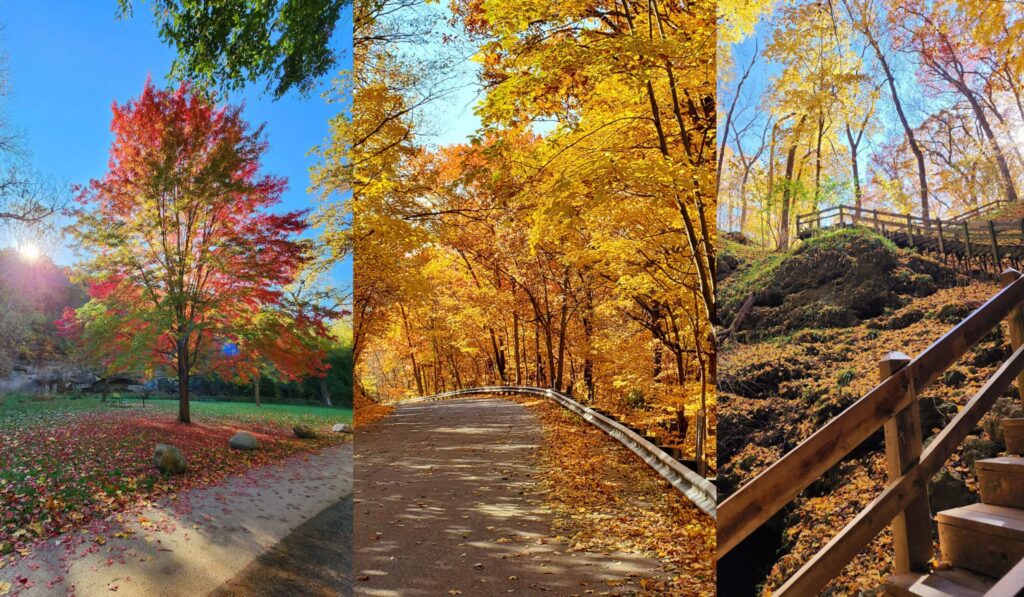
Want to see how beautiful fall is in Iowa and Cedar Falls? Check it out. You will not be disappointed! See how UNI looks during the Fall!
Winter
Winter in Cedar Falls typically begins in December and lasts through February. This season brings a beautiful transformation to the city, as snow blankets the landscape, creating a picturesque scene.
While the temperatures can be chilly, ranging from 10°F to 30°F (-12°C to -1°C), there are plenty of activities to enjoy. You can explore local parks covered in a snowy wonderland, take part in winter sports like ice skating, and sip hot cocoa by a cozy fireplace. If you’re looking for indoor attractions, visit the Cedar Falls Ice House, an excellent ice skating rink. Winter is a time for holiday celebrations and festivities, making it a special season in Cedar Falls.
Also, if you are interested to learn fun things you can do during wintertime, check out below.
Discover the exciting weather transitions in Iowa through the eyes of our students who’ve shared their incredible summer adventures. From basking in the summer sun to relishing the cozy charm of fall, their stories will amaze you. Get ready to be inspired by their experiences!
International students experience a sense of love and belonging on campus as they engage in the celebration of numerous international festivals and events. Read more about the festivities in “Celebrating Diverse Cultural Holidays & Festivals”.

Iowa welcomes you with the full spectrum of four vibrant seasons, with a unique weather experience that complements all four seasons!
From the vibrant colors of fall to the snowy wonderland of winter, there’s always something exciting to look forward to. Spring brings renewal, and summer is all about fun in the sun. With a diverse climate, Iowa offers the perfect backdrop for your academic journey, ensuring you have a memorable and enriching experience while pursuing your education. Read my previous blog about ‘Exploring the State of Iowa’ to learn more about the state and its geographical location in the USA Map.
Each season has its unique charm, making Iowa a place where you can savor the changing weather and all the outdoor activities that come with it. Whether you prefer to ski in the winter, hike in the spring, swim in the summer, or admire the foliage in the fall, Iowa has something for everyone, no matter the season. So now, let’s talk about the weather in Cedar Falls.
Spring in Cedar Falls
Spring in Cedar Falls typically begins in March and lasts through May. During these months, you can expect milder temperatures, blooming flowers, and the city coming to life after the winter season. It’s a great time to explore parks and enjoy outdoor activities.
During spring in Cedar Falls, you can look forward to pleasant temperatures ranging from 50 to 70 degrees Fahrenheit (10-24 degrees Celsius). As the snow thaws and the temperatures rise, you’ll find an array of beautiful parks to explore. Head to Big Woods Lake Recreation Area for a leisurely stroll, picnics, and bird-watching. Or, if you’re into adventure, take a trip to George Wyth State Park or a stroll along the picturesque Cedar Valley Nature Trail, a perfect escape for nature lovers where you can hike, bike, and enjoy serene lake views.
If you’re an art enthusiast, visit the outdoor sculpture garden at the Hearst Center for the Arts. For a more urban experience, downtown Cedar Falls offers charming streets, quaint cafes, and the scenic Overman Park. With the city’s parks coming to life in the spring, you’ll have plenty of green spaces to relax and rejuvenate while studying at the University of Northern Iowa. And don’t forget to attend local events like outdoor concerts and farmers’ markets. Spring in Cedar Falls offers a wonderful blend of nature, culture, and community for potential students to embrace.

Big Woods Lake Cedar Falls, IA

Popular bars and restaurants line Main Street in Downtown Cedar Falls
Summer in Cedar Falls
Summer in Cedar Falls typically begins in June and continues through August. These months offer warm and pleasant weather, making it the perfect time for outdoor adventures and enjoying the local parks. It’s an ideal period for swimming, hiking, and various recreational activities.
Summer in Cedar Falls is a delightful season with temperatures ranging from 70 to 90 degrees Fahrenheit (21-32 degrees Celsius). It’s the perfect time for students to explore the outdoors. Make a splash at the beautiful Big Big Woods Lake Recreation Area, where you can swim, kayak, or have a picnic by the shore. For a more adventurous experience, head to George Wyth State Park for hiking and birdwatching. You can also enjoy serene moments at the Butterfly Garden or experience a round of disc golf at Prairie Lakes Park.
Plus, don’t miss out on the lively summer festivals and events happening around downtown. Cedar Falls in the summer is a hub of activity and natural beauty, offering a wide range of experiences for students looking to make the most of their time here. The Lost Island Waterpark in Waterloo is conveniently close to Cedar Falls, just a short drive of approximately 15-20 minutes. So, when the summer heat rolls in, it’s easy for students in Cedar Falls to escape to this fantastic waterpark and enjoy a day filled with fun and excitement.
Also, if you are interested to learn fun things you can do during summertime, check out below.
Fall in Cedar Falls
Fall in Cedar Falls typically begins in late September and lasts through November. With the colorful foliage, mild temperatures, and various seasonal activities, it’s no wonder that fall is everyone’s favorite time of the year in Cedar Falls.
As the vibrant leaves of fall paint the city in warm hues, Cedar Falls becomes a picturesque haven for students. As the temperature gradually cools down, the crisp fall air in Cedar Falls is perfect for outdoor activities, with temperatures ranging from 45°F to 65°F (7°C to 18°C). The picturesque scenery, cool yet comfortable weather, and the anticipation of holidays make this season special. Students can enjoy the outdoors, visit pumpkin patches, savor apple cider, and relish the feeling of warmth as the city gears up for the upcoming festivities. It’s the perfect season for making lasting memories. It’s an inviting season to explore, study, and enjoy the beauty of Iowa.
Two big events that happen during the fall in Cedar Falls are Halloween and Thanksgiving. Halloween brings out the creative spirit in the community, with festive decorations and lively trick-or-treating. Thanksgiving is a time for families and friends to gather, share gratitude, and indulge in delicious feasts. These holidays add to the charm of fall and create a sense of togetherness in the city.

Want to see how beautiful fall is in Iowa and Cedar Falls? Check it out. You will not be disappointed! See how UNI looks during the Fall!
Winter
Winter in Cedar Falls typically begins in December and lasts through February. This season brings a beautiful transformation to the city, as snow blankets the landscape, creating a picturesque scene.
While the temperatures can be chilly, ranging from 10°F to 30°F (-12°C to -1°C), there are plenty of activities to enjoy. You can explore local parks covered in a snowy wonderland, take part in winter sports like ice skating, and sip hot cocoa by a cozy fireplace. If you’re looking for indoor attractions, visit the Cedar Falls Ice House, an excellent ice skating rink. Winter is a time for holiday celebrations and festivities, making it a special season in Cedar Falls.
Also, if you are interested to learn fun things you can do during wintertime, check out below.
Discover the exciting weather transitions in Iowa through the eyes of our students who’ve shared their incredible summer adventures. From basking in the summer sun to relishing the cozy charm of fall, their stories will amaze you. Get ready to be inspired by their experiences!
International students experience a sense of love and belonging on campus as they engage in the celebration of numerous international festivals and events. Read more about the festivities in “Celebrating Diverse Cultural Holidays & Festivals”.
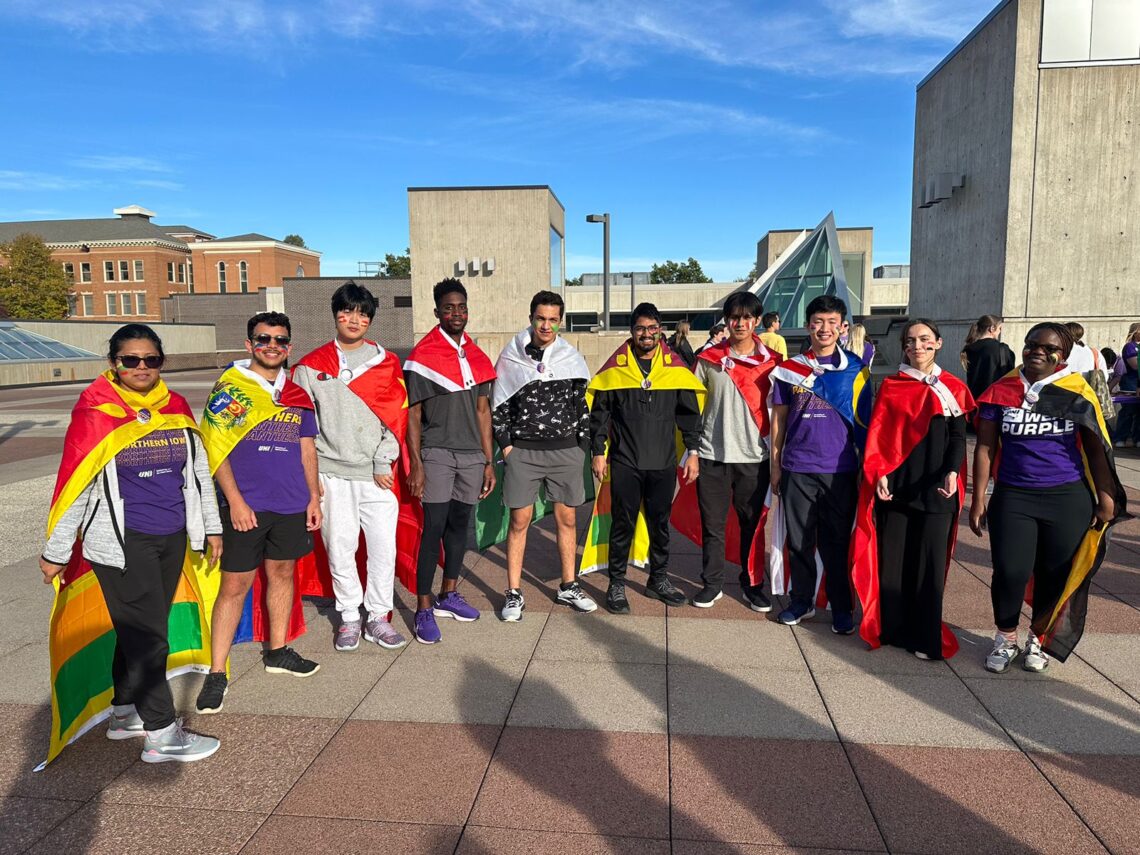
Homecoming, particularly for international students, is a cherished occasion filled with fond memories. It offers a unique opportunity to forge lasting connections, create unforgettable experiences. And feel a deep sense of belonging at their adopted university. It’s a time when cultural diversity meets school spirit! And students from all corners of the world come together to celebrate their academic journey. Most importantly create international friendships that last a lifetime.
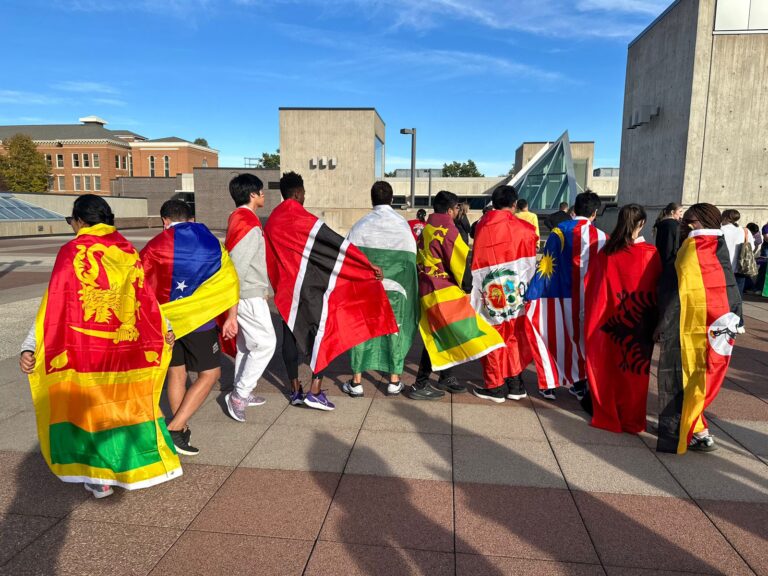
What is homecoming?
Homecoming at the University of Northern Iowa, like at many other universities, is a traditional event. That celebrates the return of alumni to their alma mater. It typically includes a series of activities and festivities designed to foster a sense of school spirit. And unity among current students, alumni, and the broader university community. Homecoming events often feature activities such as a parade, football game, social gatherings, and other special events. Which may vary from year to year. It’s a time for alumni to reconnect with their university. Meet with old friends, and show support for their alma mater.
Here are two popular activities for international students to engage in during homecoming:
1) Amazing Race
The “Amazing Race” at the University of Northern Iowa is an exciting and competitive event. In this university version, students form teams and navigate a series of challenges, clues, and locations on campus. To complete tasks and race to the finish line. It’s a thrilling and team-building activity that combines problem-solving, physical challenges, and a sense of adventure. Making it a memorable part of the university experience.
International student teams participating in the “Amazing Race”
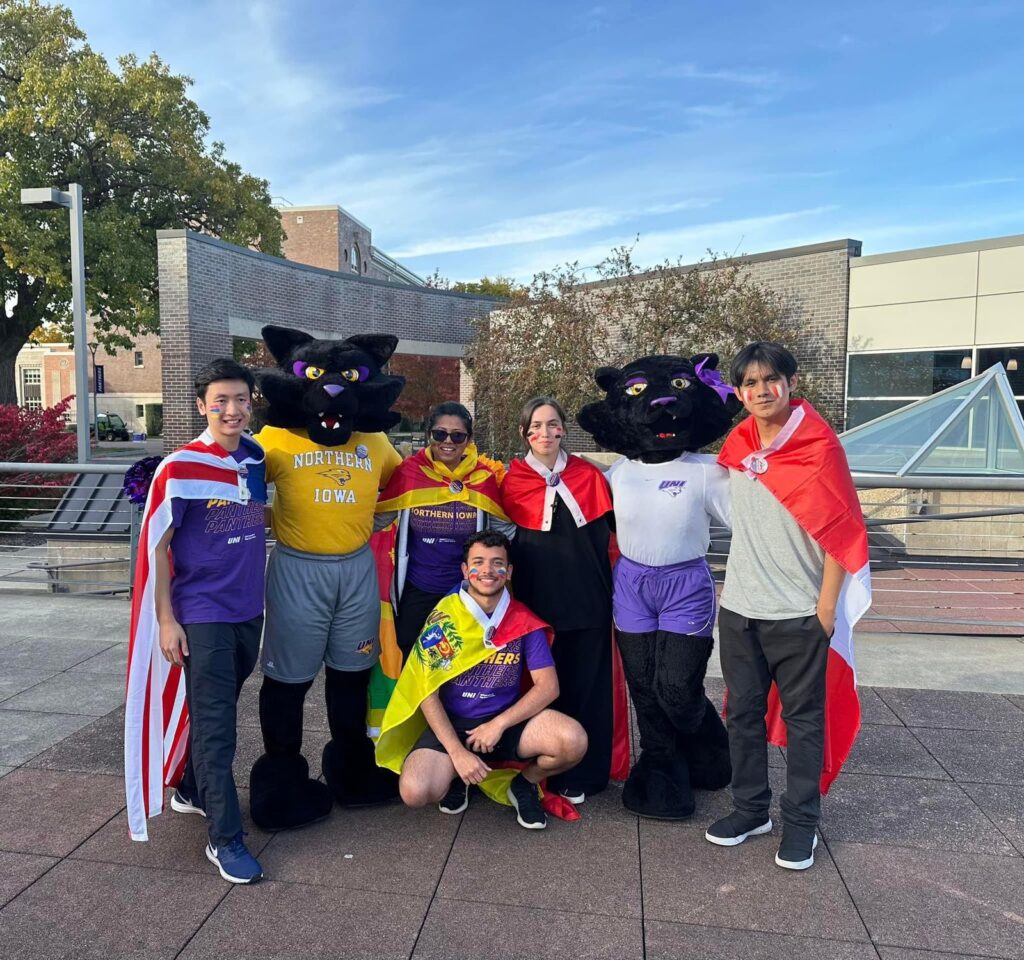
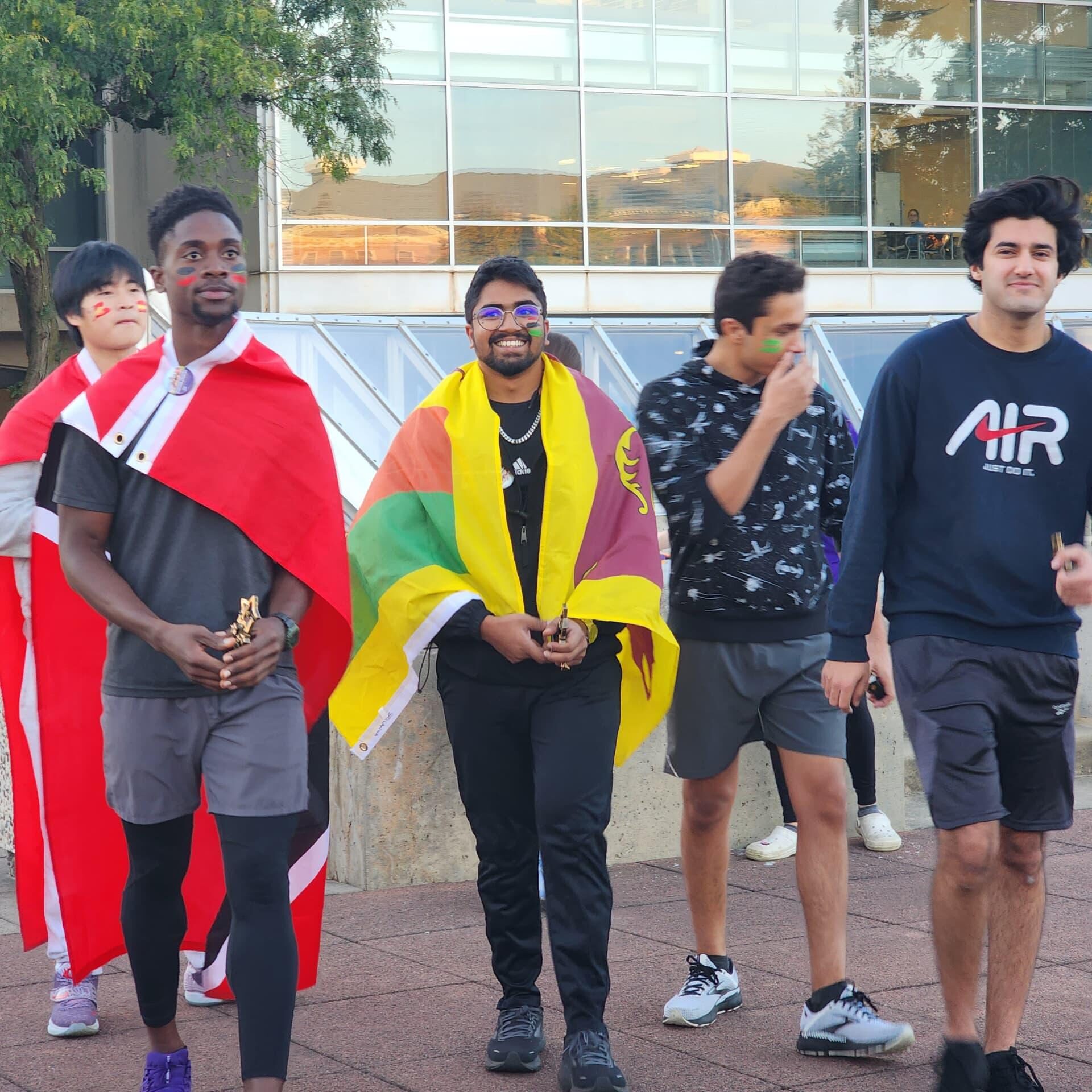
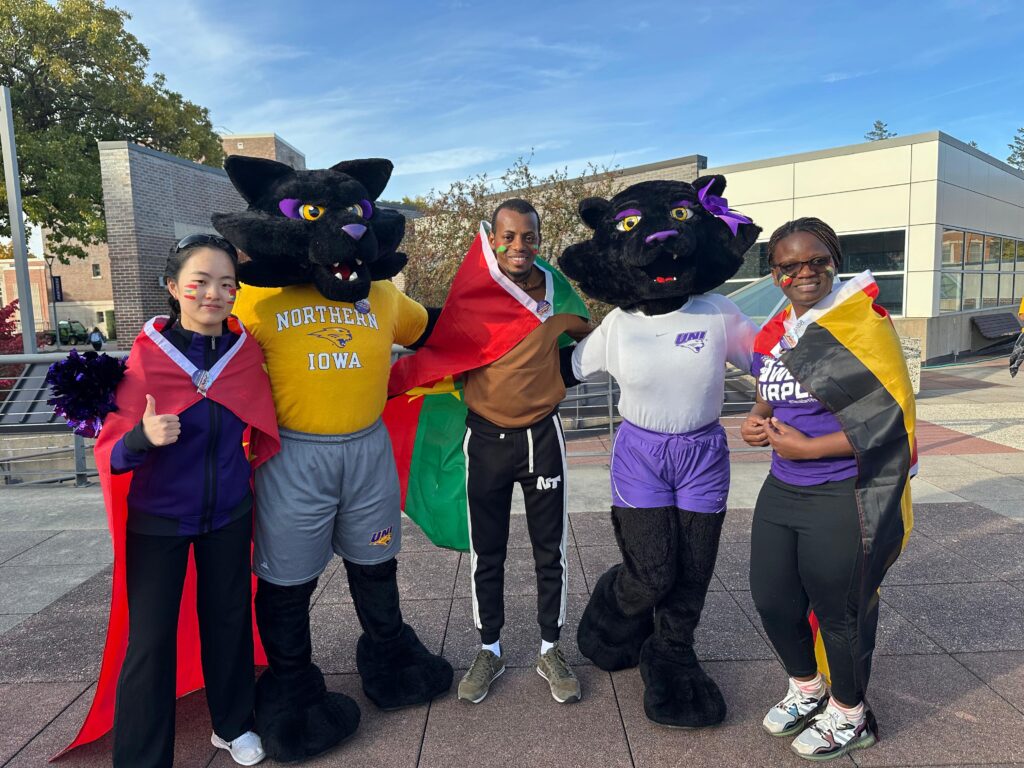
Some photos from the challenges
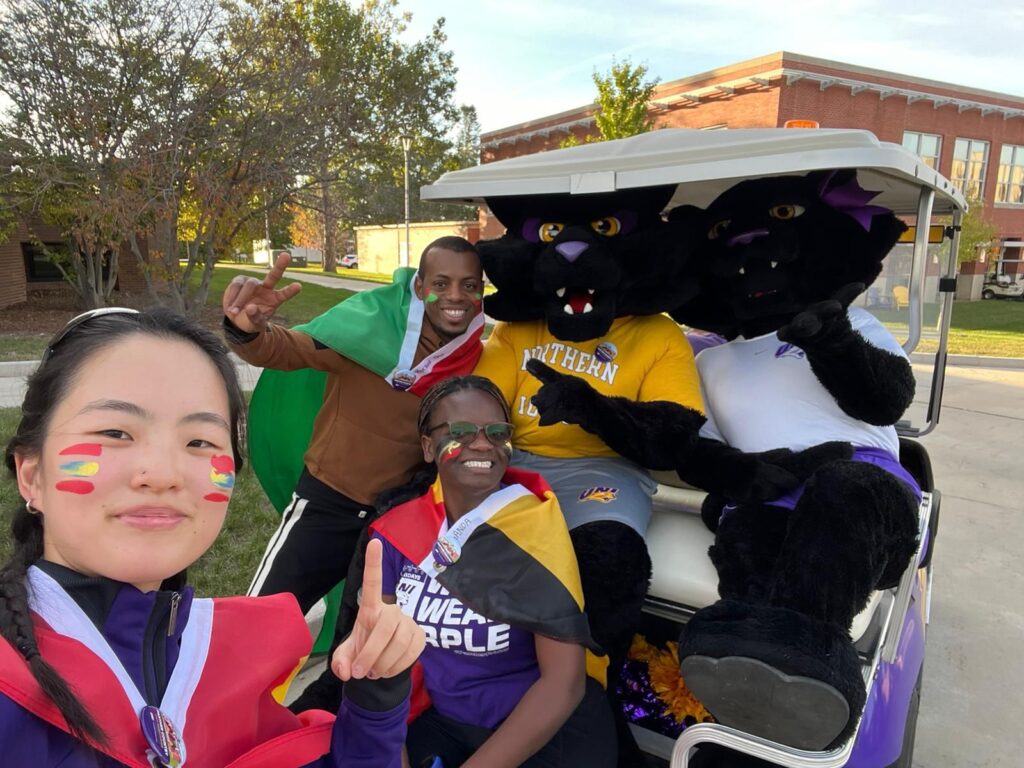
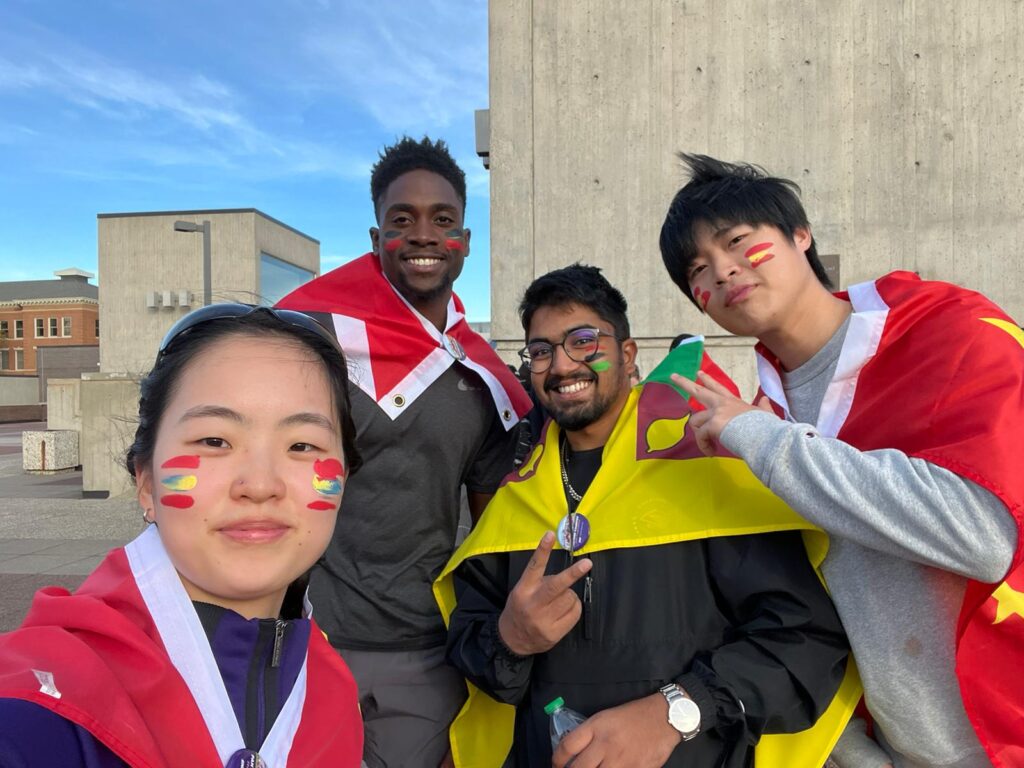
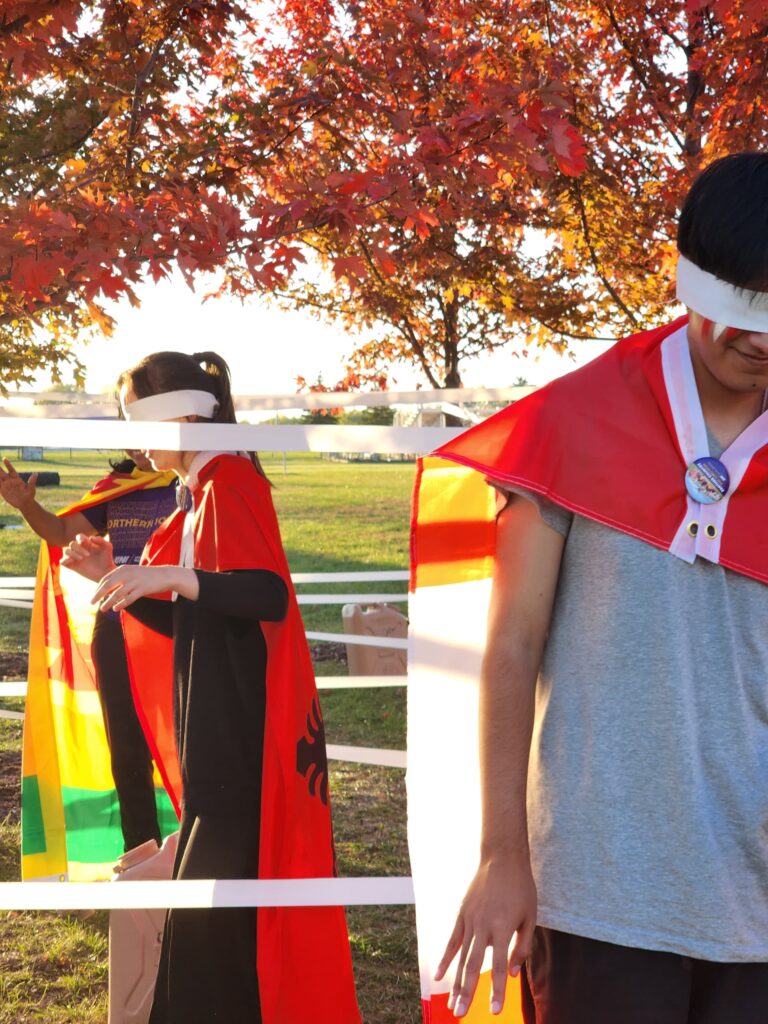

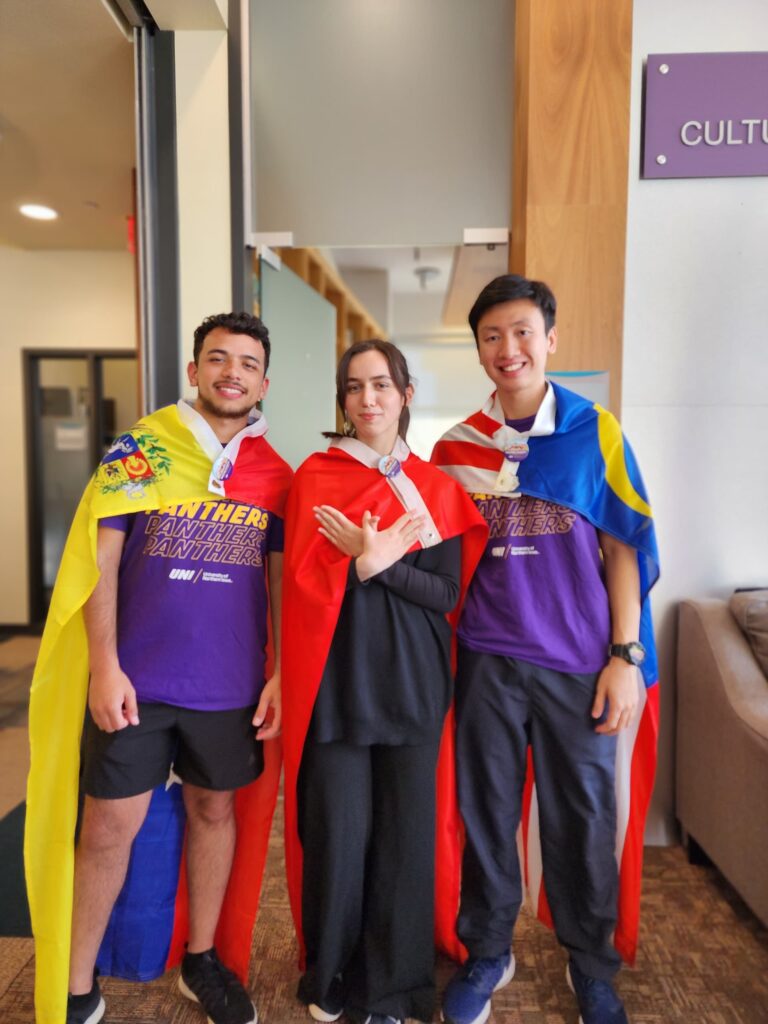
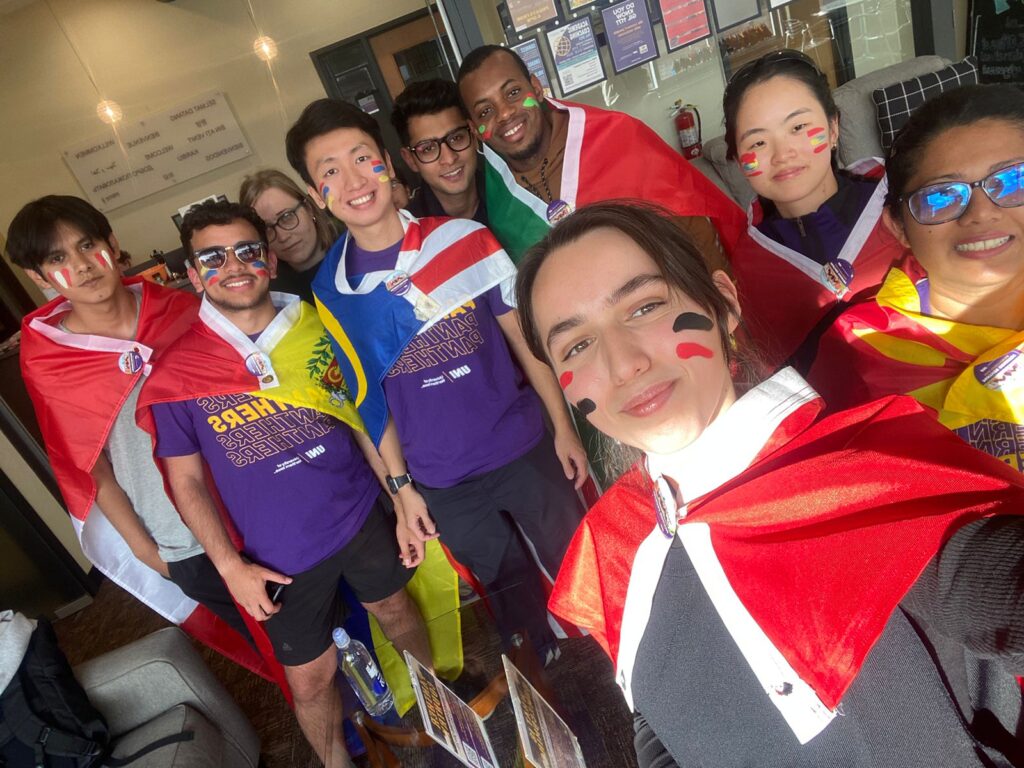

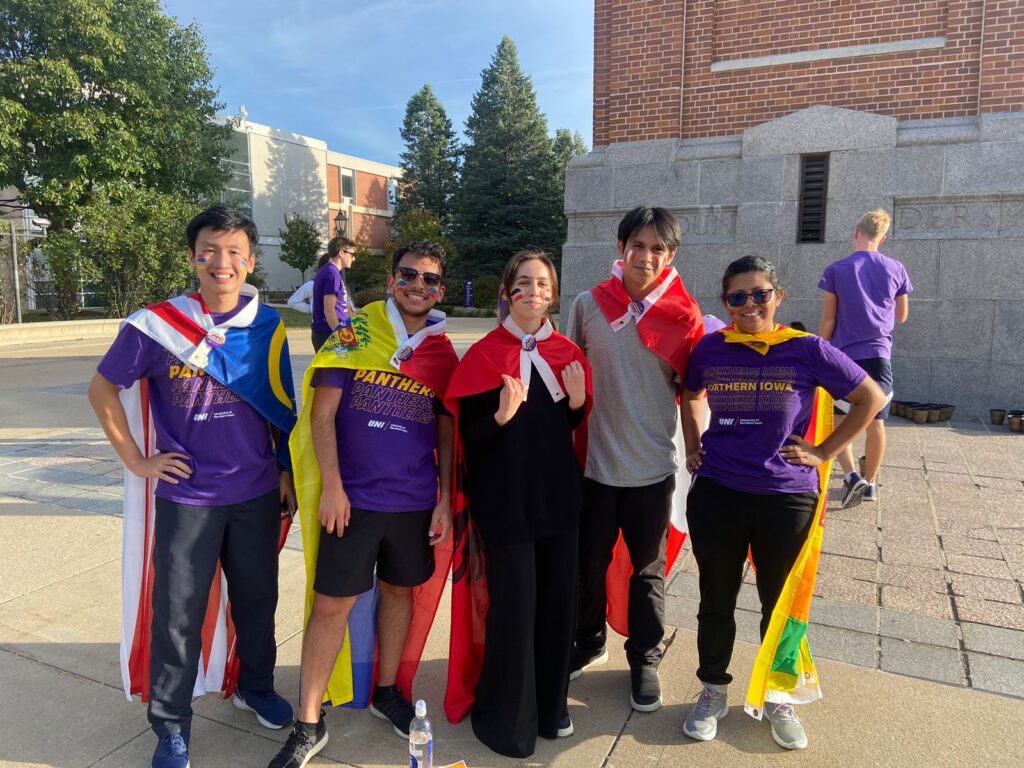
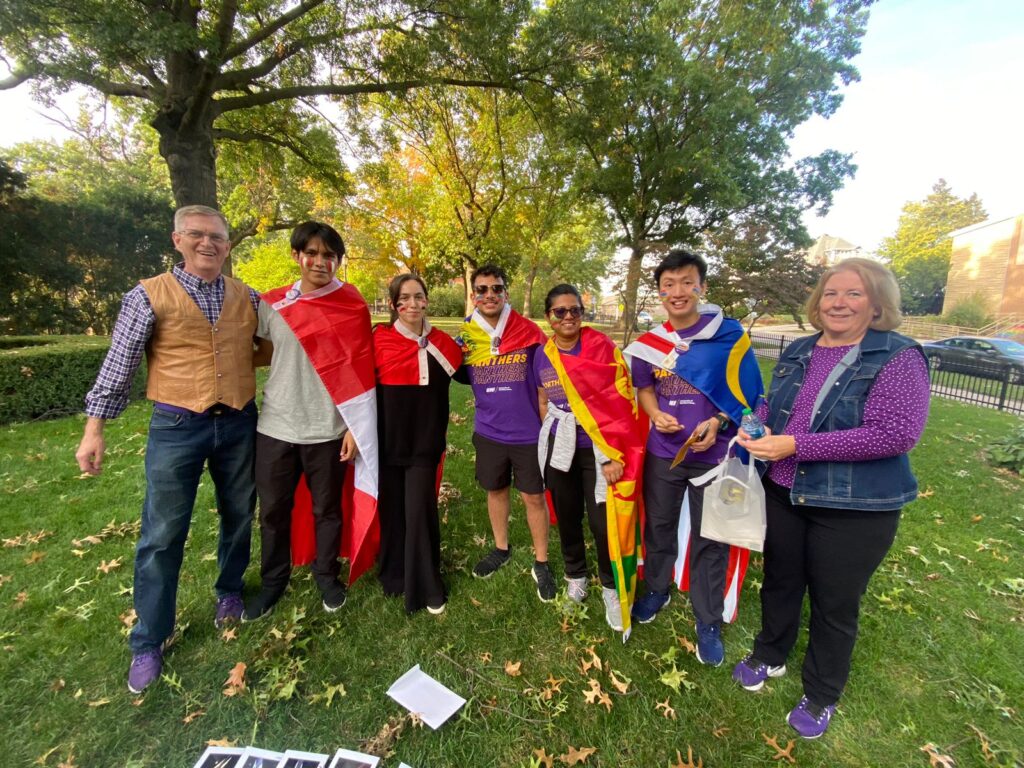
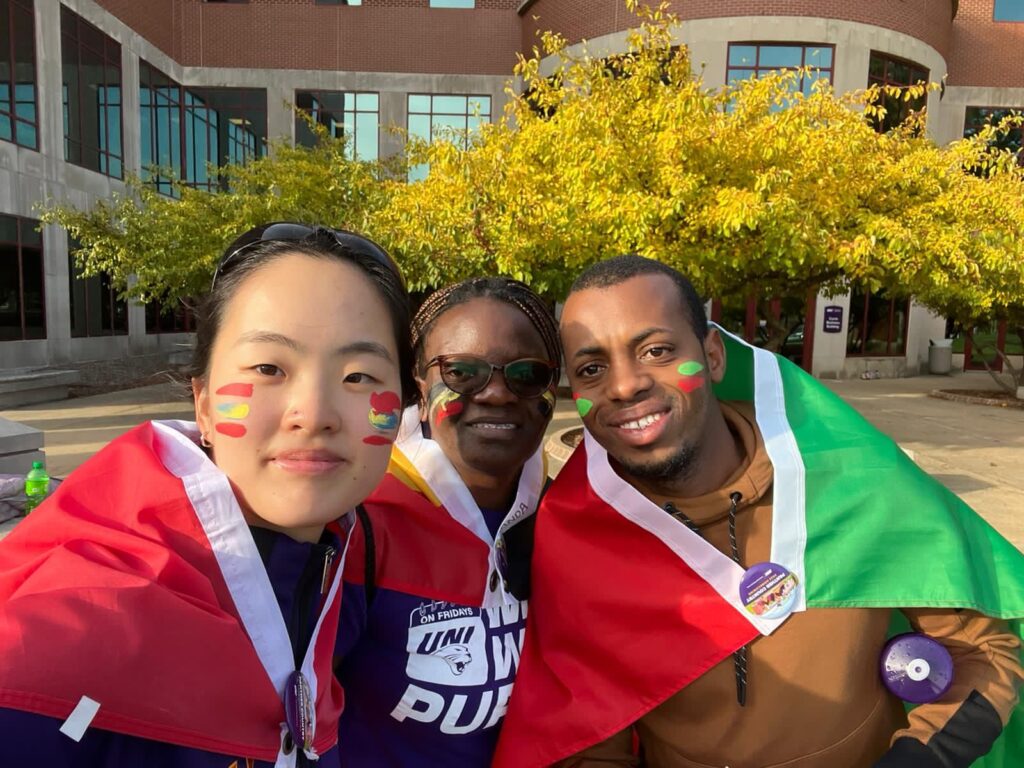
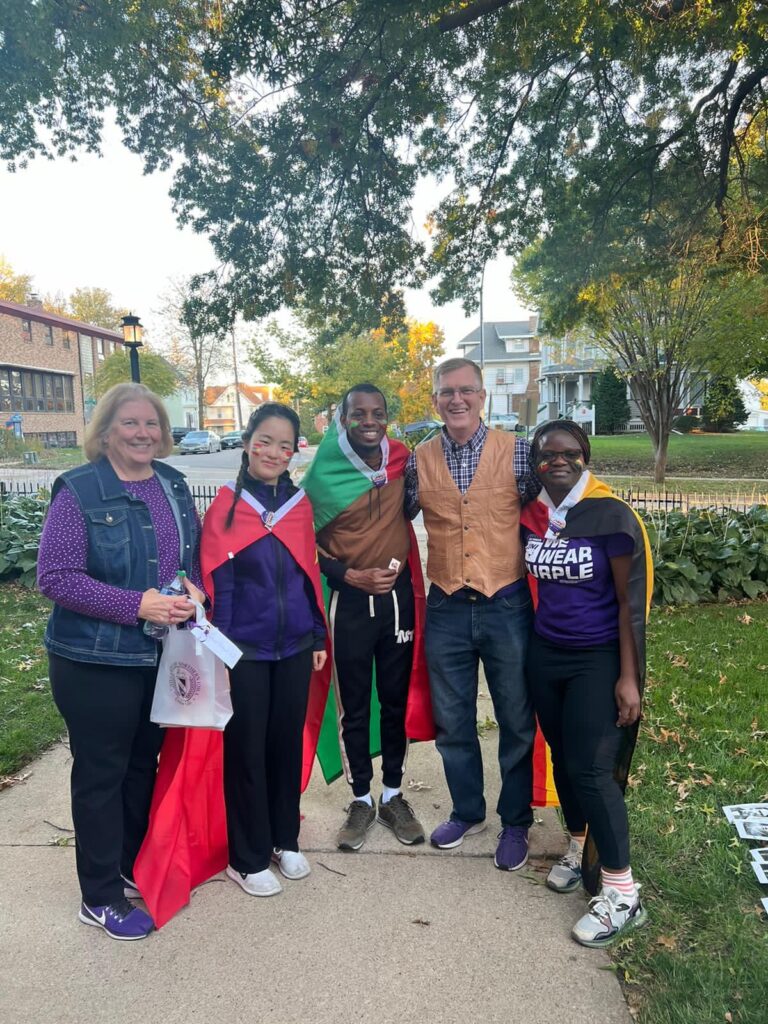
Our international team secured first place, competing against all the teams from UNI
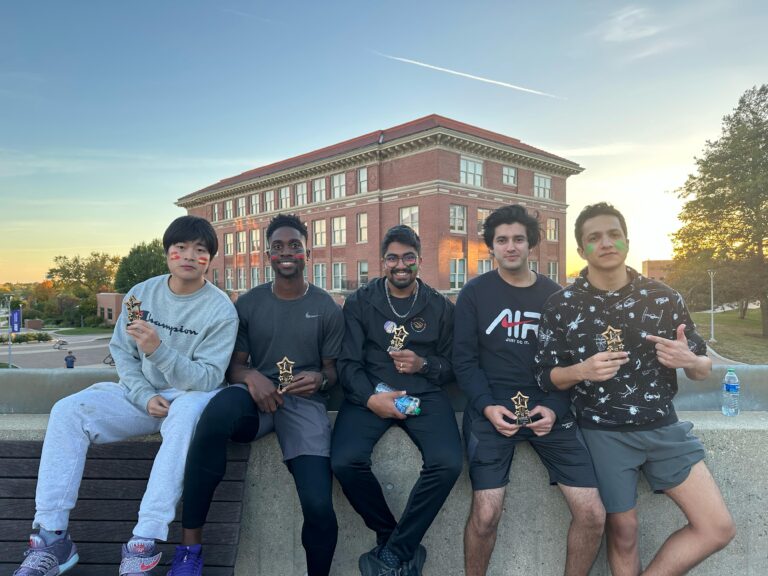
2) Homecoming Parade
The University of Northern Iowa’s homecoming parade is a vibrant and community-oriented event. As part of the festivities, local community members enthusiastically line the parade route. Waving and cheering in support of the students and their alma mater.
In this lively procession, international students play a special role. They proudly showcase their diverse cultures by donning traditional costumes and carrying flags representing their home countries. This cultural exchange adds a unique and enriching dimension to the parade. Celebrating the global diversity present within the university community. The parade becomes a dynamic reflection of the university’s commitment to fostering cross-cultural understanding. And unity among students and the wider community.
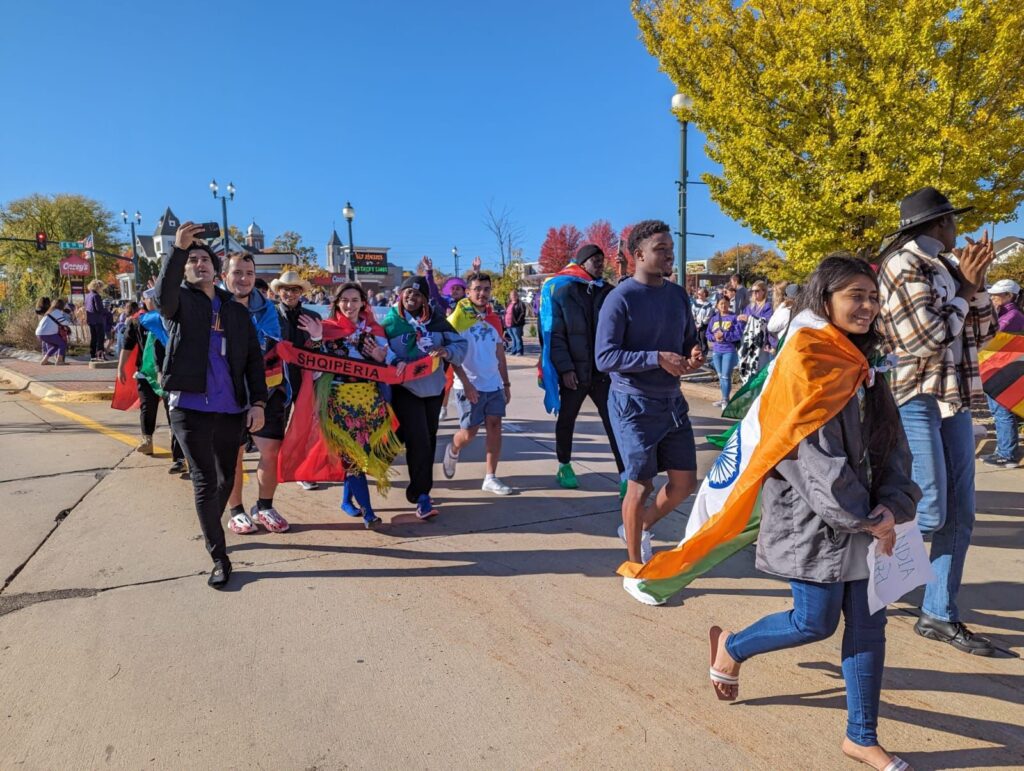

Introducing our fantastic international students!
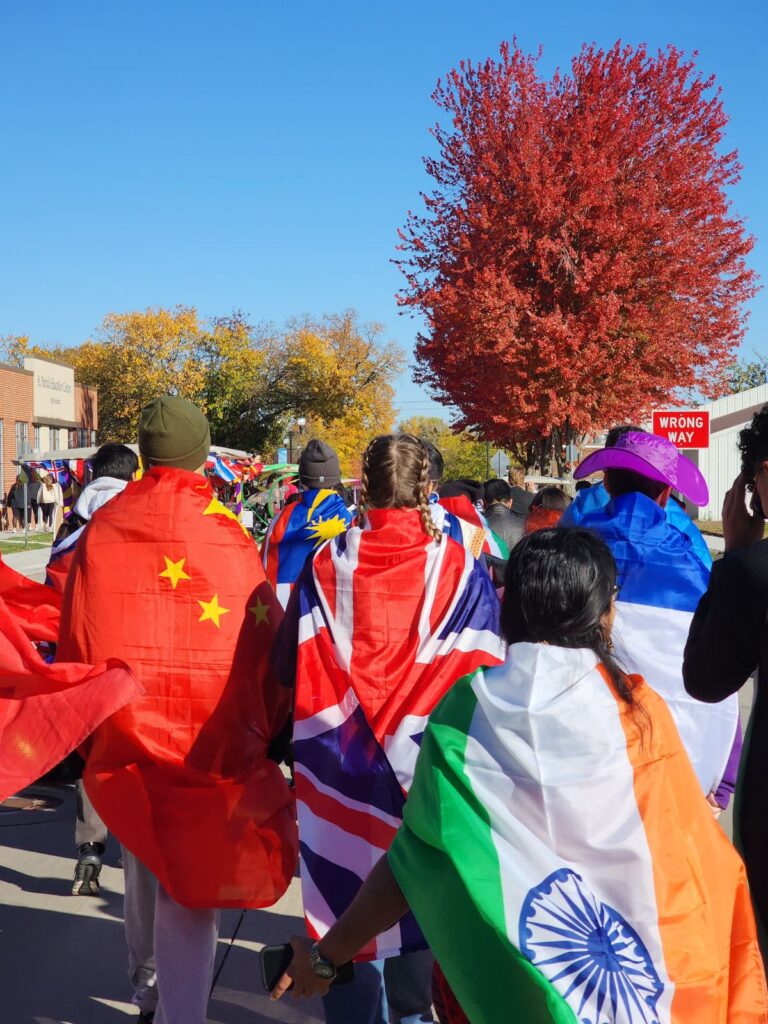
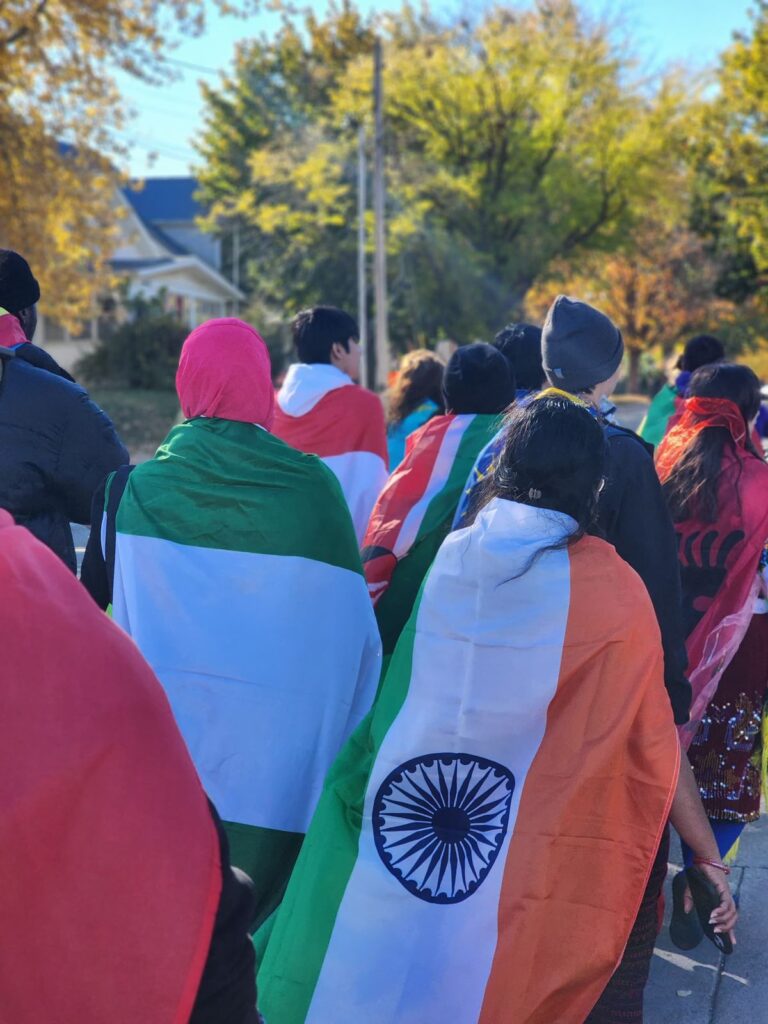
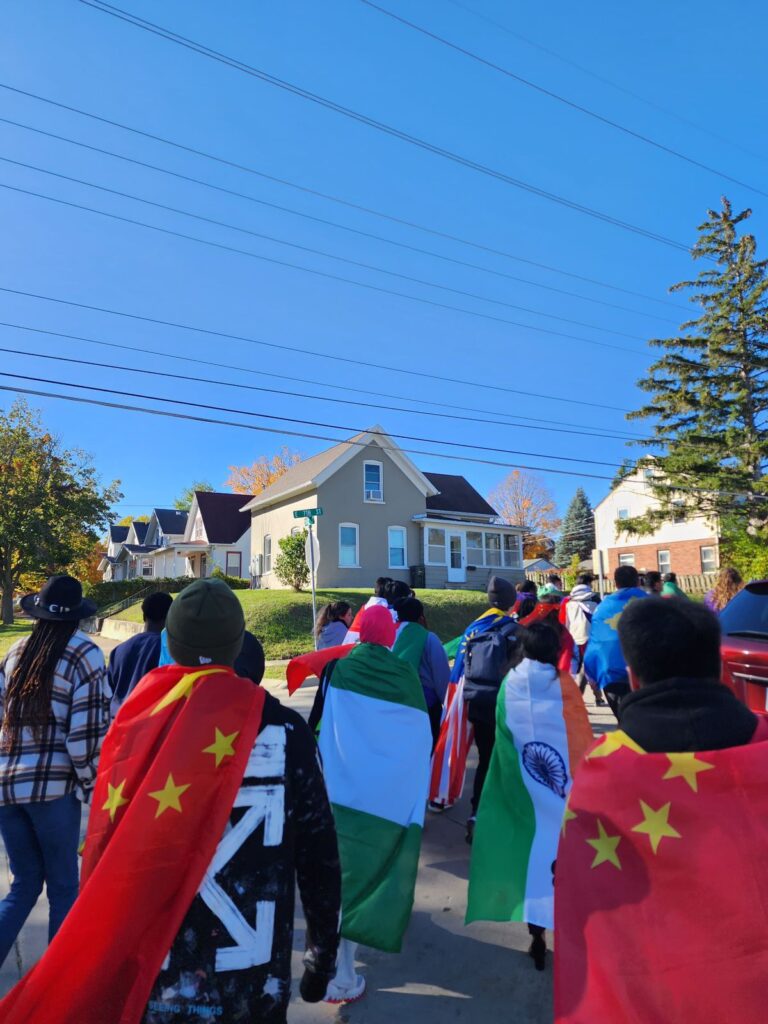


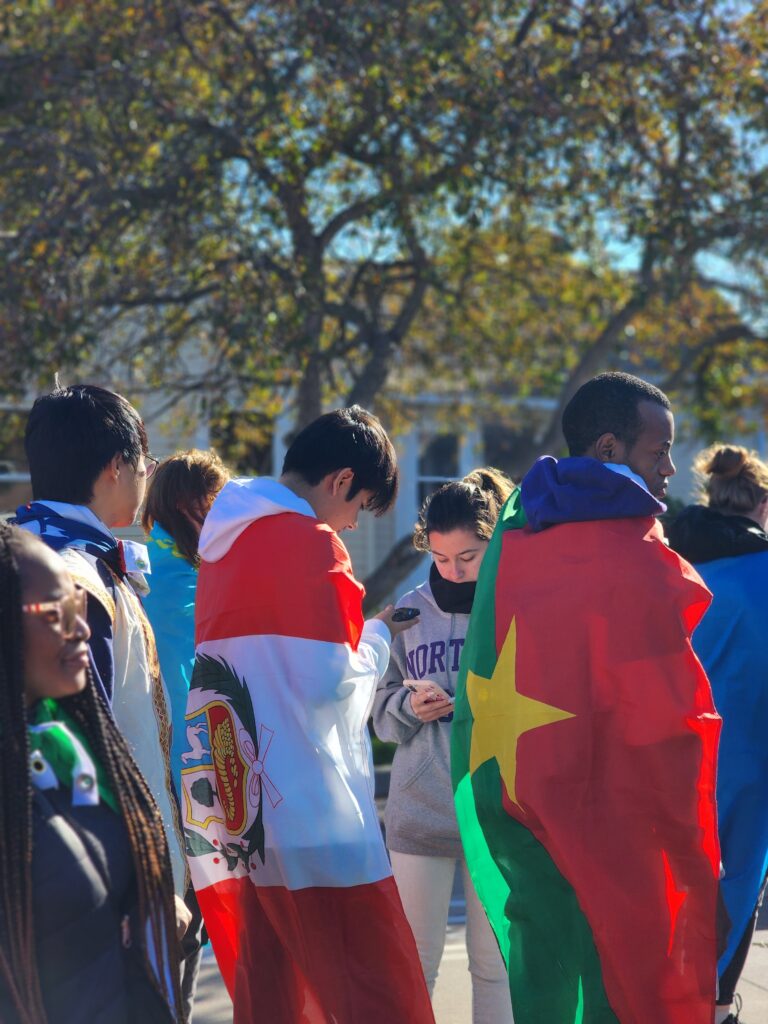
How About More of These Beautiful Moments?
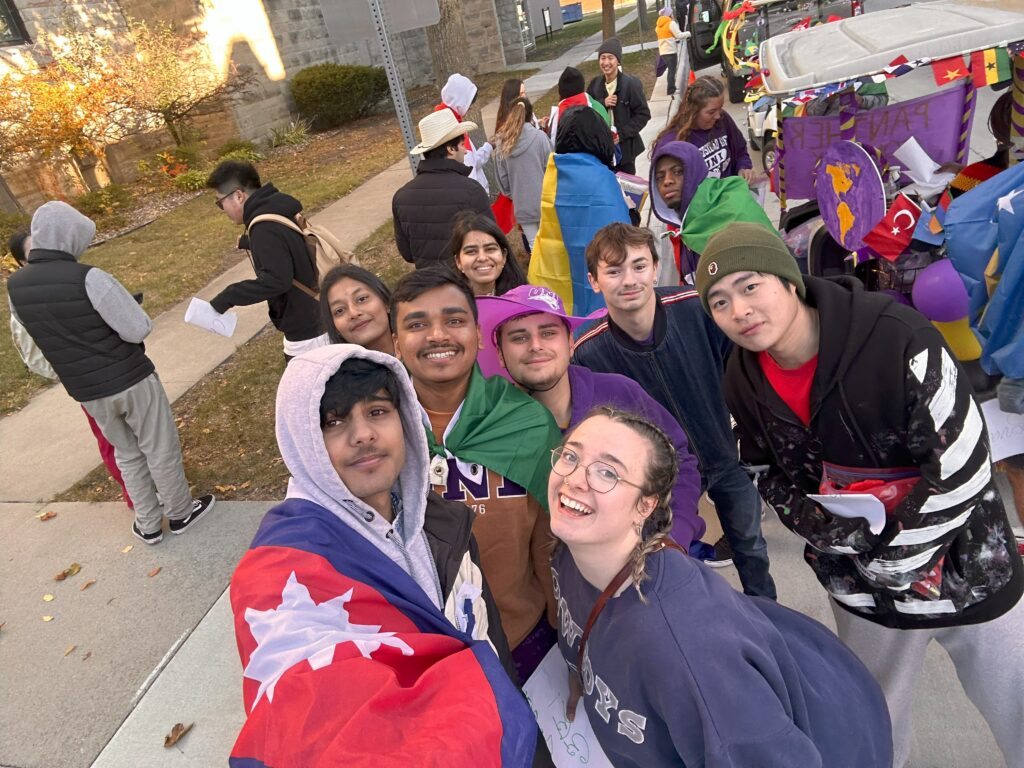
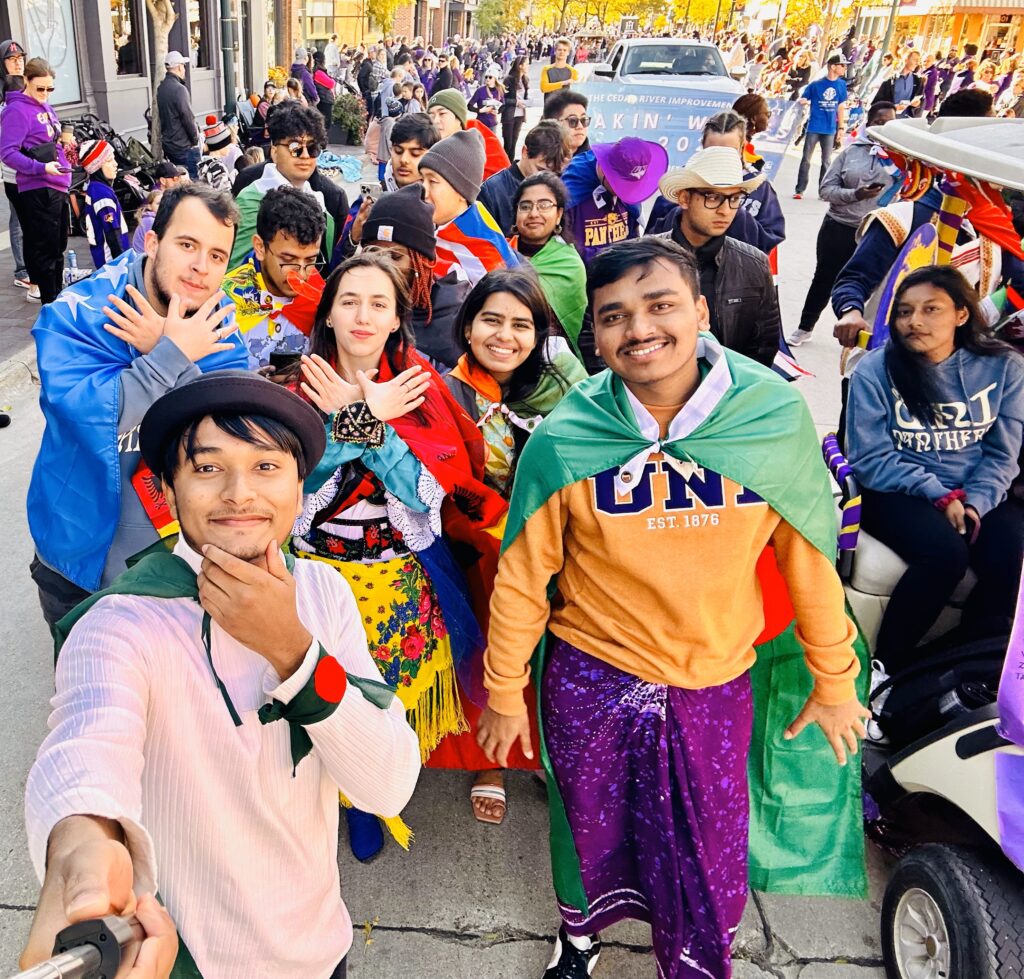
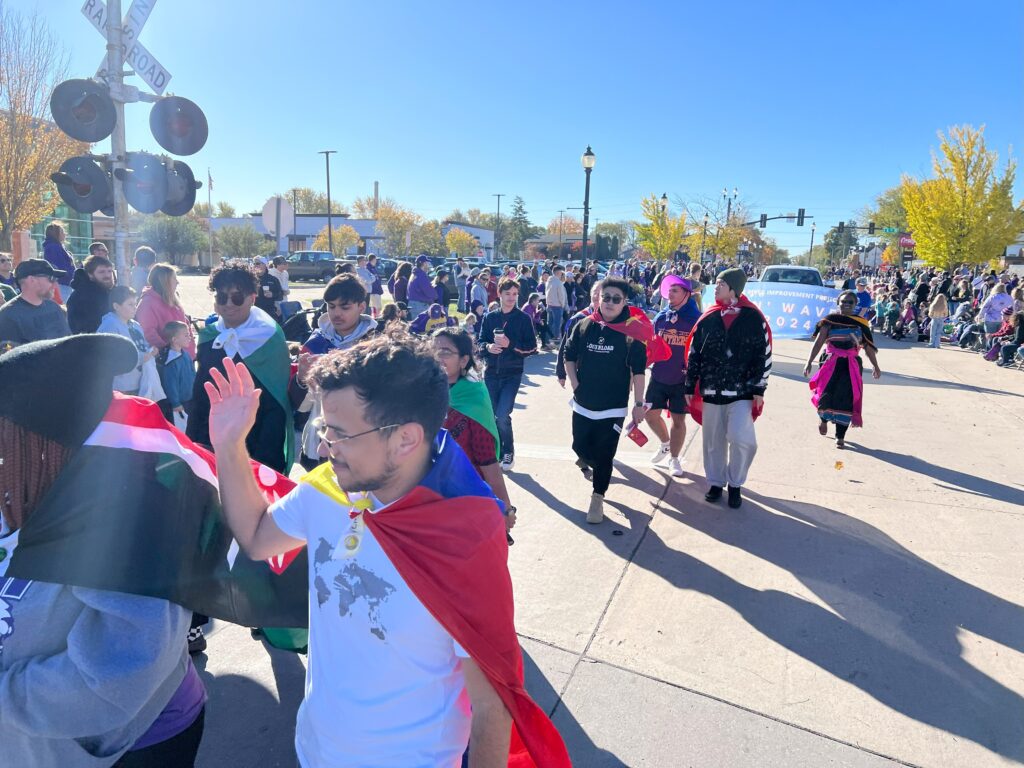



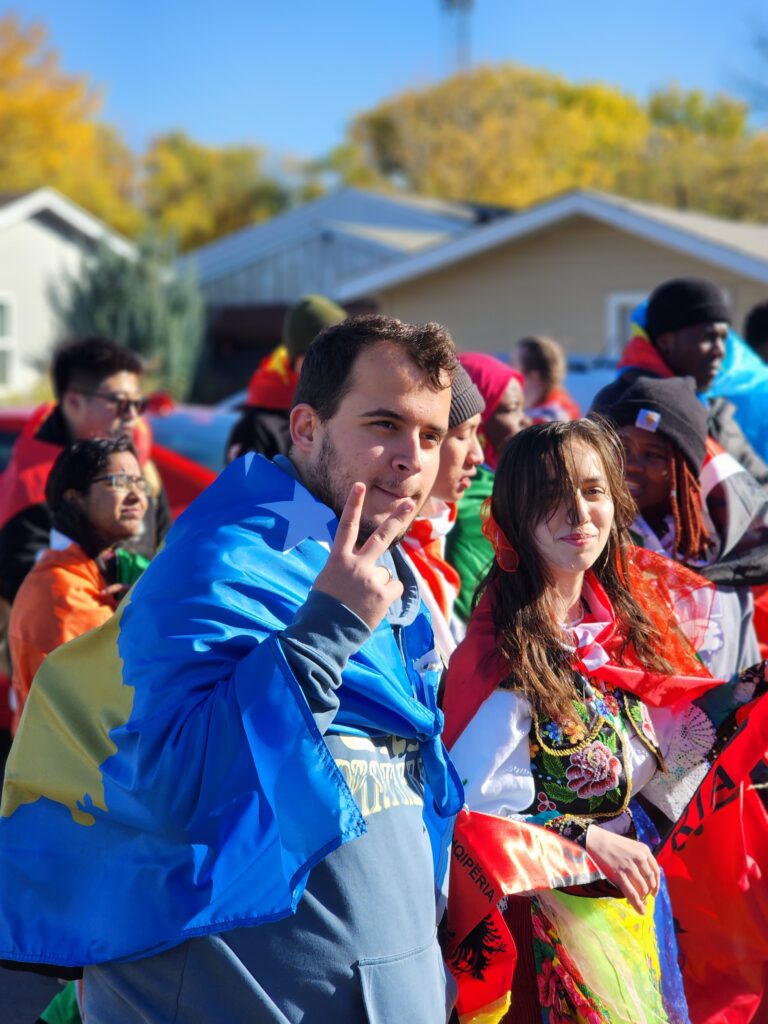
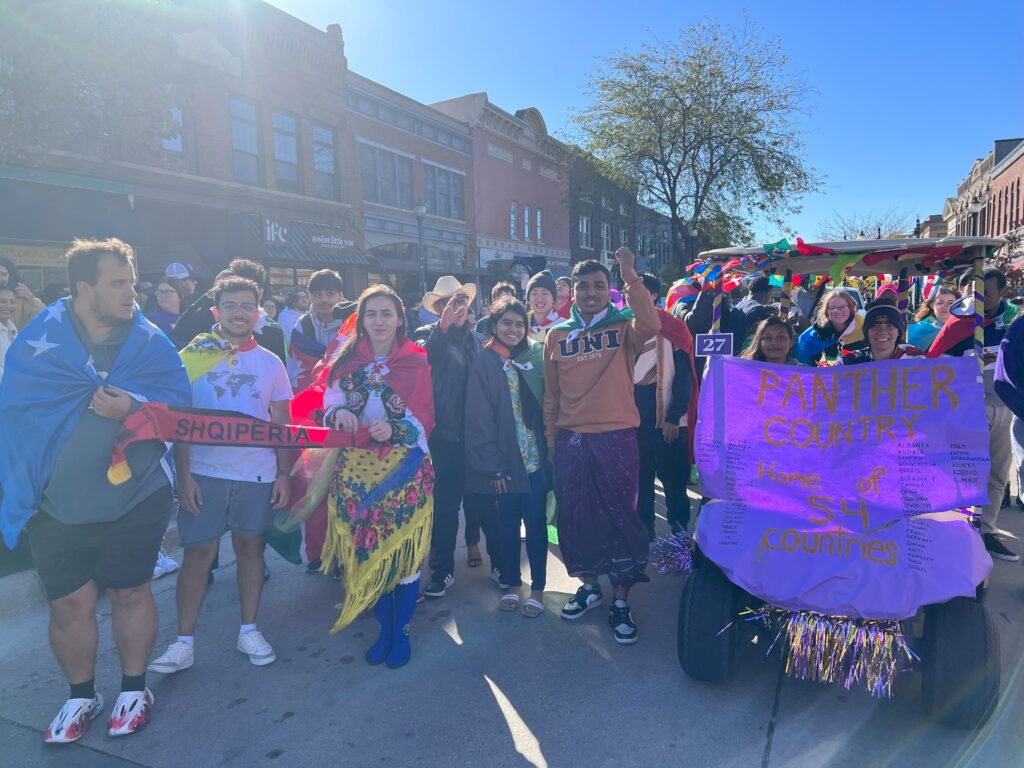


Homecoming, particularly for international students, is a cherished occasion filled with fond memories. It offers a unique opportunity to forge lasting connections, create unforgettable experiences. And feel a deep sense of belonging at their adopted university. It’s a time when cultural diversity meets school spirit! And students from all corners of the world come together to celebrate their academic journey. Most importantly create international friendships that last a lifetime.

What is homecoming?
Homecoming at the University of Northern Iowa, like at many other universities, is a traditional event. That celebrates the return of alumni to their alma mater. It typically includes a series of activities and festivities designed to foster a sense of school spirit. And unity among current students, alumni, and the broader university community. Homecoming events often feature activities such as a parade, football game, social gatherings, and other special events. Which may vary from year to year. It’s a time for alumni to reconnect with their university. Meet with old friends, and show support for their alma mater.
Here are two popular activities for international students to engage in during homecoming:
1) Amazing Race
The “Amazing Race” at the University of Northern Iowa is an exciting and competitive event. In this university version, students form teams and navigate a series of challenges, clues, and locations on campus. To complete tasks and race to the finish line. It’s a thrilling and team-building activity that combines problem-solving, physical challenges, and a sense of adventure. Making it a memorable part of the university experience.
International student teams participating in the “Amazing Race”



Some photos from the challenges











Our international team secured first place, competing against all the teams from UNI

2) Homecoming Parade
The University of Northern Iowa’s homecoming parade is a vibrant and community-oriented event. As part of the festivities, local community members enthusiastically line the parade route. Waving and cheering in support of the students and their alma mater.
In this lively procession, international students play a special role. They proudly showcase their diverse cultures by donning traditional costumes and carrying flags representing their home countries. This cultural exchange adds a unique and enriching dimension to the parade. Celebrating the global diversity present within the university community. The parade becomes a dynamic reflection of the university’s commitment to fostering cross-cultural understanding. And unity among students and the wider community.


Introducing our fantastic international students!






How About More of These Beautiful Moments?









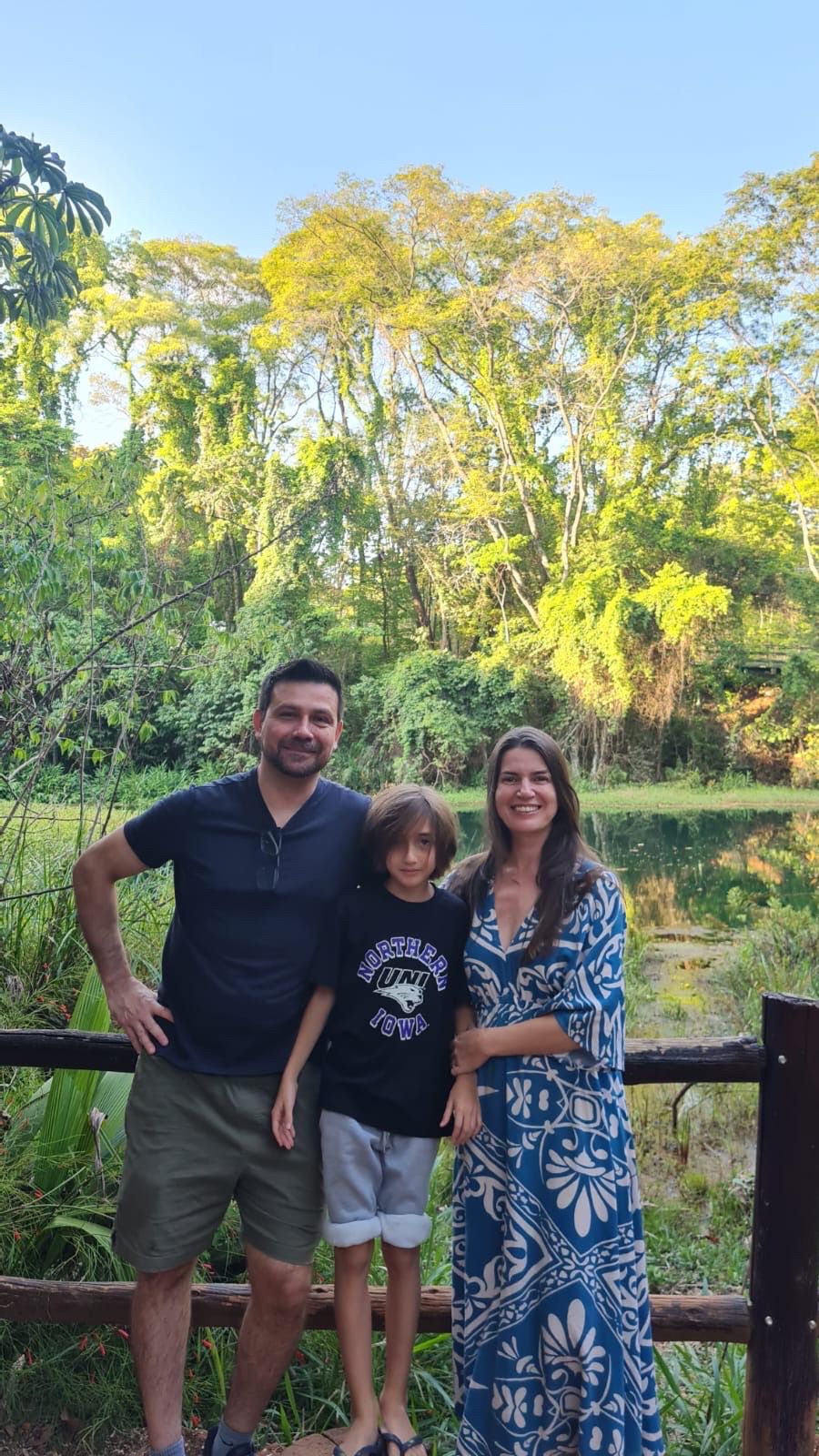
Welcome to “Exploring Brazil with Krisely.” Join us as we delve into fascinating facts about this beautiful country. Were you aware that Brazil experiences summer from December to March?
Meet Krisley!
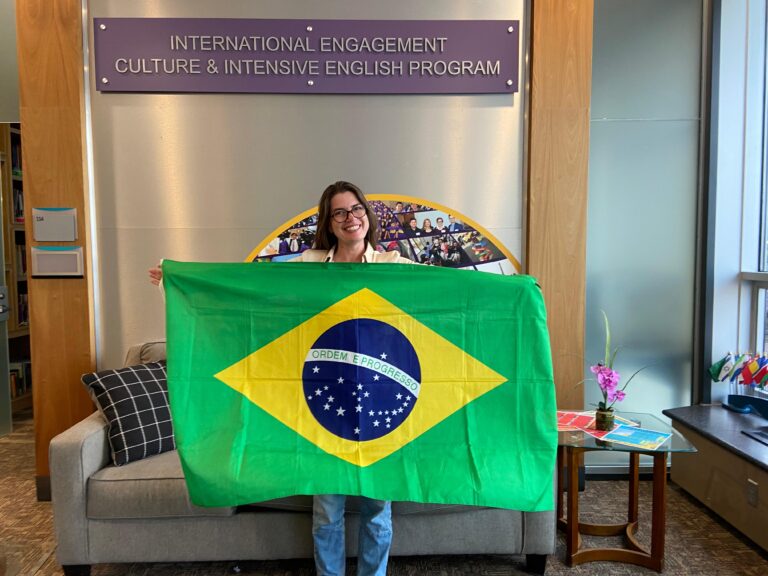
Oi!! Meu nome é Krisley Mendes e sou estudante do Programa de Cultura e Inglês Intensivo (CIEP) da University of Northern Iowa por oito semanas.Durante os meses de agosto e setembro, assisti aulas presenciais no campus da UNI e agora tenho aulas online estando no Brasil. Nasci e cresci no Brasil, onde o português é a única língua oficial.Decidi cursar o CIEP para aprimorar o inglês que aprendi nas escolas brasileiras. Terminei meu doutorado em Economia há alguns anos e me tornei professora da Universidade de Brasília.Voltar a ser estudante na UNI tem sido uma experiência rica e recompensadora para mim.
Hi!! My name is Krisley Mendes, and I am a student in the Culture and Intensive English Program (CIEP) at the University of Northern Iowa for eight weeks. During the months of August and September, I attended classes in person on the UNI campus and now I have been attending online classes from Brazil. I was born and raised in Brazil, where Portuguese is the only official language. I decided to attend CIEP to improve the English I learned in Brazilian schools. I finished my PhD in Economics a few years ago and became a professor at the University of Brasília. Returning to being a student at UNI has been a rich and rewarding experience for me.
Krisley Mendes – Professor at University of Brasília
Where is Brazil located?
Brazil is located in South America, covering a vast area in the eastern part of the continent. It is the largest country in South America and shares borders with several countries. Including Argentina, Bolivia, Colombia, Guyana, Paraguay, Peru, Suriname, Uruguay, and Venezuela. It is known for its diverse landscapes. Including the Amazon Rainforest, extensive coastline along the Atlantic Ocean, and the famous Amazon River.
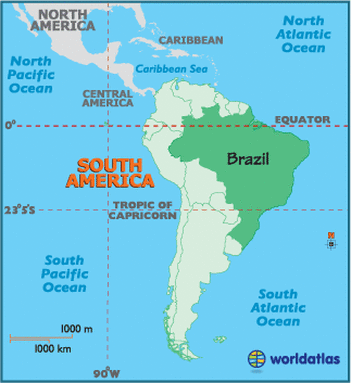
Before delving deeper into Brazil, let’s introduce you to Krisley’s wonderful family;
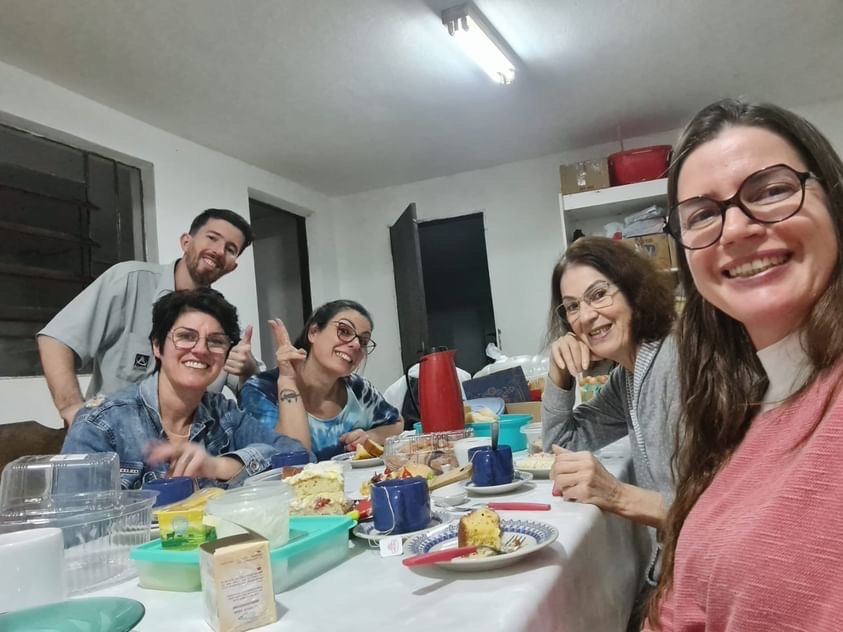
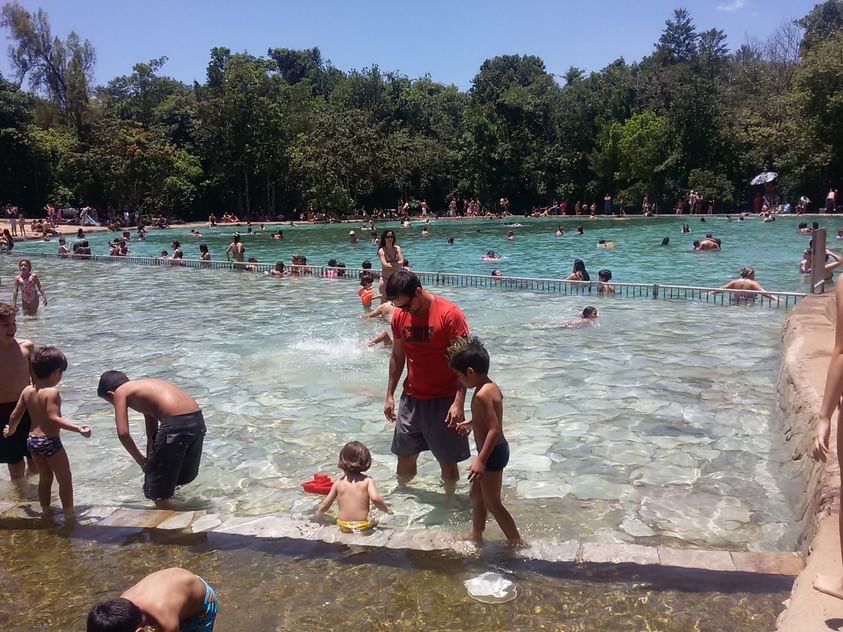
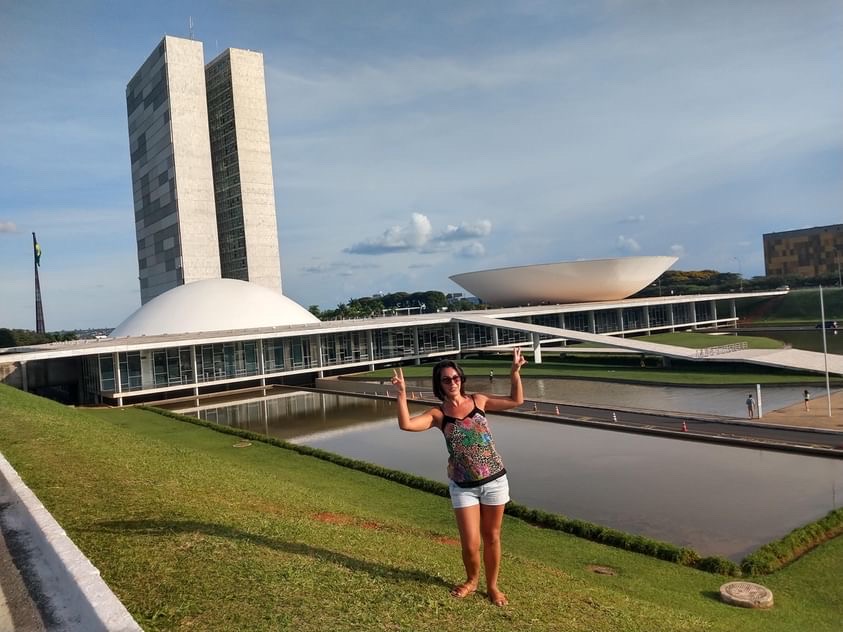


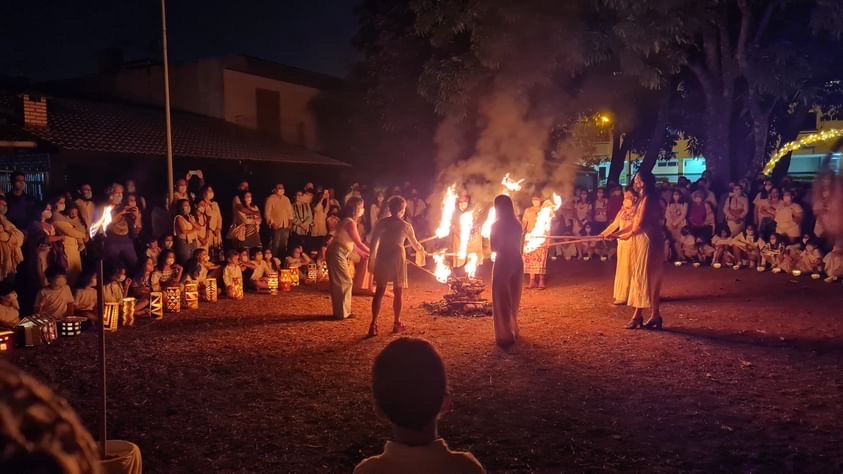
Rio de Janeiro
Rio de Janeiro, also known as Rio, serves as the capital of the state of Rio de Janeiro. Brazil’s third-most-populous state. Moreover, it ranks as the second-most-populous city in Brazil. Its name, Rio de Janeiro, translates to “River of January” in Portuguese.
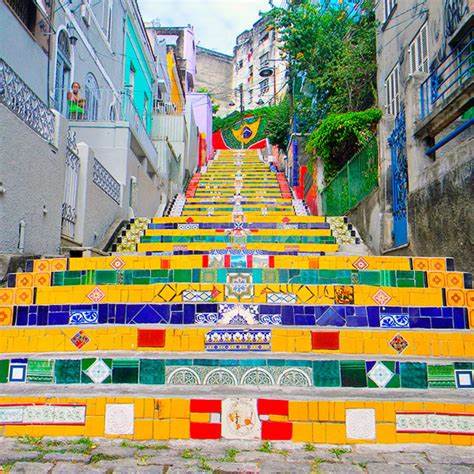
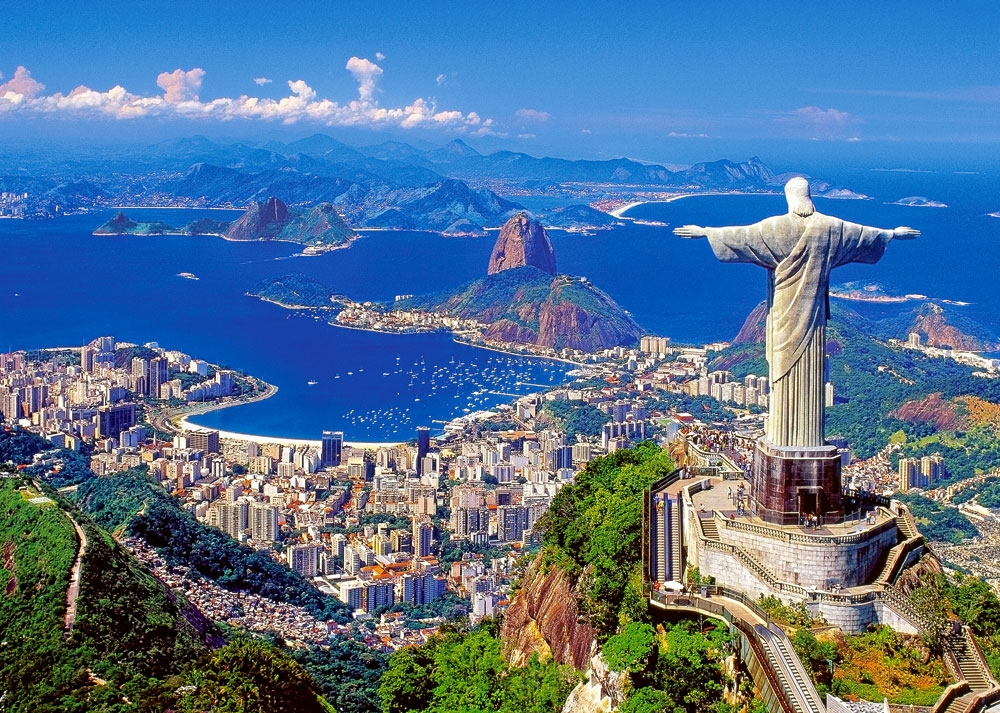
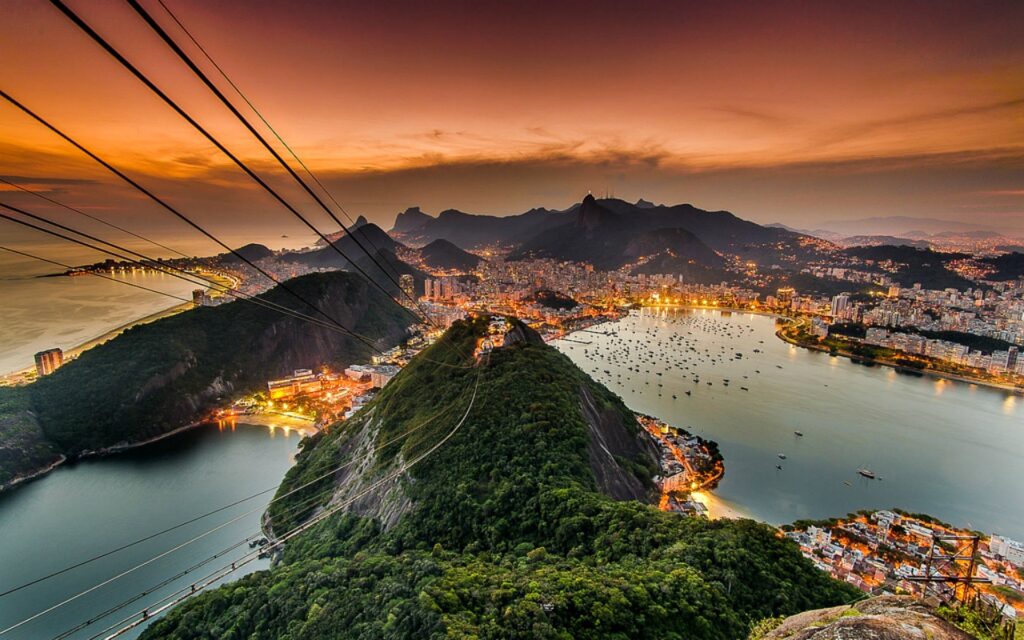
The iconic statue in Rio de Janeiro is called “Christ the Redeemer.” It represents Jesus Christ with outstretched arms, symbolizing peace and the idea of Christ’s role as a savior. The statue, which stands atop Corcovado Mountain, is a symbol of Christianity. Is one of the most famous landmarks in Brazil and the world. It also serves as a symbol of Rio de Janeiro itself and is a significant cultural and religious icon.
Foz do Iguacu
Foz do Iguaçu, also known as the “Iguazu River Mouth. A Brazilian city situated along the border of the stunning Iguaçu Falls. This city holds the rank of being the seventh largest in the state of Paraná. The Iguaçu Falls, found at the border shared by Argentina and Brazil, encompass around 257 distinct waterfalls. Have earned the prestigious title of one of the “New Natural Seven Wonders of the World.
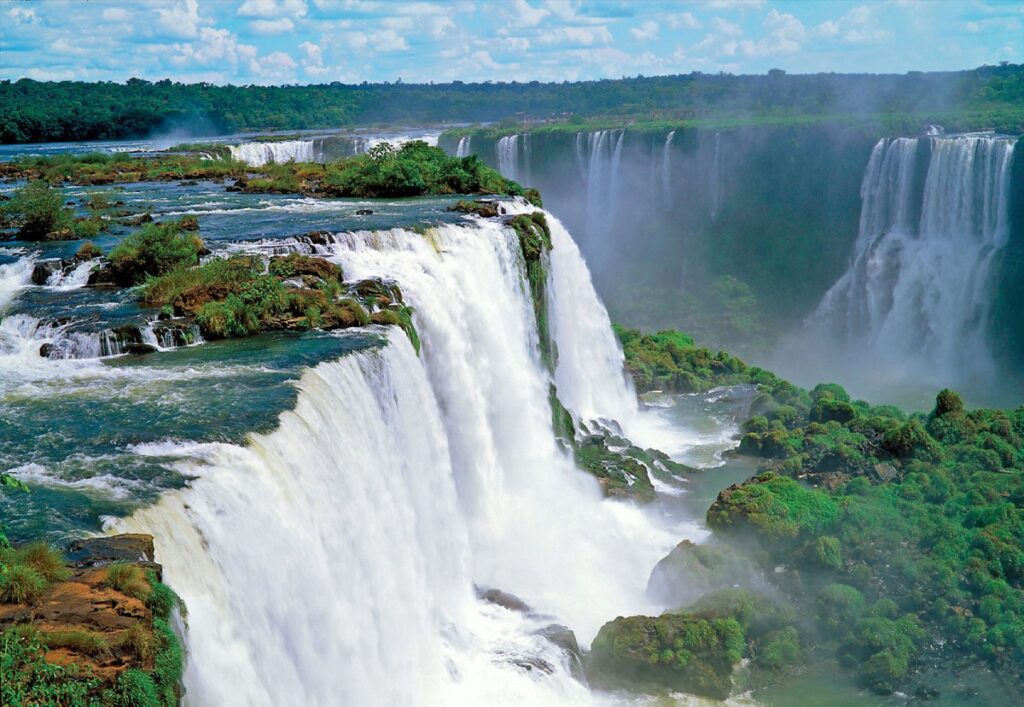
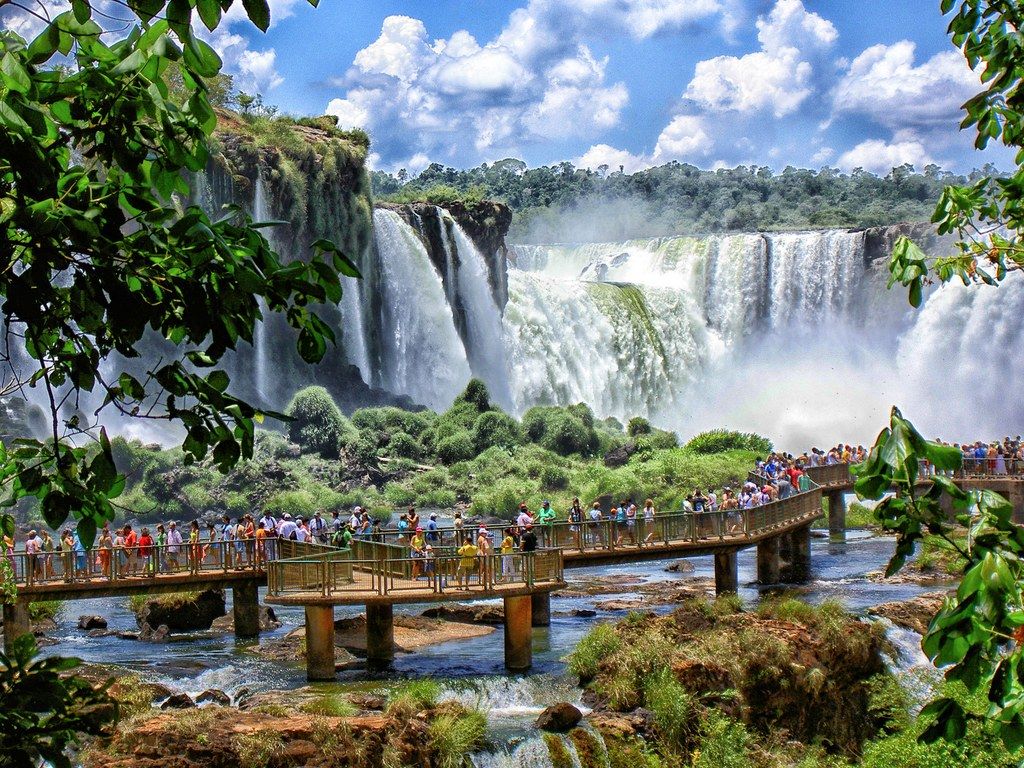

Sao Paulo
São Paulo stands as the most populous city in Brazil. Serves as the capital of the state of São Paulo. It’s worth noting that São Paulo is the most populous city globally outside of Asia. And ranks as the fourth-largest city by population when considering its city limits.
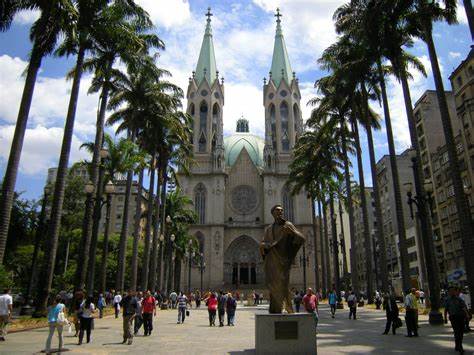
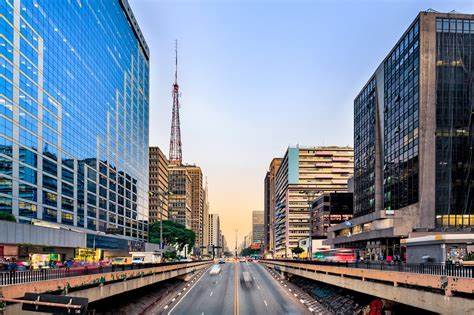
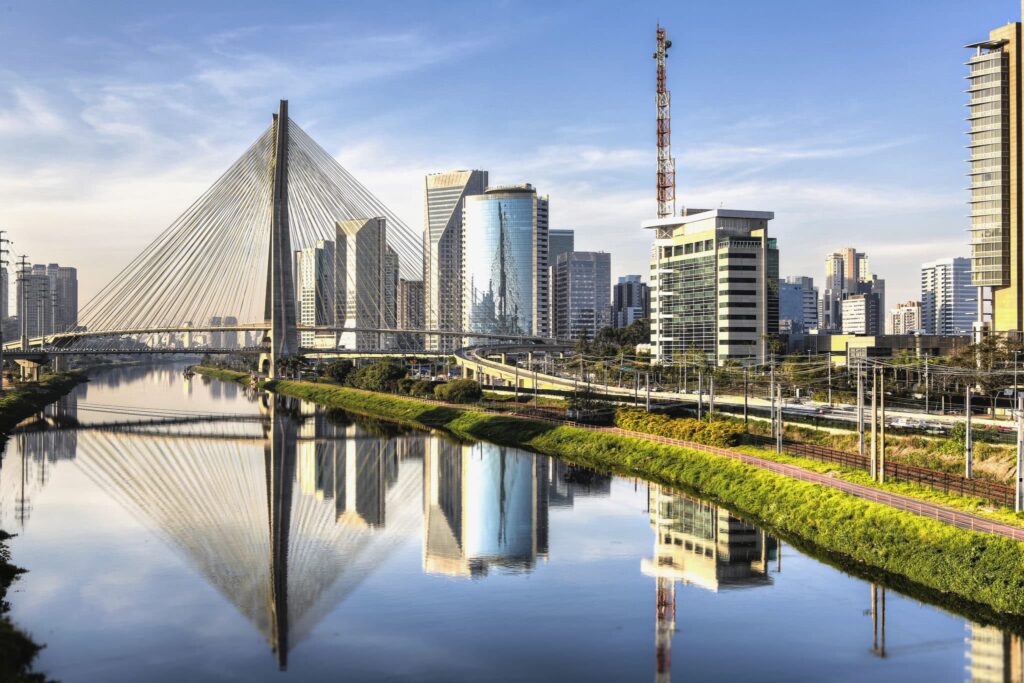
Florianopolis
Florianópolis, located in the South region of Brazil. Holds the distinction of being the capital and the second largest city in the state of Santa Catarina. The city encompasses Santa Catarina Island, along with several smaller surrounding islands, as well as a portion of the mainland.
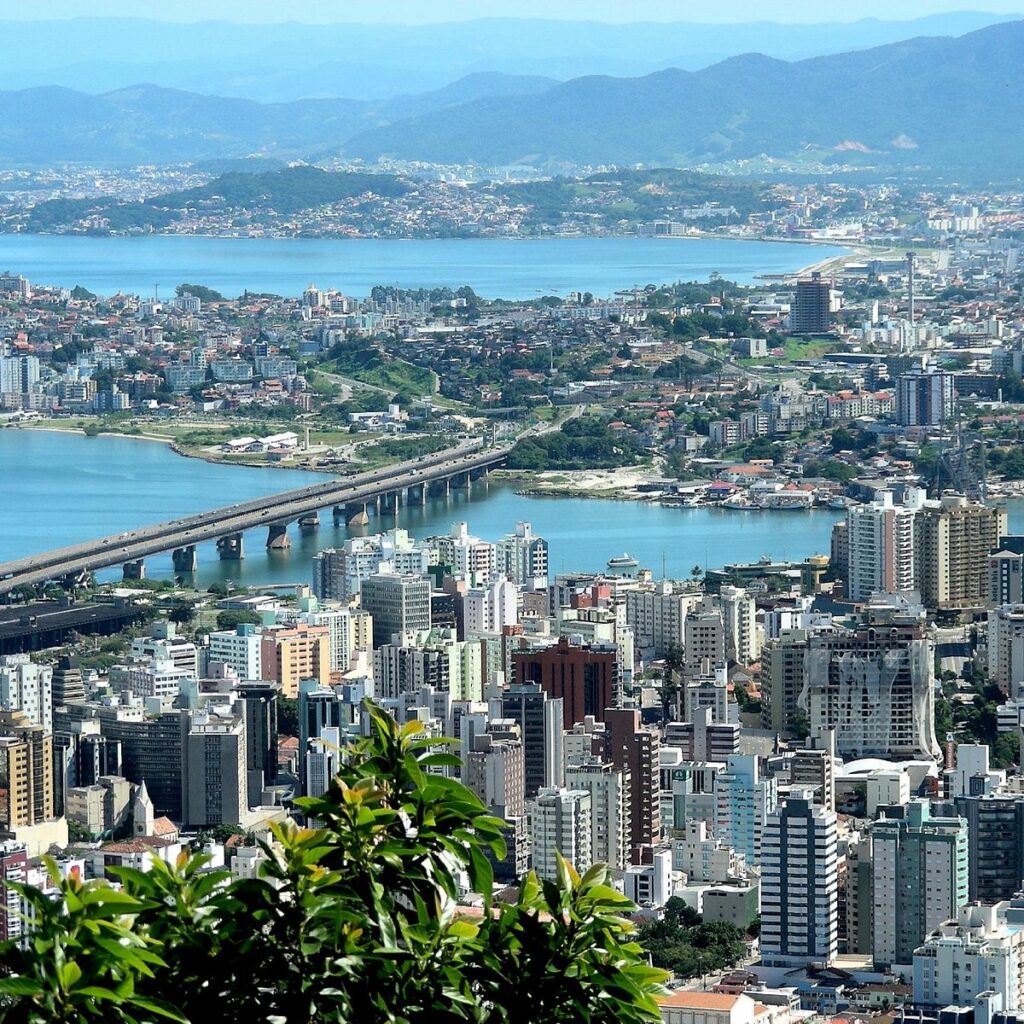
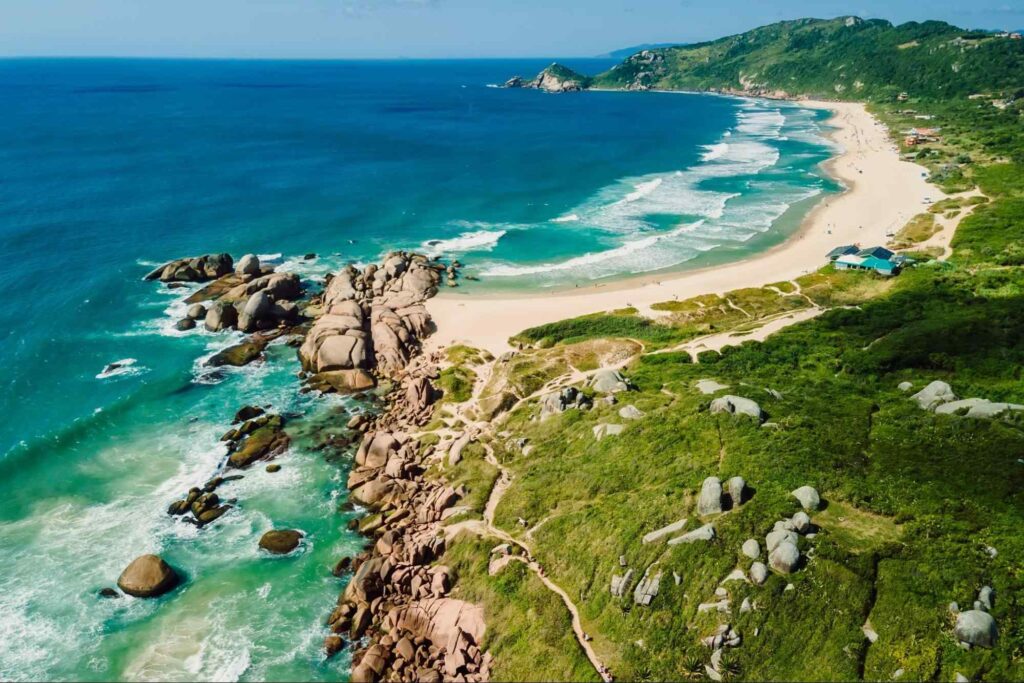
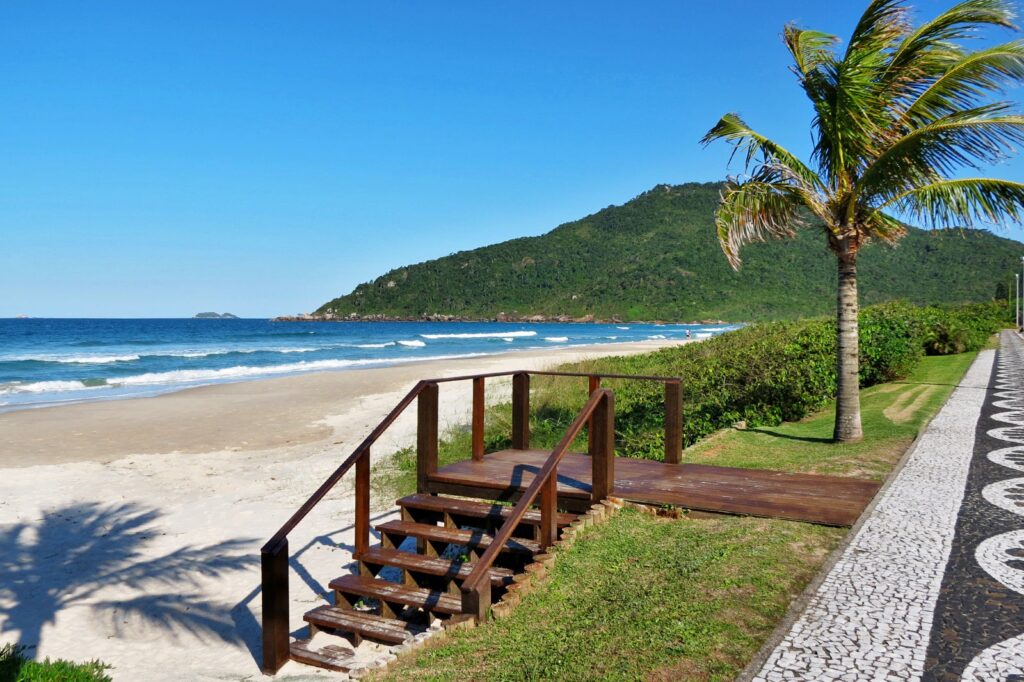
Traditional food of Brazil
 Churrasco a beloved Brazilian barbecue technique that embraces a rich tradition of grilling. In this culinary art, succulent pieces, tantalizing slices, hearty steaks, and flavorful chops of various meats, including beef, veal, lamb, pork, and chicken. Are meticulously skewered and slow-grilled over an open wood fire.
Churrasco a beloved Brazilian barbecue technique that embraces a rich tradition of grilling. In this culinary art, succulent pieces, tantalizing slices, hearty steaks, and flavorful chops of various meats, including beef, veal, lamb, pork, and chicken. Are meticulously skewered and slow-grilled over an open wood fire.
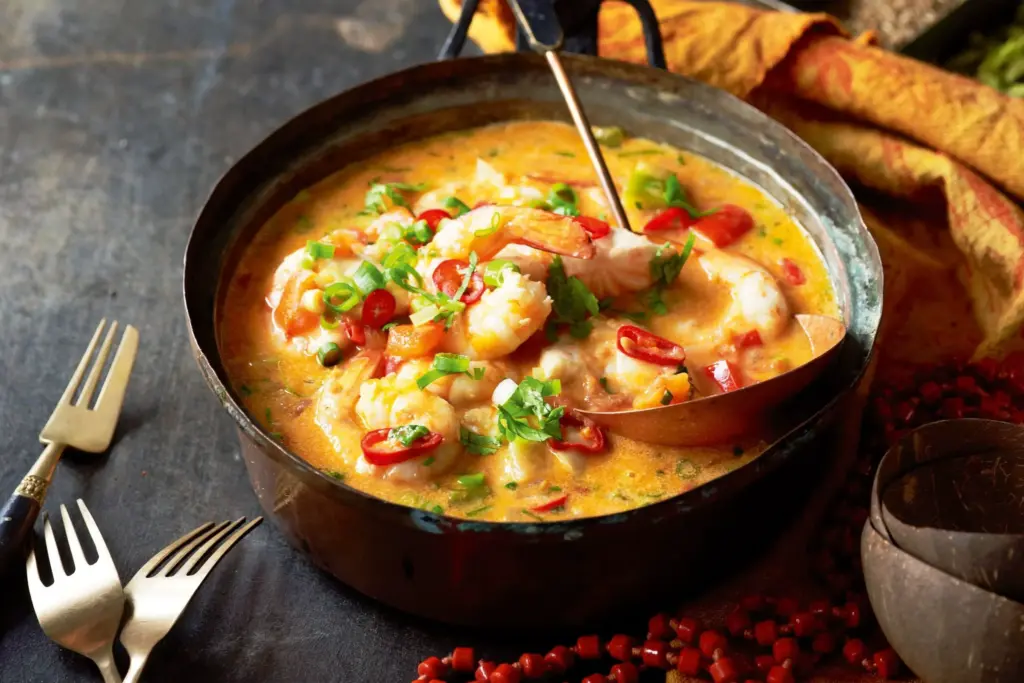
Moqueca a Brazilian seafood stew featuring a base of palm oil and coconut milk or olive oil. It can be combined with fish, shrimp, or both. This dish is traditionally cooked in clay pots with vegetables and herbs, and it’s commonly served over rice. Its origins date back to 300 years ago. Influenced by Portuguese introduction of coconuts and African slaves introducing palm oil to Brazilian cuisine.
Traditional Costumes
Brazil doesn’t have a single national costume. But rather an array of traditional attire from various regions across the vast country. These folk garments have historically provided people with a sense of identity, belonging. They often reflect one’s societal status, with distinct clothing for the elite and contrasting attire for rural and peasant communities.

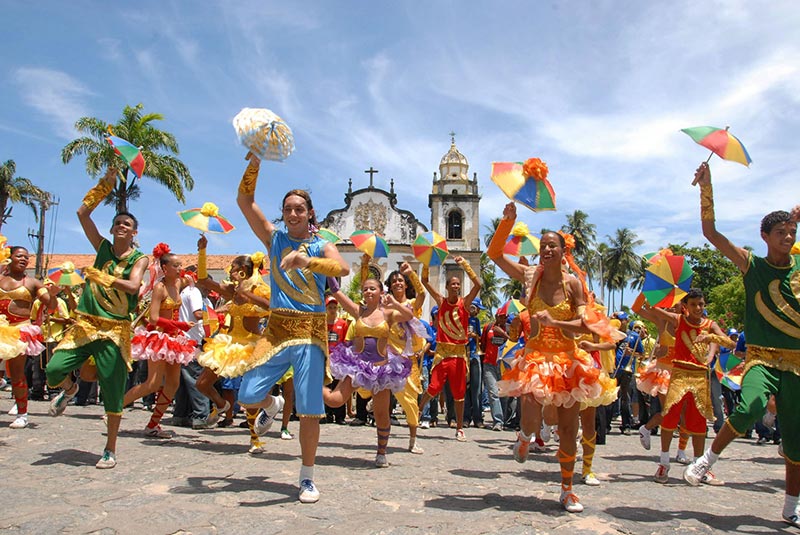
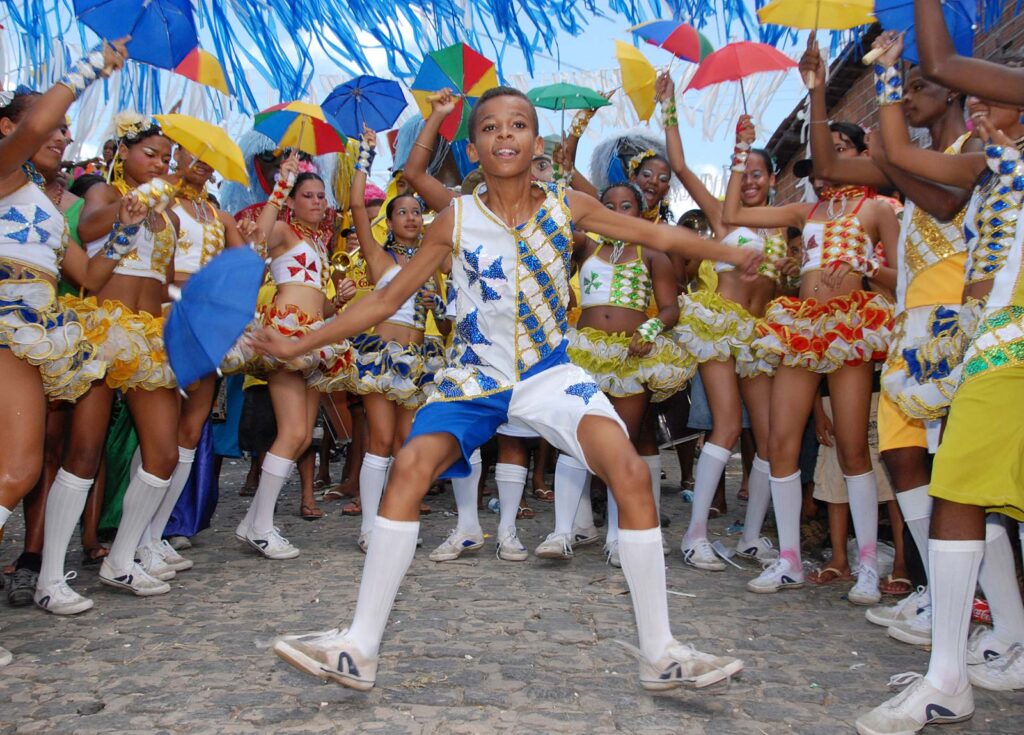
Festivals in Brazil
1) Festas Juninas
Festa Junina, a Catholic festival in Brazil. A joyful celebration that pays homage to the harvest and the revered saints: Anthony, John, and Peter. This lively festival is characterized by an array of customs. As vibrant costumes, bonfires, fireworks, dances, and games, each with its own regional and cultural nuances. The food and beverages served during Festa Junina revolve around seasonal crops like corn, peanuts, and cassava. Guests can indulge in a delectable spread of cakes, pies, soups, and mulled wine. All add to the festive spirit of the occasion.
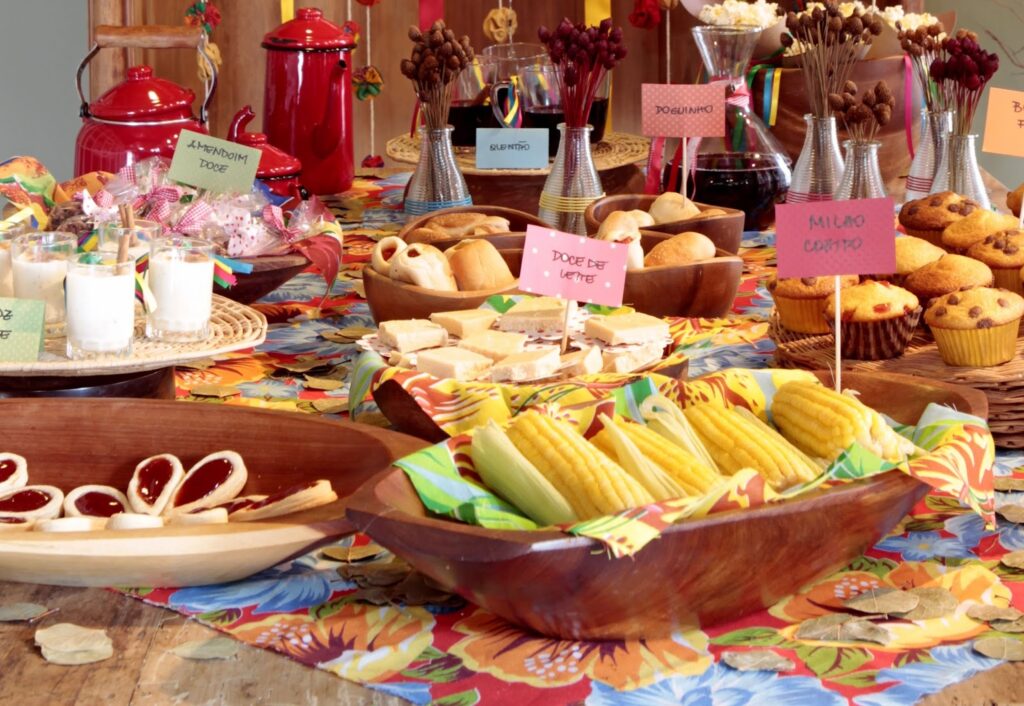
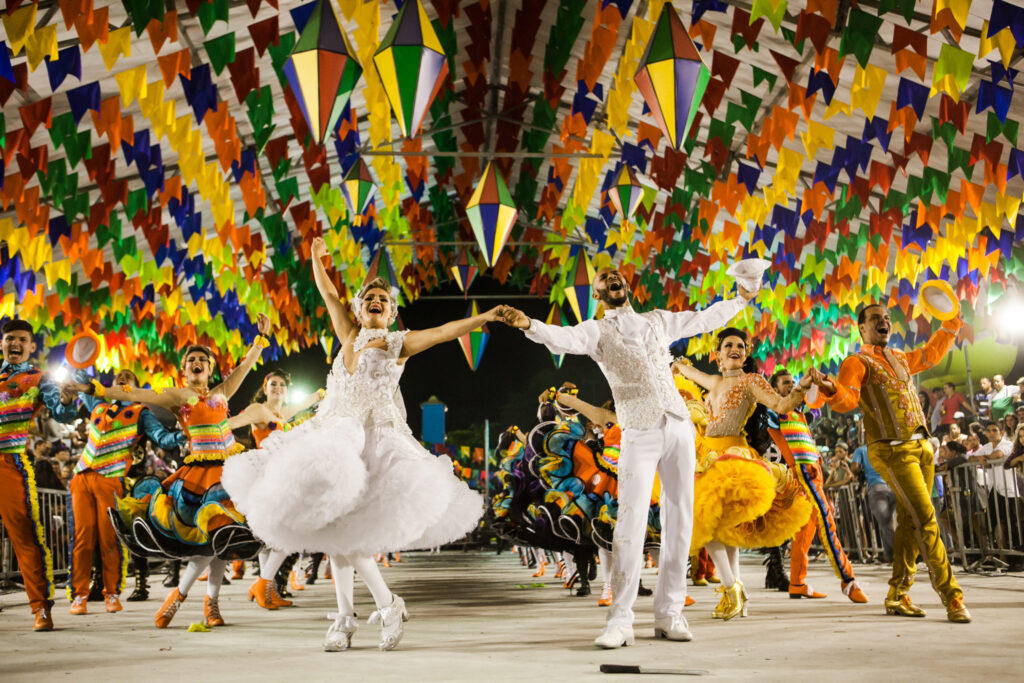
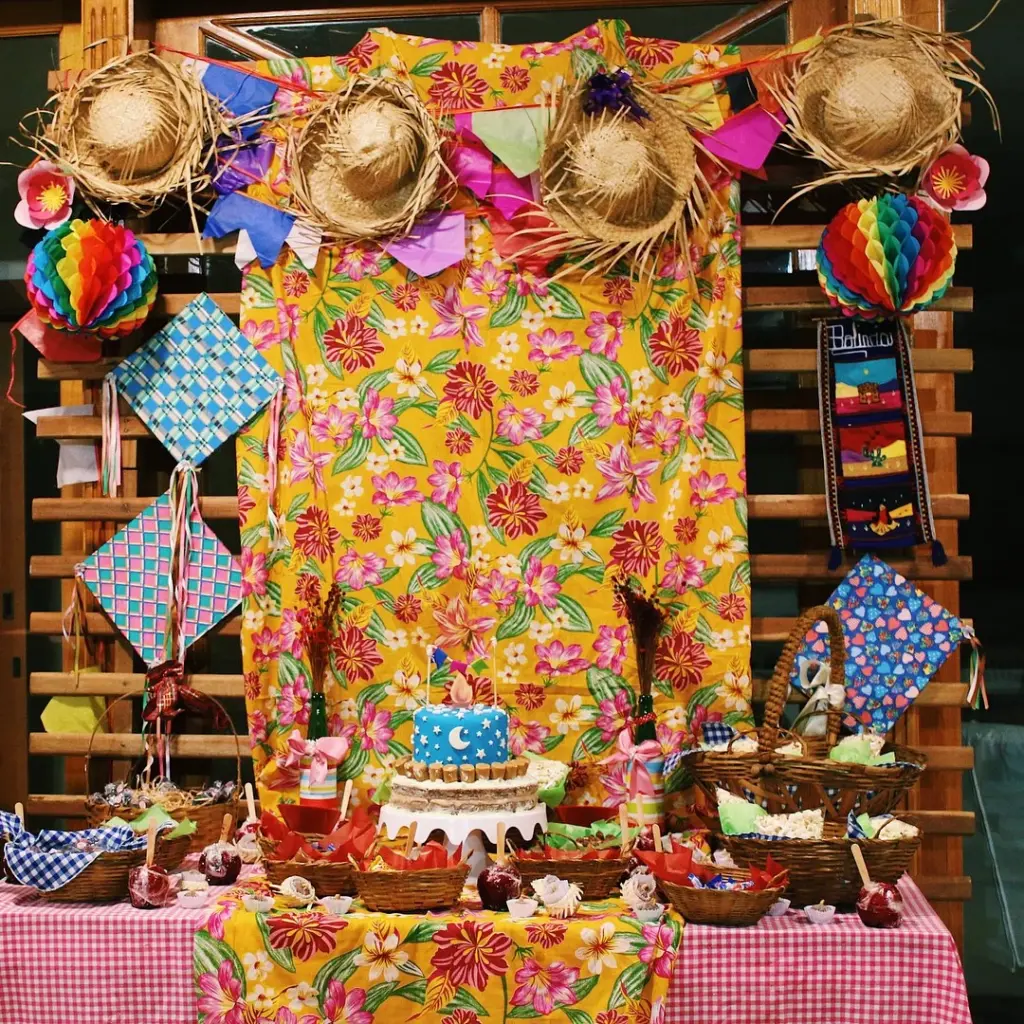
2) Parintins Folklore Festival
The Parintins Folklore Festival, also known as the Festival do Boi-Bumbá. A beloved and vibrant annual event that takes place over three days in late June. Held in the Brazilian city of Parintins, located in the heart of the Amazonas region. This festival ranks among the largest and most popular annual celebrations in Brazil.
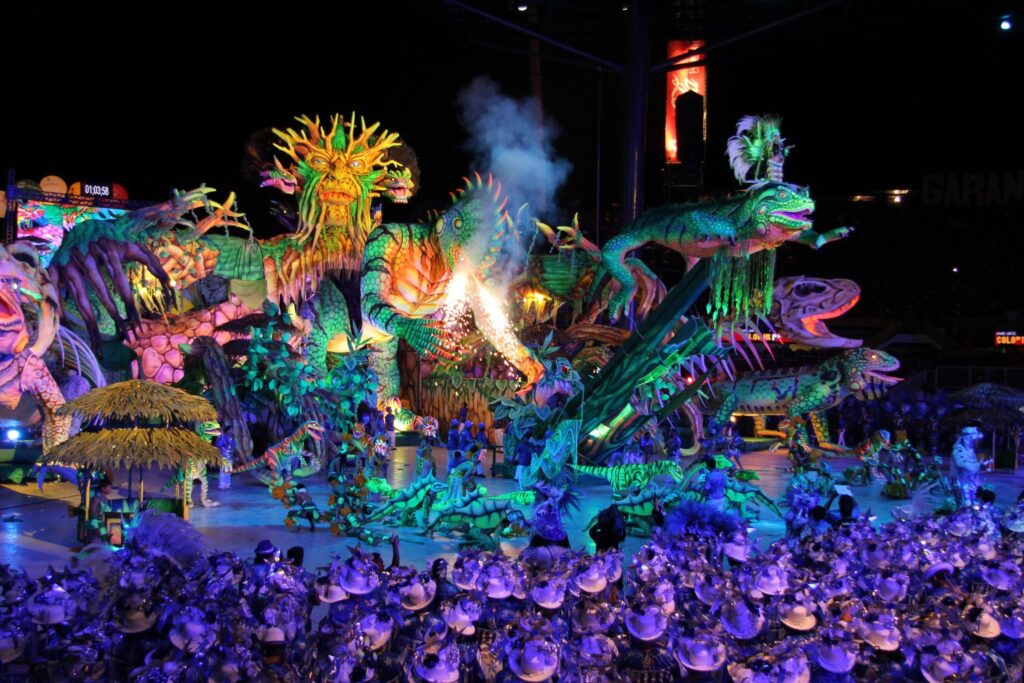
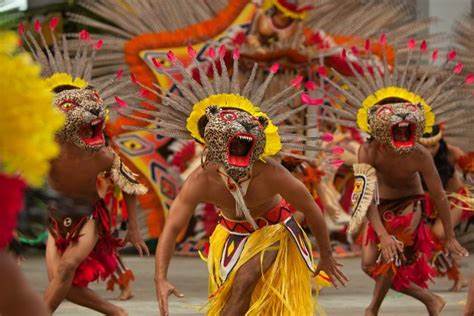
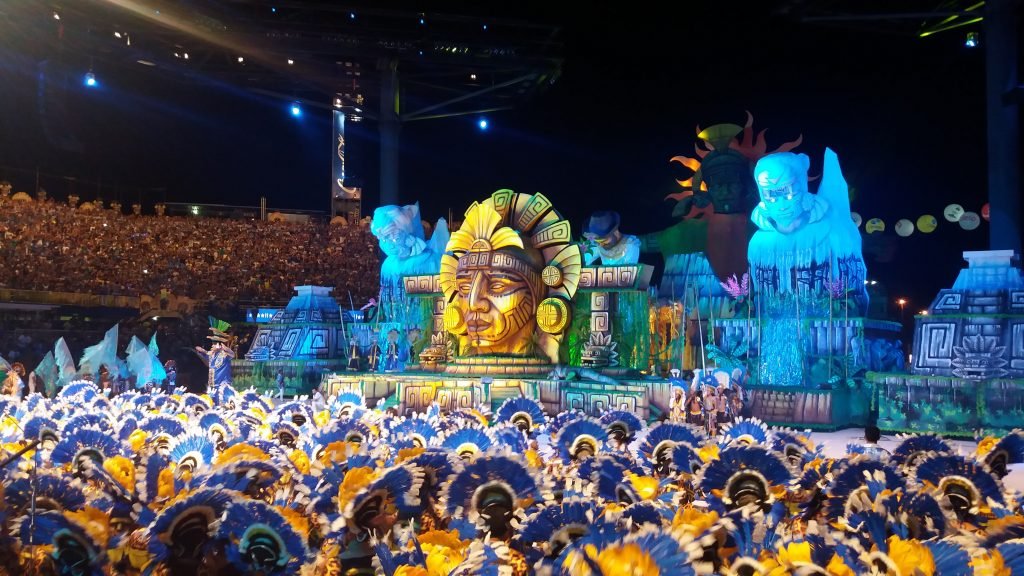
3) Carnaval
Carnival is Brazil’s most celebrated holiday and has grown into an enormous event. The Carnival of Brazil is an annual festival that kicks off on the Friday afternoon just before Ash Wednesday. Marking the commencement of Lent—a 40-day period leading up to Easter.
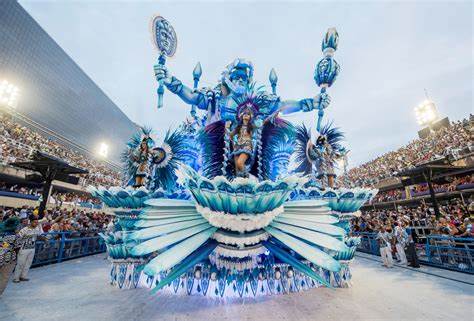
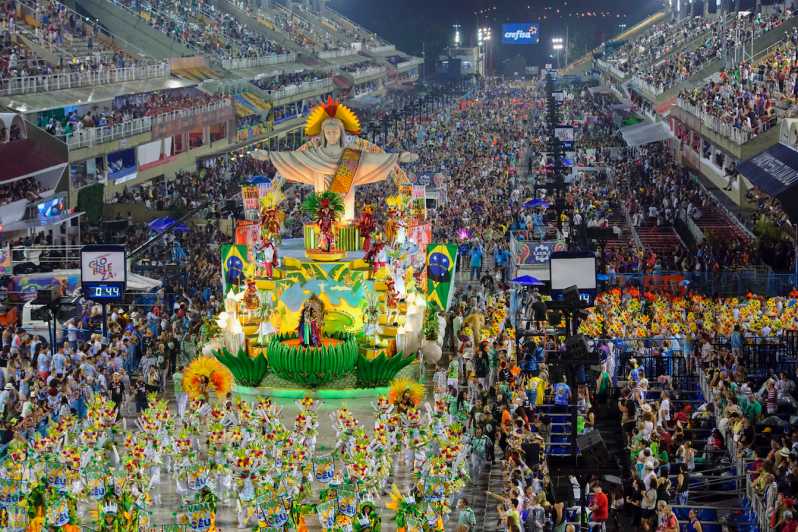

Traditional arts and crafts
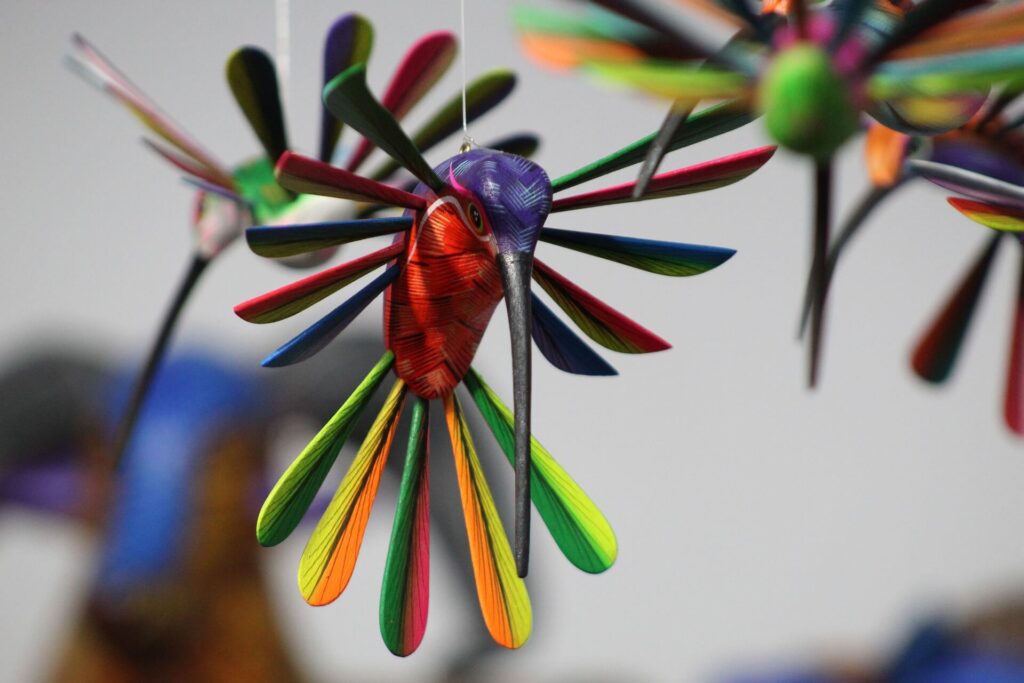
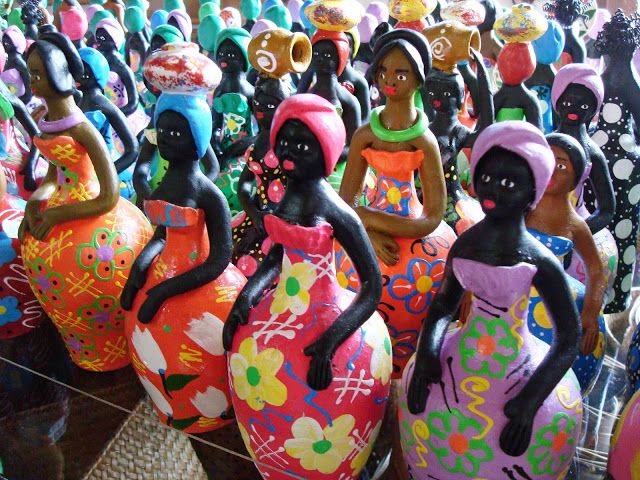
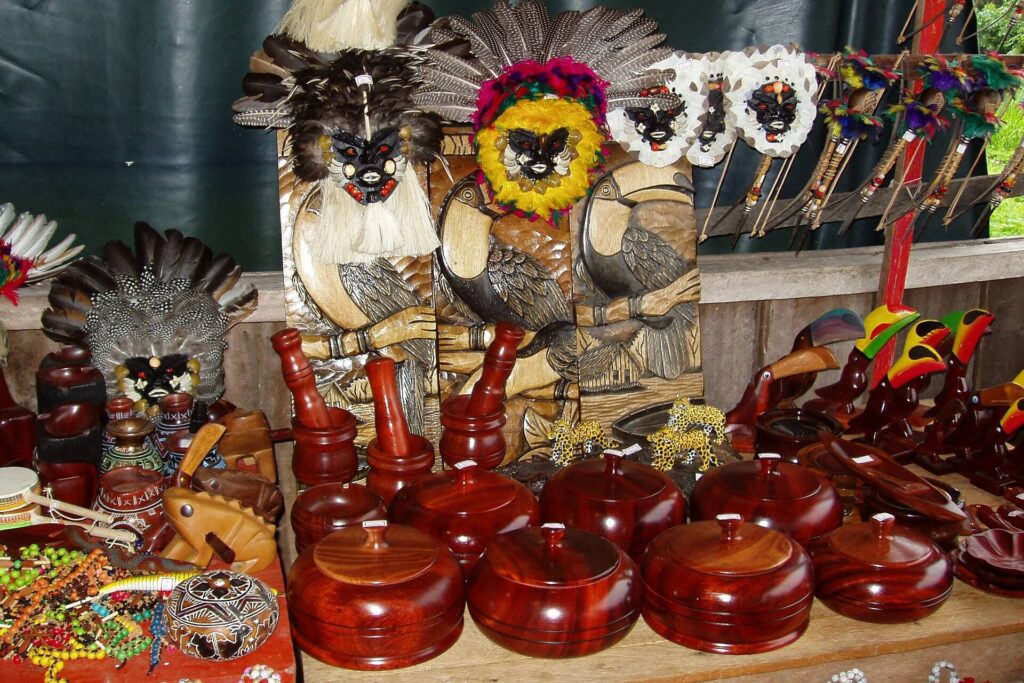
Fun Facts about Brazil
- Brazil is the fifth largest country in the world by area and population.
- Brazil has the largest rainforest in the world, the Amazon, which covers about 60% of its territory.
- Brazil is the only country in the Americas that speaks Portuguese as its official language.
- Brazil has won the FIFA World Cup five times, more than any other country.
- Brazil is home to the largest carnival in the world, which attracts millions of people every year.
- Winter time in Brazil is from May to August.

Welcome to “Exploring Brazil with Krisely.” Join us as we delve into fascinating facts about this beautiful country. Were you aware that Brazil experiences summer from December to March?
Meet Krisley!

Oi!! Meu nome é Krisley Mendes e sou estudante do Programa de Cultura e Inglês Intensivo (CIEP) da University of Northern Iowa por oito semanas.Durante os meses de agosto e setembro, assisti aulas presenciais no campus da UNI e agora tenho aulas online estando no Brasil. Nasci e cresci no Brasil, onde o português é a única língua oficial.Decidi cursar o CIEP para aprimorar o inglês que aprendi nas escolas brasileiras. Terminei meu doutorado em Economia há alguns anos e me tornei professora da Universidade de Brasília.Voltar a ser estudante na UNI tem sido uma experiência rica e recompensadora para mim.
Hi!! My name is Krisley Mendes, and I am a student in the Culture and Intensive English Program (CIEP) at the University of Northern Iowa for eight weeks. During the months of August and September, I attended classes in person on the UNI campus and now I have been attending online classes from Brazil. I was born and raised in Brazil, where Portuguese is the only official language. I decided to attend CIEP to improve the English I learned in Brazilian schools. I finished my PhD in Economics a few years ago and became a professor at the University of Brasília. Returning to being a student at UNI has been a rich and rewarding experience for me.
Krisley Mendes – Professor at University of Brasília
Where is Brazil located?
Brazil is located in South America, covering a vast area in the eastern part of the continent. It is the largest country in South America and shares borders with several countries. Including Argentina, Bolivia, Colombia, Guyana, Paraguay, Peru, Suriname, Uruguay, and Venezuela. It is known for its diverse landscapes. Including the Amazon Rainforest, extensive coastline along the Atlantic Ocean, and the famous Amazon River.

Before delving deeper into Brazil, let’s introduce you to Krisley’s wonderful family;






Rio de Janeiro
Rio de Janeiro, also known as Rio, serves as the capital of the state of Rio de Janeiro. Brazil’s third-most-populous state. Moreover, it ranks as the second-most-populous city in Brazil. Its name, Rio de Janeiro, translates to “River of January” in Portuguese.



The iconic statue in Rio de Janeiro is called “Christ the Redeemer.” It represents Jesus Christ with outstretched arms, symbolizing peace and the idea of Christ’s role as a savior. The statue, which stands atop Corcovado Mountain, is a symbol of Christianity. Is one of the most famous landmarks in Brazil and the world. It also serves as a symbol of Rio de Janeiro itself and is a significant cultural and religious icon.
Foz do Iguacu
Foz do Iguaçu, also known as the “Iguazu River Mouth. A Brazilian city situated along the border of the stunning Iguaçu Falls. This city holds the rank of being the seventh largest in the state of Paraná. The Iguaçu Falls, found at the border shared by Argentina and Brazil, encompass around 257 distinct waterfalls. Have earned the prestigious title of one of the “New Natural Seven Wonders of the World.



Sao Paulo
São Paulo stands as the most populous city in Brazil. Serves as the capital of the state of São Paulo. It’s worth noting that São Paulo is the most populous city globally outside of Asia. And ranks as the fourth-largest city by population when considering its city limits.



Florianopolis
Florianópolis, located in the South region of Brazil. Holds the distinction of being the capital and the second largest city in the state of Santa Catarina. The city encompasses Santa Catarina Island, along with several smaller surrounding islands, as well as a portion of the mainland.



Traditional food of Brazil
 Churrasco a beloved Brazilian barbecue technique that embraces a rich tradition of grilling. In this culinary art, succulent pieces, tantalizing slices, hearty steaks, and flavorful chops of various meats, including beef, veal, lamb, pork, and chicken. Are meticulously skewered and slow-grilled over an open wood fire.
Churrasco a beloved Brazilian barbecue technique that embraces a rich tradition of grilling. In this culinary art, succulent pieces, tantalizing slices, hearty steaks, and flavorful chops of various meats, including beef, veal, lamb, pork, and chicken. Are meticulously skewered and slow-grilled over an open wood fire.

Moqueca a Brazilian seafood stew featuring a base of palm oil and coconut milk or olive oil. It can be combined with fish, shrimp, or both. This dish is traditionally cooked in clay pots with vegetables and herbs, and it’s commonly served over rice. Its origins date back to 300 years ago. Influenced by Portuguese introduction of coconuts and African slaves introducing palm oil to Brazilian cuisine.
Traditional Costumes
Brazil doesn’t have a single national costume. But rather an array of traditional attire from various regions across the vast country. These folk garments have historically provided people with a sense of identity, belonging. They often reflect one’s societal status, with distinct clothing for the elite and contrasting attire for rural and peasant communities.



Festivals in Brazil
1) Festas Juninas
Festa Junina, a Catholic festival in Brazil. A joyful celebration that pays homage to the harvest and the revered saints: Anthony, John, and Peter. This lively festival is characterized by an array of customs. As vibrant costumes, bonfires, fireworks, dances, and games, each with its own regional and cultural nuances. The food and beverages served during Festa Junina revolve around seasonal crops like corn, peanuts, and cassava. Guests can indulge in a delectable spread of cakes, pies, soups, and mulled wine. All add to the festive spirit of the occasion.



2) Parintins Folklore Festival
The Parintins Folklore Festival, also known as the Festival do Boi-Bumbá. A beloved and vibrant annual event that takes place over three days in late June. Held in the Brazilian city of Parintins, located in the heart of the Amazonas region. This festival ranks among the largest and most popular annual celebrations in Brazil.



3) Carnaval
Carnival is Brazil’s most celebrated holiday and has grown into an enormous event. The Carnival of Brazil is an annual festival that kicks off on the Friday afternoon just before Ash Wednesday. Marking the commencement of Lent—a 40-day period leading up to Easter.



Traditional arts and crafts



Fun Facts about Brazil
- Brazil is the fifth largest country in the world by area and population.
- Brazil has the largest rainforest in the world, the Amazon, which covers about 60% of its territory.
- Brazil is the only country in the Americas that speaks Portuguese as its official language.
- Brazil has won the FIFA World Cup five times, more than any other country.
- Brazil is home to the largest carnival in the world, which attracts millions of people every year.
- Winter time in Brazil is from May to August.
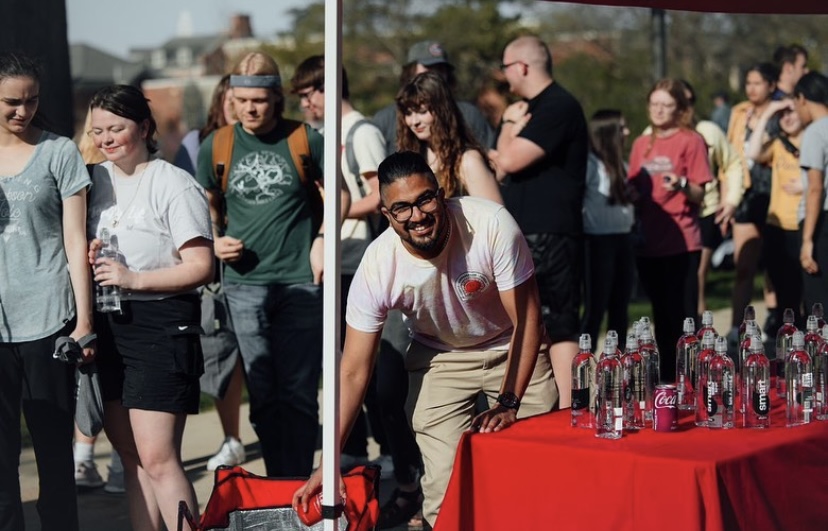
Welcome back, fellow adventurers! Join us on an exciting journey as we traverse the vibrant landscapes of Sri Lanka. Guided by none other than the brand ambassador of the Coca-Cola Company, Gavik. In this article, we’ll delve into the enchanting realms of Sri Lanka. Immersing ourselves in its breathtaking locations, delectable cuisine, and the rich tapestry of traditional costumes.
Meet Gavik!

🇱🇰 ආයුබෝවන්!
මගේ නම ගවික් කුරුප්පු සහ මම ශ්රී ලංකාවේ උපත ලැබීමි. මම, වර්තමානයේ උතුරු අයෝවා විශ්ව විද්යාලය (University of Northern Iowa) තාක්ෂණ කළමනාකරණය පිළිබඳ ඉගෙනුම ලබන ජාත්යන්තර ශිෂ්යයෙක්මි. මම ව්යවහාරික ඉංජිනේරු දෙපාර්තමේන්තු සහකාර ලෙස සේවය කරන අතර මම වත්මන් කොකා කෝලා කැම්පස් තානාපති වෙමි. උතුරු අයෝවා විශ්ව විද්යාලය (University of Northern Iowa) මට මගේ වෘත්තීය ජීවිතයේ අවශ්ය කුමන ක්ෂේත්රයද යන්න නිවැරදිව හඳුනා ගැනීමට උපකාර කළේය. මම මෙහි ගත කළ කාලය පුරාම, ව්යාපාර පරිපාලනය, ප්රසංග රඟහල මෙන්ම ඉහත සඳහන් කළ මගේ වර්තමාන විෂයන් ද ඉගෙනීමට ඉඩ දී ඇත. මෙය සඳහන් කිරීමට හේතුව නම්, මෙම ක්රියාවලියේදී මා කිරීමට බලාපොරොත්තු වූ දේ සැබවින්ම හඳුනා ගැනීම සඳහා විශ්ව විද්යාලය මාව නිවැරදි දිශාවට යොමු කළ ආකාරය සහ සහය වූ ආකාරය ඔබට කියා දීමටයි. මම සැමවිටම කැම්පස්හි සහ වෙනත් සංවිධානවල ක්රියාකාරී සාමාජිකයෙකි. මීට අමතරව, මම කැම්පස් හි ජාත්යන්තර ශිෂ්ය ප්රවර්ධක සංවිධානයේ (International Student Promoters Club) සාමාජිකයෙක්ව සිටින අතර මම ආසියානු ශිෂ්ය සංගමයේ (Asian Student Union) විදේශ සබඳතා උප සභාපති ලෙස සේවය කරමි. මෙසේ ක්රියාකාරී සාමාජිකයෙක් වීමෙන් හොඳ ජාලයක් මා නිර්මාණය කරගෙන ඇත.
උතුරු අයෝවා විශ්ව විද්යාලය (University of Northern Iowa) විසින් පිරිනමනු ලබන උපකාර සහ සම්පත් සමඟ මගේ අධ්යාපනය සහ වෘත්තිය වර්ධනය කර ගැනීමට මම බලාපොරොත්තු වෙමි.🇺🇸 Hey everyone!
My name is Gavik Kuruppu, and I am an international student from Sri Lanka and a sophomore at the University of Northern Iowa, double majoring in Technology Management, and Graphic Technology. So, a little more about me is, I work as an Applied Engineering Department Assistant as well as the Coca Cola Campus Ambassador. The University of Northern Iowa helped me identify exactly what field of work I would want to be a part of in my professional career. Throughout my time here, I’ve majored in Business Administration, Performance Theater, as well as my current major is stated above. The reason I mention this is to support my previous point of how the university guided me in the right direction in order to really identify what I hoped to do in the future. I’ve always been an active member in the international community, as well as other organizations on campus during my time here at UNI. Additionally, I am a part of the International Student Promoters Organization on campus, and I serve as the Vice President of External Relations for the Asian Student Union. These examples points are simply a few of many that I have helped me create and have a good network around the community as well as succeed as a UNI panther. I hope to keep growing myself and my career with the help and resources that the University of Northern Iowa has to offer during the rest of my time here.
Gavik Kuruppu – Undergraduate Student
Where is Sri Lanka?
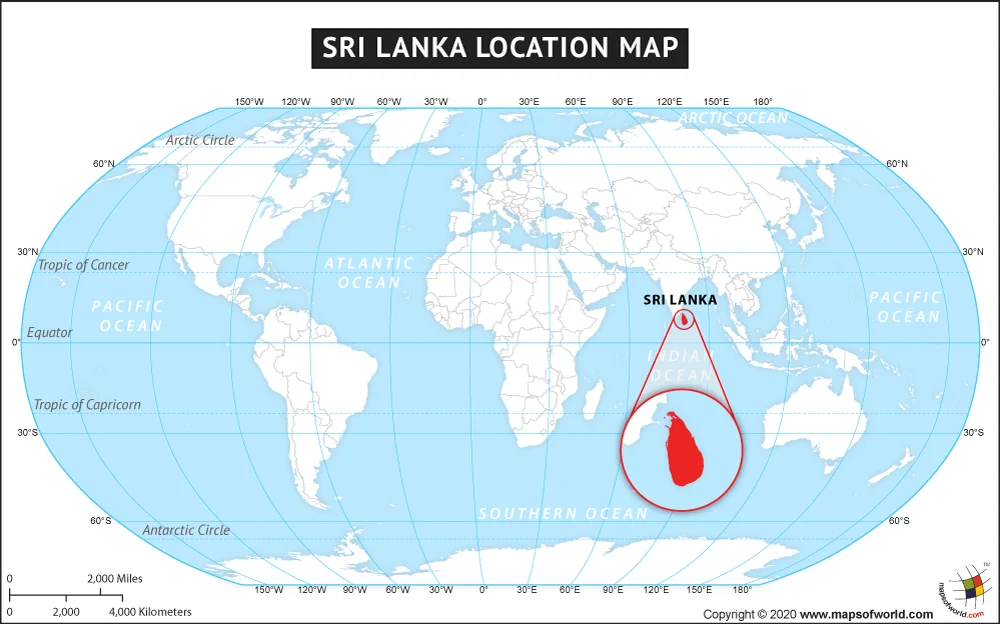
Sri Lanka, previously referred to as Ceylon and formally recognized as the Democratic Socialist Republic of Sri Lanka. Is a South Asian Island nation situated in the Indian Ocean. It is positioned to the southwest of the Bay of Bengal. With the Gulf of Mannar and the Palk Strait, separating it from the Indian subcontinent. To its south-west, Sri Lanka has a maritime boundary with the Maldives. To its north-west, it shares a maritime boundary with India.
Places you should visit in Sri Lanka
Colombo
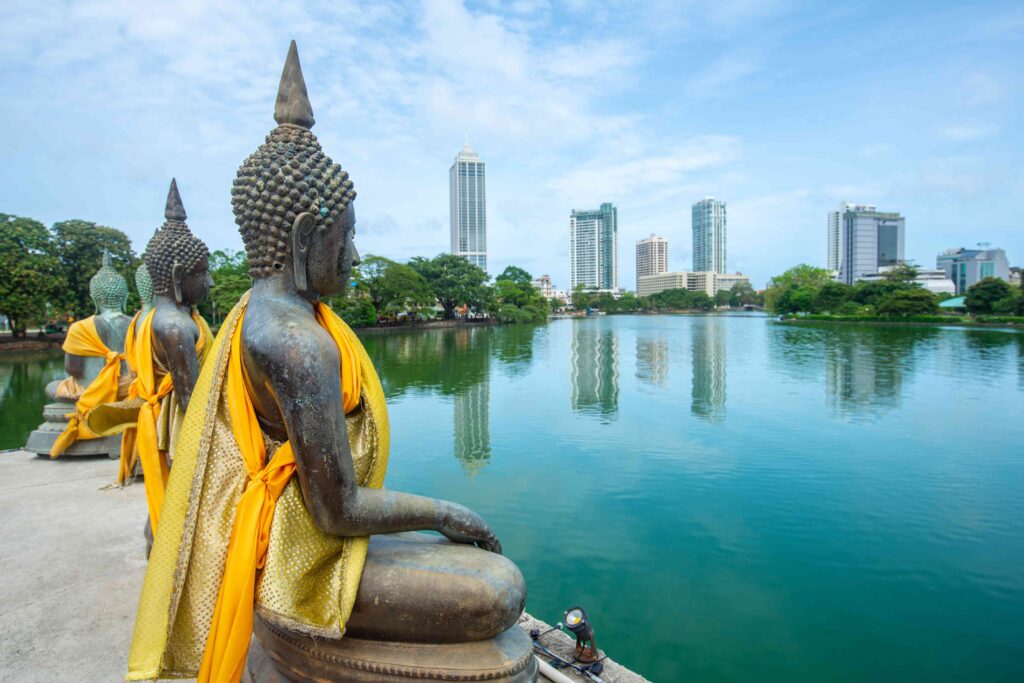
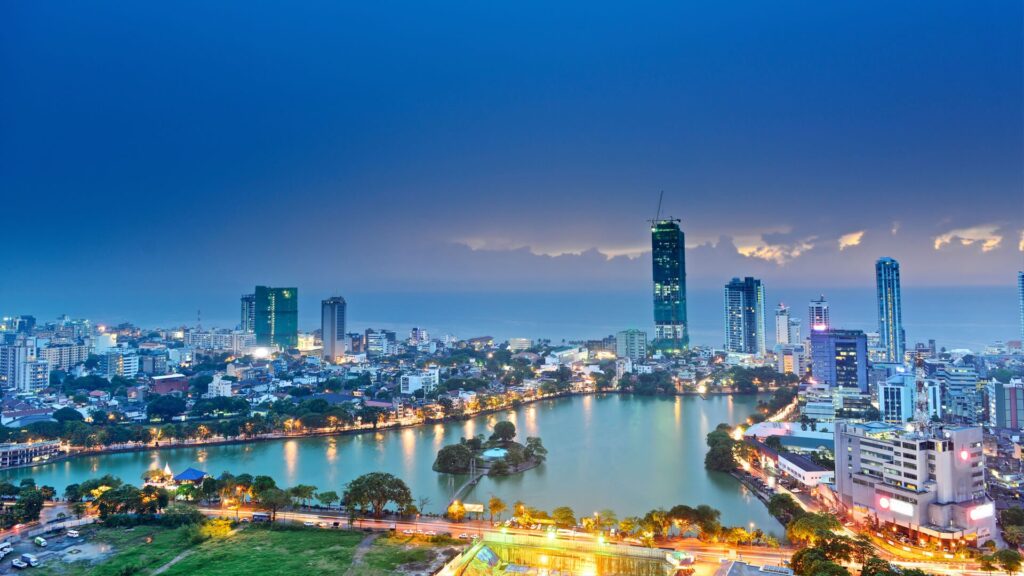

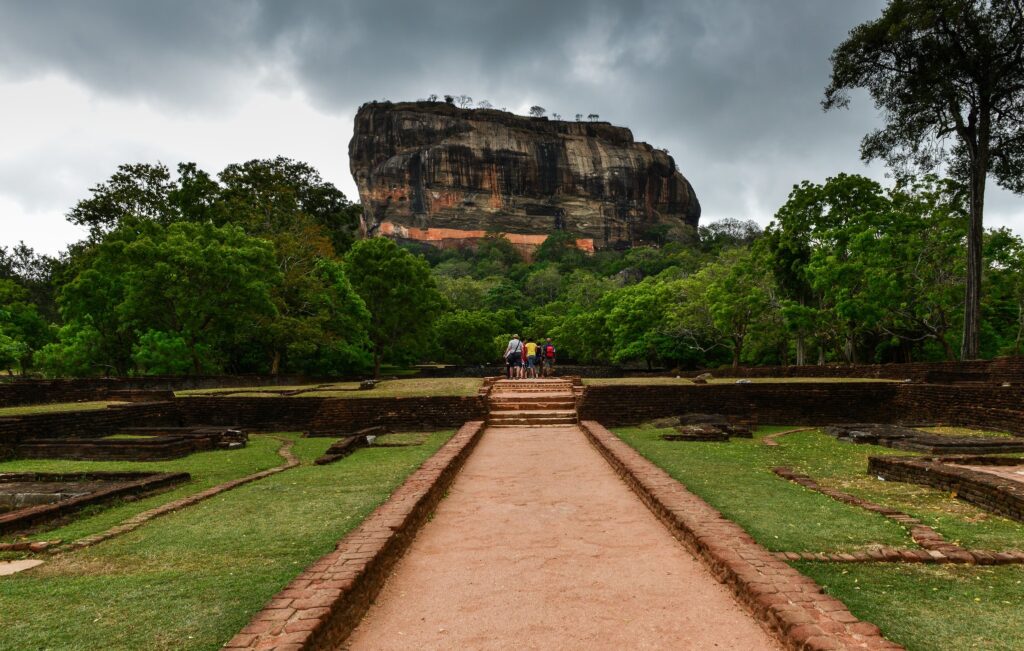
Colombo serves as both the administrative and judicial capital of Sri Lanka and stands as the nation’s most populous city. The city’s geography is a captivating blend of both land and water. It is renowned for its wealth of temples, predominantly of the Buddhist faith, known for their tranquil and serene ambiance.
Sri Lanka’s Exquisite UNESCO World Heritage Sites
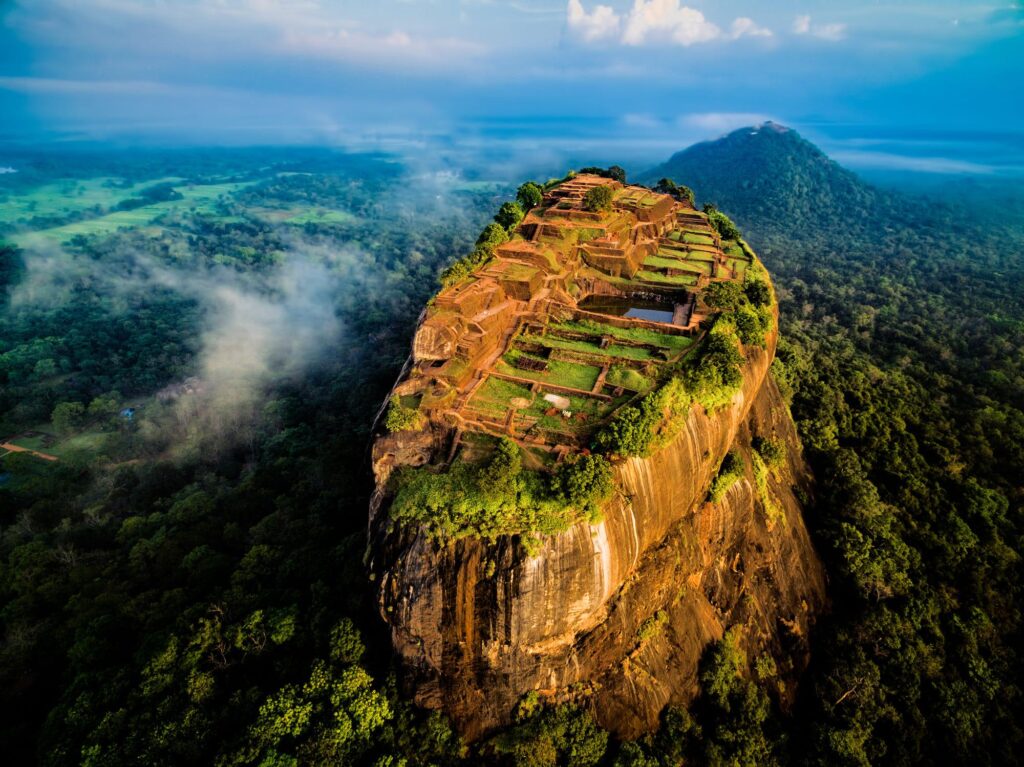
Ancient City of Sigiriya
The rocky formation of Sigiriya cradles the ancient ruins of King Kassapa’s 5th-century AD palace. Accessible via a series of stairs constructed along the mountainside. Its summit reveals the iconic Lion Rock, along with the vestiges of the palace and fortress.
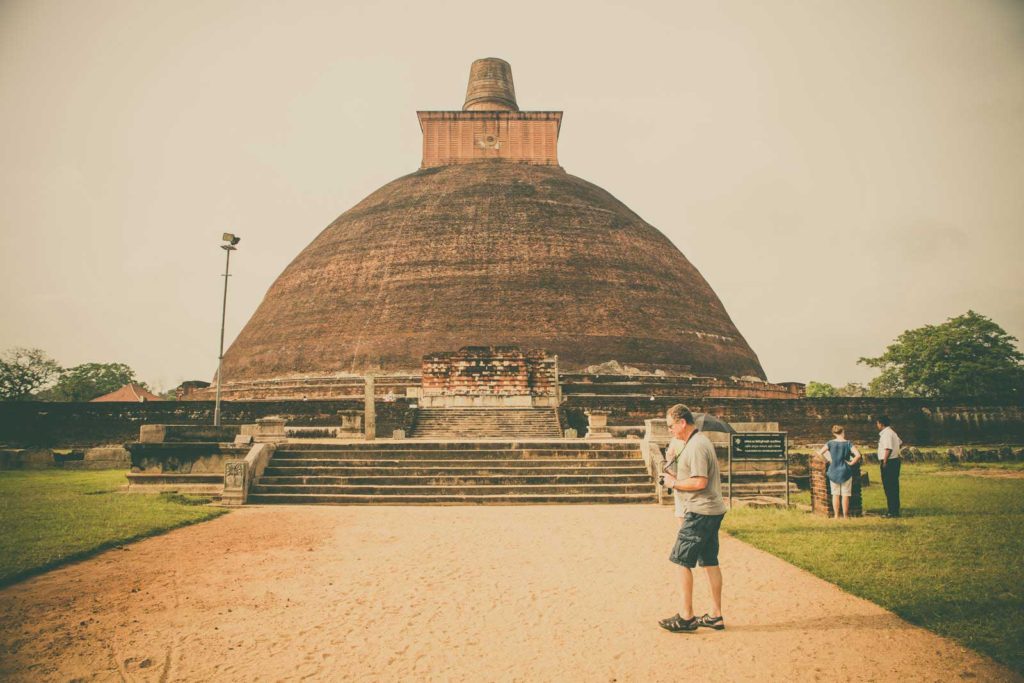 Sacred City of Anuradhapura
Sacred City of Anuradhapura
Anuradhapura, the initial historical capital of Sri Lanka, retains its status as a hallowed Buddhist religious hub. Located approximately 200 kilometers (124 miles) to the north of Colombo, this city draws devout Buddhists and pilgrims throughout the year. To explore the impeccably preserved temple ruins lining the banks of the Malwathu Oya River.
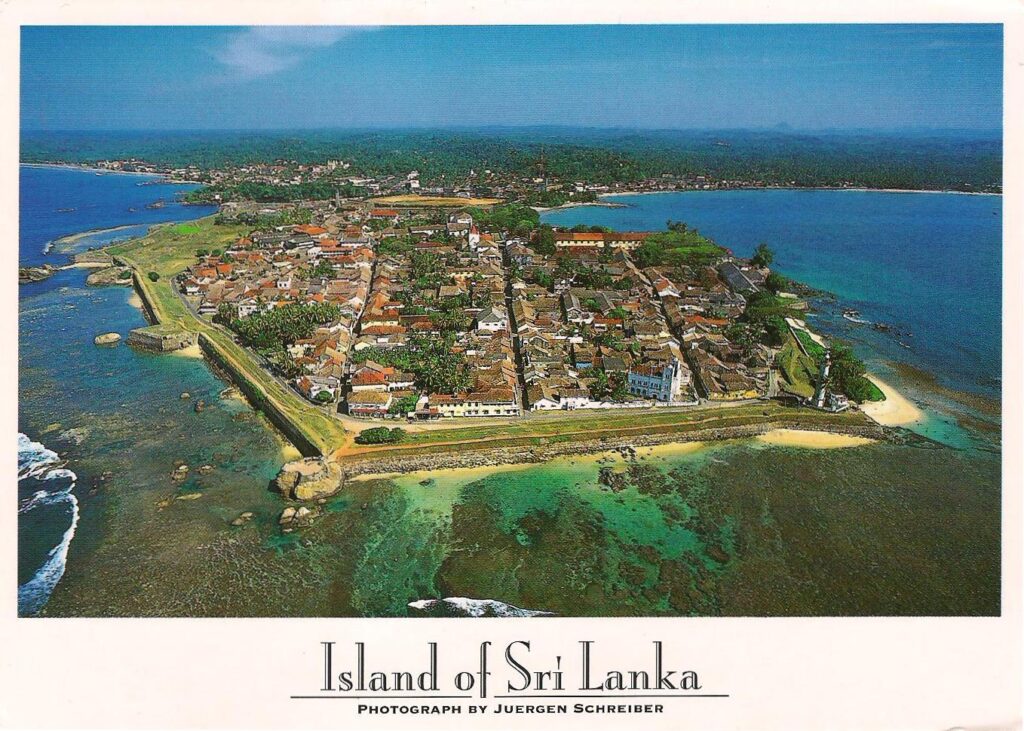 Old Town of Galle and its fortifications
Old Town of Galle and its fortifications
Galle, a fortified town established by the Dutch in the 16th century. Is situated about 130 kilometers (81 miles) to the south of Colombo. The town’s historical structures and churches are enclosed by substantial stone ramparts. They were originally constructed to safeguard the valuable cargo stored there during the Dutch East India Company’s influence in the 17th and 18th centuries.
 Ancient City of Polonnaruwa
Ancient City of Polonnaruwa
Polonnaruwa, forming one corner of Sri Lanka’s renowned Cultural Triangle. Alongside Anuradhapura and Sigiriya, took on the role of the country’s capital.
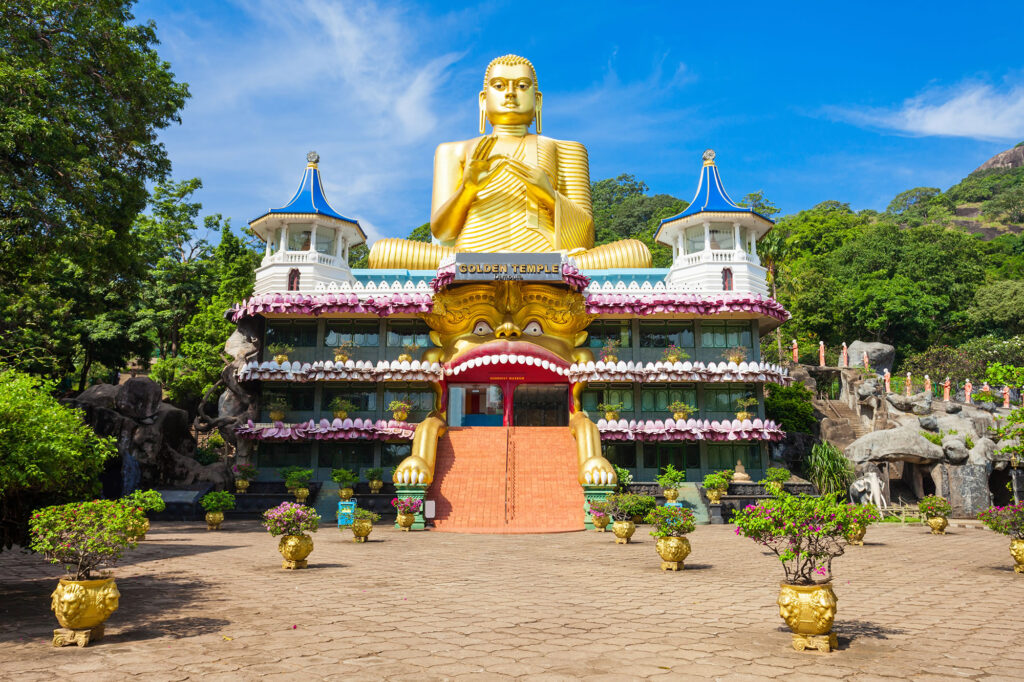
Dambulla Cave Temple
The Golden Dambulla Cave Temple has been a revered pilgrimage site for over 2,200 years and stands as the largest and most well-preserved cave temple on the island.
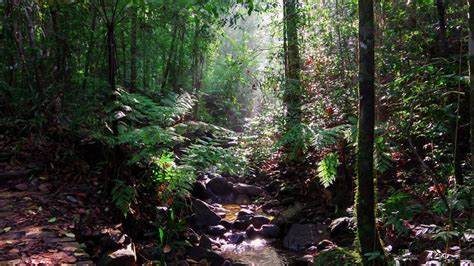 Sinharaja Forest Reserve
Sinharaja Forest Reserve
Established as a UNESCO World Heritage Site in 1988. The Sinharaja Forest is one of Sri Lanka’s two natural World Heritage Sites. As the last surviving primary rainforest in the country, this reserve is a sanctuary for endemic flora and fauna. Including numerous rare amphibian species.

Central Highlands of Sri Lanka
The Knuckles Conservation Forest, and the Peak Wilderness Protected Area, the Central Highlands of Sri Lanka, rising to over 2,000 meters (6,562 feet) above sea level, achieved its UNESCO World Heritage status in 2010. These highlands offer a plethora of hiking trails within a biodiverse sanctuary.
Some of Sri Lanka’s traditional food
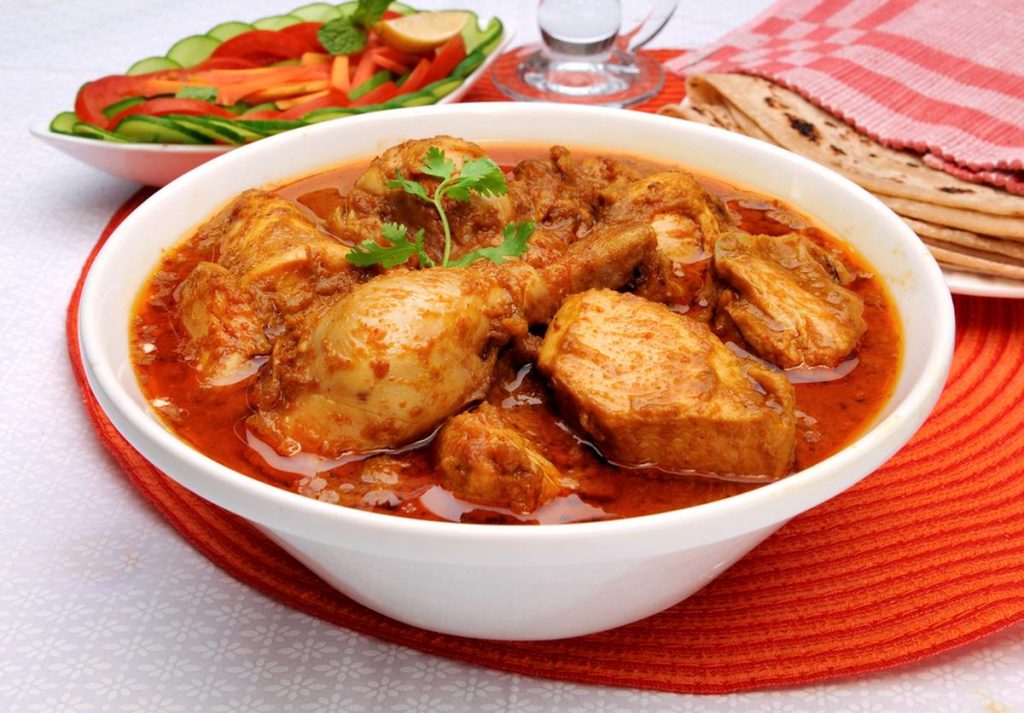 Kukul Mas Curry (Chicken Curry)
Kukul Mas Curry (Chicken Curry)
Kukul Maas Curry is a classic dish originating from the Sinhalese culinary tradition of Sri Lanka. It features tender chicken pieces simmered with whole spices and creamy coconut milk for a delightful taste experience.

Achcharu
Achcharu in Sri Lanka, is an immensely popular dish, especially during the April New Year season and special occasions. It’s characterized by a mixture of sweet, hot, and sour flavors. However, each restaurant or family will serve their own take on this dish. According to personal preference or a traditional recipe passed down through the family.
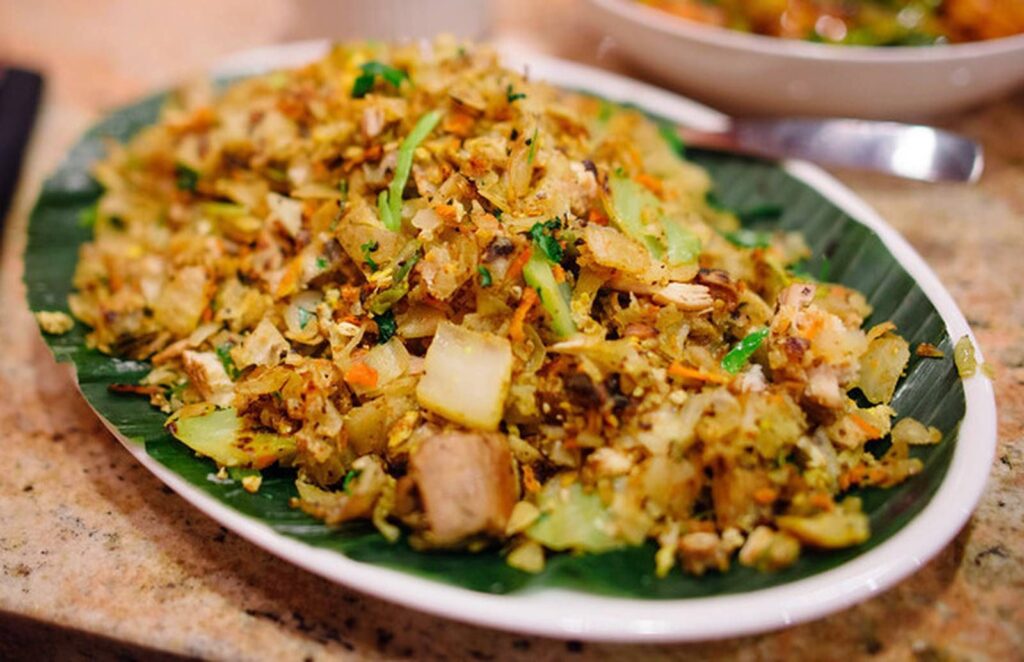
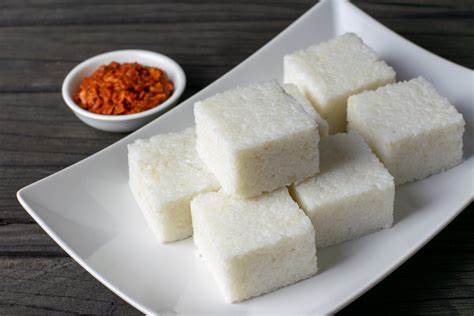
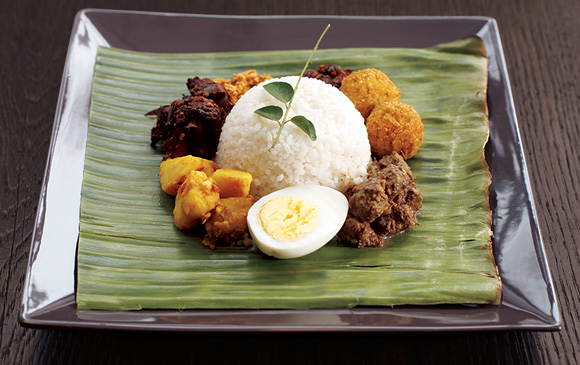
Traditional Costumes of Sri Lanka

Sarong for men: The traditions in men’s attire are more straightforward and well-defined. With men of all ages commonly donning sarongs or trousers.
Sari for women: Women’s attire in Sri Lanka varies significantly based on age. Young girls typically don skirts and blouses, often with skirts resembling a simplified sari style. As girls enter puberty and young adulthood, they commonly opt for half saris. In addition to this, these garments feature a sari-like lower half. While the upper part consists of a draped scarf or fabric piece over the shoulder, tucked into the skirt. Furthermore, the upper attire can also include jackets or blouses. However, in contrast, married and older women consistently prefer the traditional sari.
Traditional Attire and Festivals in Sri Lanka
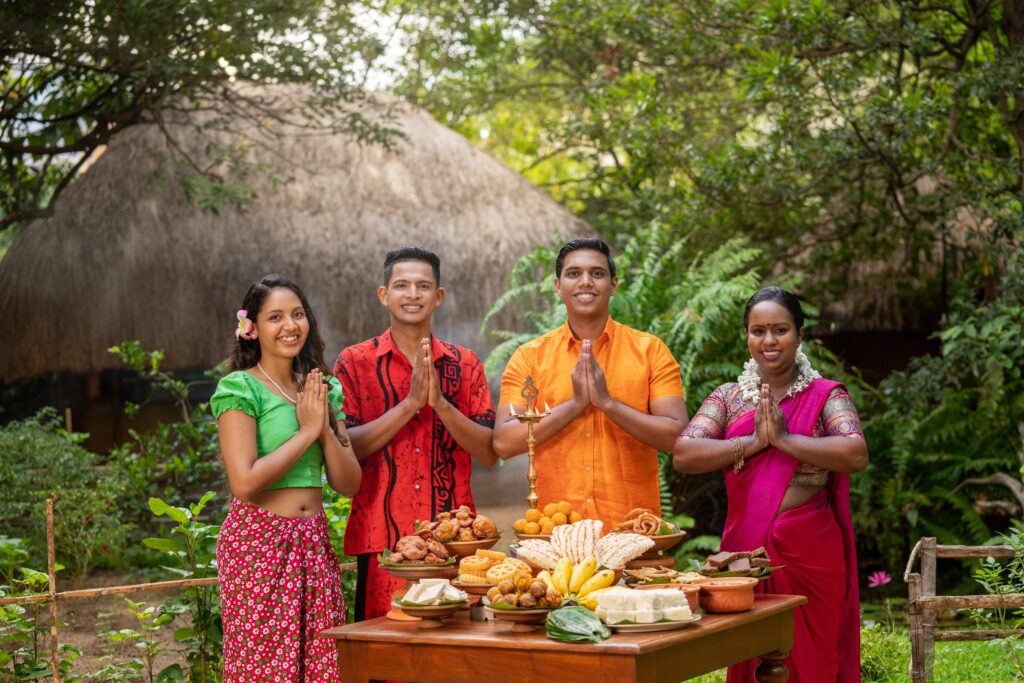 Sinhala and Tamil New Year
Sinhala and Tamil New Year
The Sinhala and Tamil New Year, observed in Sri Lanka every April, is a time-honored tradition. With deep historical roots spanning centuries. Moreover, this festive occasion signifies the commencement of the solar calendar. It holds significant cultural importance for both the Sinhalese and Tamil communities.
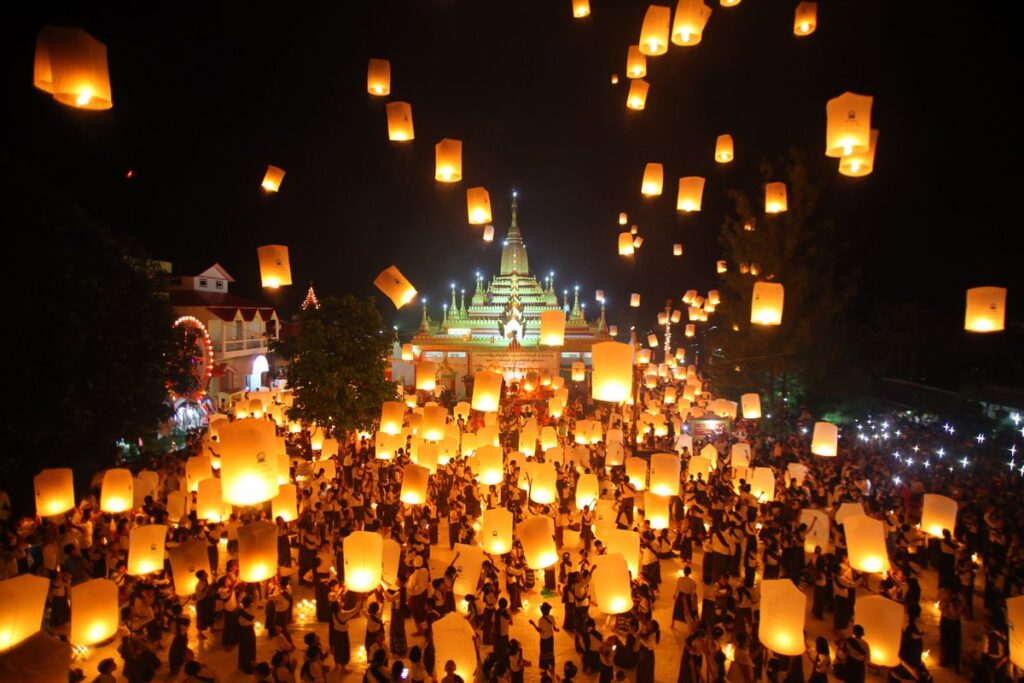
Vesak
Vesak, also known as Buddha Jayanti, Buddha Purnima is a significant holiday. Deep-rooted traditions among Buddhists in South Asia, Southeast Asia, Tibet, and Mongolia. It stands as the foremost festival in Buddhism. Commemorating the birth, enlightenment, and passing of Gautama Buddha in Theravada, Tibetan Buddhism, and Navayana traditions.
Traditional dances
Sri Lanka’s traditional dance has a rich history dating as far back as the 4th century BC. This captivating art form served dual purposes: to entertain royalty and to offer reverence to the divine.
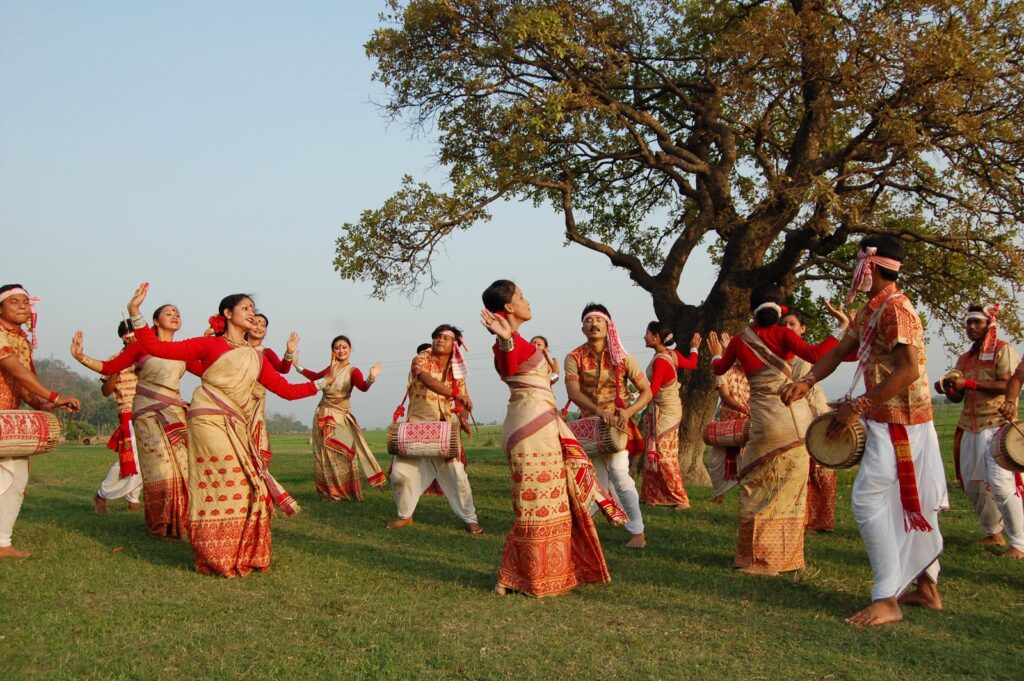
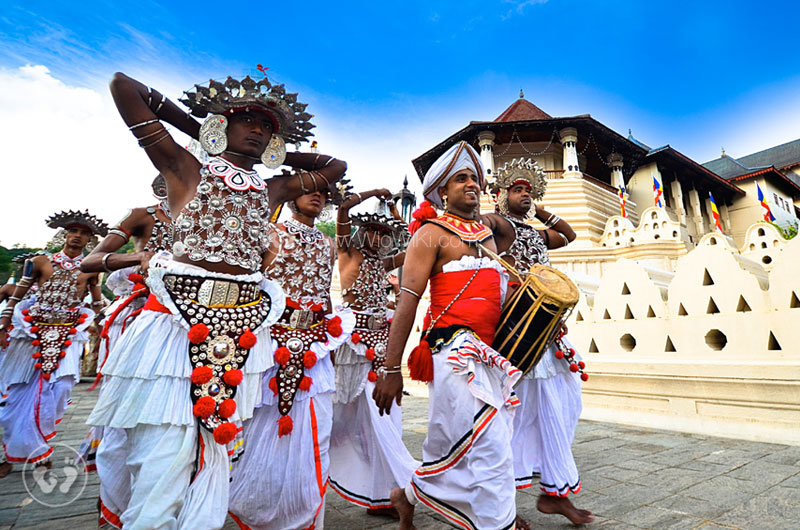
Sculpture
Sculpture, deeply influenced by Buddhism, holds a significant place in Sri Lanka’s traditional arts. The ancient ruins of the country are adorned with numerous sculptures and paintings, portraying themes and motifs central to Buddhism.

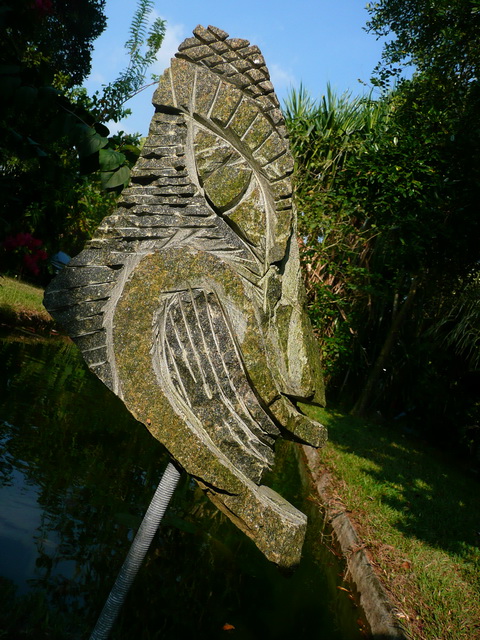
Mask crafting
Mask crafting is a time-honored traditional practice that has been transmitted through successive generations. These masks play an integral role in a variety of ceremonies and performances, encompassing exorcisms, curative rituals, and folk dramas.
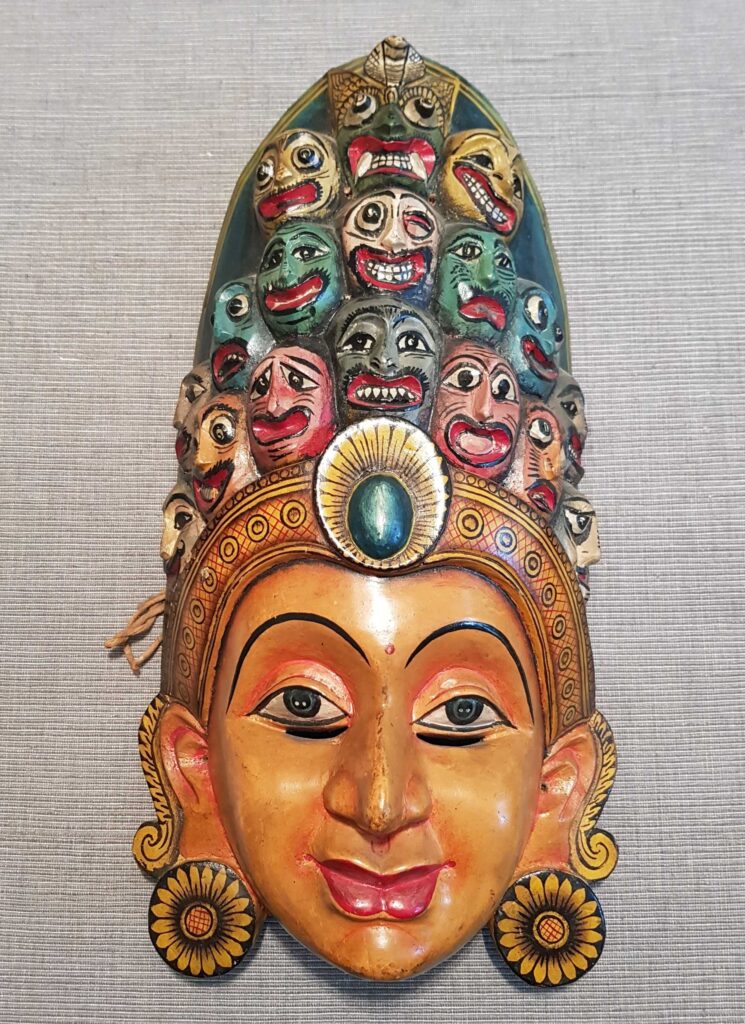
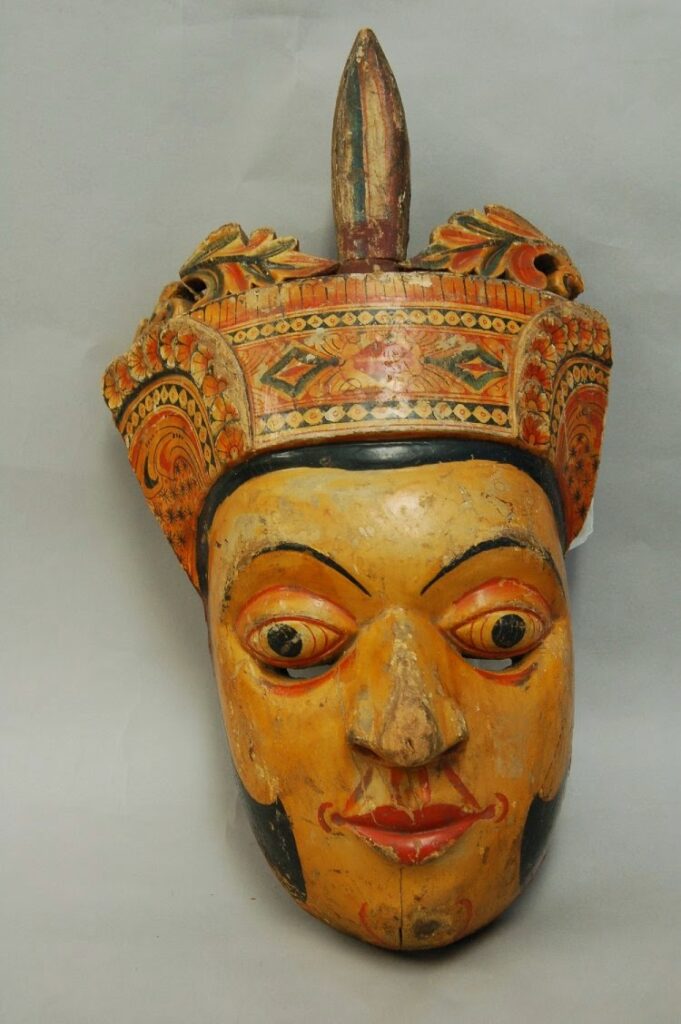
Fun facts about Sri Lanka:
Sri Lanka has three official languages. These languages are Sinhala, Tamil, and English. Sinhala and Tamil are widely spoken by the Sinhalese and Tamil communities, respectively, and English is used for official and administrative purposes.

Welcome back, fellow adventurers! Join us on an exciting journey as we traverse the vibrant landscapes of Sri Lanka. Guided by none other than the brand ambassador of the Coca-Cola Company, Gavik. In this article, we’ll delve into the enchanting realms of Sri Lanka. Immersing ourselves in its breathtaking locations, delectable cuisine, and the rich tapestry of traditional costumes.
Meet Gavik!

🇱🇰 ආයුබෝවන්!
මගේ නම ගවික් කුරුප්පු සහ මම ශ්රී ලංකාවේ උපත ලැබීමි. මම, වර්තමානයේ උතුරු අයෝවා විශ්ව විද්යාලය (University of Northern Iowa) තාක්ෂණ කළමනාකරණය පිළිබඳ ඉගෙනුම ලබන ජාත්යන්තර ශිෂ්යයෙක්මි. මම ව්යවහාරික ඉංජිනේරු දෙපාර්තමේන්තු සහකාර ලෙස සේවය කරන අතර මම වත්මන් කොකා කෝලා කැම්පස් තානාපති වෙමි. උතුරු අයෝවා විශ්ව විද්යාලය (University of Northern Iowa) මට මගේ වෘත්තීය ජීවිතයේ අවශ්ය කුමන ක්ෂේත්රයද යන්න නිවැරදිව හඳුනා ගැනීමට උපකාර කළේය. මම මෙහි ගත කළ කාලය පුරාම, ව්යාපාර පරිපාලනය, ප්රසංග රඟහල මෙන්ම ඉහත සඳහන් කළ මගේ වර්තමාන විෂයන් ද ඉගෙනීමට ඉඩ දී ඇත. මෙය සඳහන් කිරීමට හේතුව නම්, මෙම ක්රියාවලියේදී මා කිරීමට බලාපොරොත්තු වූ දේ සැබවින්ම හඳුනා ගැනීම සඳහා විශ්ව විද්යාලය මාව නිවැරදි දිශාවට යොමු කළ ආකාරය සහ සහය වූ ආකාරය ඔබට කියා දීමටයි. මම සැමවිටම කැම්පස්හි සහ වෙනත් සංවිධානවල ක්රියාකාරී සාමාජිකයෙකි. මීට අමතරව, මම කැම්පස් හි ජාත්යන්තර ශිෂ්ය ප්රවර්ධක සංවිධානයේ (International Student Promoters Club) සාමාජිකයෙක්ව සිටින අතර මම ආසියානු ශිෂ්ය සංගමයේ (Asian Student Union) විදේශ සබඳතා උප සභාපති ලෙස සේවය කරමි. මෙසේ ක්රියාකාරී සාමාජිකයෙක් වීමෙන් හොඳ ජාලයක් මා නිර්මාණය කරගෙන ඇත.
උතුරු අයෝවා විශ්ව විද්යාලය (University of Northern Iowa) විසින් පිරිනමනු ලබන උපකාර සහ සම්පත් සමඟ මගේ අධ්යාපනය සහ වෘත්තිය වර්ධනය කර ගැනීමට මම බලාපොරොත්තු වෙමි.🇺🇸 Hey everyone!
My name is Gavik Kuruppu, and I am an international student from Sri Lanka and a sophomore at the University of Northern Iowa, double majoring in Technology Management, and Graphic Technology. So, a little more about me is, I work as an Applied Engineering Department Assistant as well as the Coca Cola Campus Ambassador. The University of Northern Iowa helped me identify exactly what field of work I would want to be a part of in my professional career. Throughout my time here, I’ve majored in Business Administration, Performance Theater, as well as my current major is stated above. The reason I mention this is to support my previous point of how the university guided me in the right direction in order to really identify what I hoped to do in the future. I’ve always been an active member in the international community, as well as other organizations on campus during my time here at UNI. Additionally, I am a part of the International Student Promoters Organization on campus, and I serve as the Vice President of External Relations for the Asian Student Union. These examples points are simply a few of many that I have helped me create and have a good network around the community as well as succeed as a UNI panther. I hope to keep growing myself and my career with the help and resources that the University of Northern Iowa has to offer during the rest of my time here.
Gavik Kuruppu – Undergraduate Student
Where is Sri Lanka?

Sri Lanka, previously referred to as Ceylon and formally recognized as the Democratic Socialist Republic of Sri Lanka. Is a South Asian Island nation situated in the Indian Ocean. It is positioned to the southwest of the Bay of Bengal. With the Gulf of Mannar and the Palk Strait, separating it from the Indian subcontinent. To its south-west, Sri Lanka has a maritime boundary with the Maldives. To its north-west, it shares a maritime boundary with India.
Places you should visit in Sri Lanka
Colombo




Colombo serves as both the administrative and judicial capital of Sri Lanka and stands as the nation’s most populous city. The city’s geography is a captivating blend of both land and water. It is renowned for its wealth of temples, predominantly of the Buddhist faith, known for their tranquil and serene ambiance.
Sri Lanka’s Exquisite UNESCO World Heritage Sites

Ancient City of Sigiriya
The rocky formation of Sigiriya cradles the ancient ruins of King Kassapa’s 5th-century AD palace. Accessible via a series of stairs constructed along the mountainside. Its summit reveals the iconic Lion Rock, along with the vestiges of the palace and fortress.
 Sacred City of Anuradhapura
Sacred City of Anuradhapura
Anuradhapura, the initial historical capital of Sri Lanka, retains its status as a hallowed Buddhist religious hub. Located approximately 200 kilometers (124 miles) to the north of Colombo, this city draws devout Buddhists and pilgrims throughout the year. To explore the impeccably preserved temple ruins lining the banks of the Malwathu Oya River.
 Old Town of Galle and its fortifications
Old Town of Galle and its fortifications
Galle, a fortified town established by the Dutch in the 16th century. Is situated about 130 kilometers (81 miles) to the south of Colombo. The town’s historical structures and churches are enclosed by substantial stone ramparts. They were originally constructed to safeguard the valuable cargo stored there during the Dutch East India Company’s influence in the 17th and 18th centuries.
 Ancient City of Polonnaruwa
Ancient City of Polonnaruwa
Polonnaruwa, forming one corner of Sri Lanka’s renowned Cultural Triangle. Alongside Anuradhapura and Sigiriya, took on the role of the country’s capital.

Dambulla Cave Temple
The Golden Dambulla Cave Temple has been a revered pilgrimage site for over 2,200 years and stands as the largest and most well-preserved cave temple on the island.
 Sinharaja Forest Reserve
Sinharaja Forest Reserve
Established as a UNESCO World Heritage Site in 1988. The Sinharaja Forest is one of Sri Lanka’s two natural World Heritage Sites. As the last surviving primary rainforest in the country, this reserve is a sanctuary for endemic flora and fauna. Including numerous rare amphibian species.

Central Highlands of Sri Lanka
The Knuckles Conservation Forest, and the Peak Wilderness Protected Area, the Central Highlands of Sri Lanka, rising to over 2,000 meters (6,562 feet) above sea level, achieved its UNESCO World Heritage status in 2010. These highlands offer a plethora of hiking trails within a biodiverse sanctuary.
Some of Sri Lanka’s traditional food
 Kukul Mas Curry (Chicken Curry)
Kukul Mas Curry (Chicken Curry)
Kukul Maas Curry is a classic dish originating from the Sinhalese culinary tradition of Sri Lanka. It features tender chicken pieces simmered with whole spices and creamy coconut milk for a delightful taste experience.

Achcharu
Achcharu in Sri Lanka, is an immensely popular dish, especially during the April New Year season and special occasions. It’s characterized by a mixture of sweet, hot, and sour flavors. However, each restaurant or family will serve their own take on this dish. According to personal preference or a traditional recipe passed down through the family.



Traditional Costumes of Sri Lanka

Sarong for men: The traditions in men’s attire are more straightforward and well-defined. With men of all ages commonly donning sarongs or trousers.
Sari for women: Women’s attire in Sri Lanka varies significantly based on age. Young girls typically don skirts and blouses, often with skirts resembling a simplified sari style. As girls enter puberty and young adulthood, they commonly opt for half saris. In addition to this, these garments feature a sari-like lower half. While the upper part consists of a draped scarf or fabric piece over the shoulder, tucked into the skirt. Furthermore, the upper attire can also include jackets or blouses. However, in contrast, married and older women consistently prefer the traditional sari.
Traditional Attire and Festivals in Sri Lanka
 Sinhala and Tamil New Year
Sinhala and Tamil New Year
The Sinhala and Tamil New Year, observed in Sri Lanka every April, is a time-honored tradition. With deep historical roots spanning centuries. Moreover, this festive occasion signifies the commencement of the solar calendar. It holds significant cultural importance for both the Sinhalese and Tamil communities.

Vesak
Vesak, also known as Buddha Jayanti, Buddha Purnima is a significant holiday. Deep-rooted traditions among Buddhists in South Asia, Southeast Asia, Tibet, and Mongolia. It stands as the foremost festival in Buddhism. Commemorating the birth, enlightenment, and passing of Gautama Buddha in Theravada, Tibetan Buddhism, and Navayana traditions.
Traditional dances
Sri Lanka’s traditional dance has a rich history dating as far back as the 4th century BC. This captivating art form served dual purposes: to entertain royalty and to offer reverence to the divine.


Sculpture
Sculpture, deeply influenced by Buddhism, holds a significant place in Sri Lanka’s traditional arts. The ancient ruins of the country are adorned with numerous sculptures and paintings, portraying themes and motifs central to Buddhism.


Mask crafting
Mask crafting is a time-honored traditional practice that has been transmitted through successive generations. These masks play an integral role in a variety of ceremonies and performances, encompassing exorcisms, curative rituals, and folk dramas.


Fun facts about Sri Lanka:
Sri Lanka has three official languages. These languages are Sinhala, Tamil, and English. Sinhala and Tamil are widely spoken by the Sinhalese and Tamil communities, respectively, and English is used for official and administrative purposes.
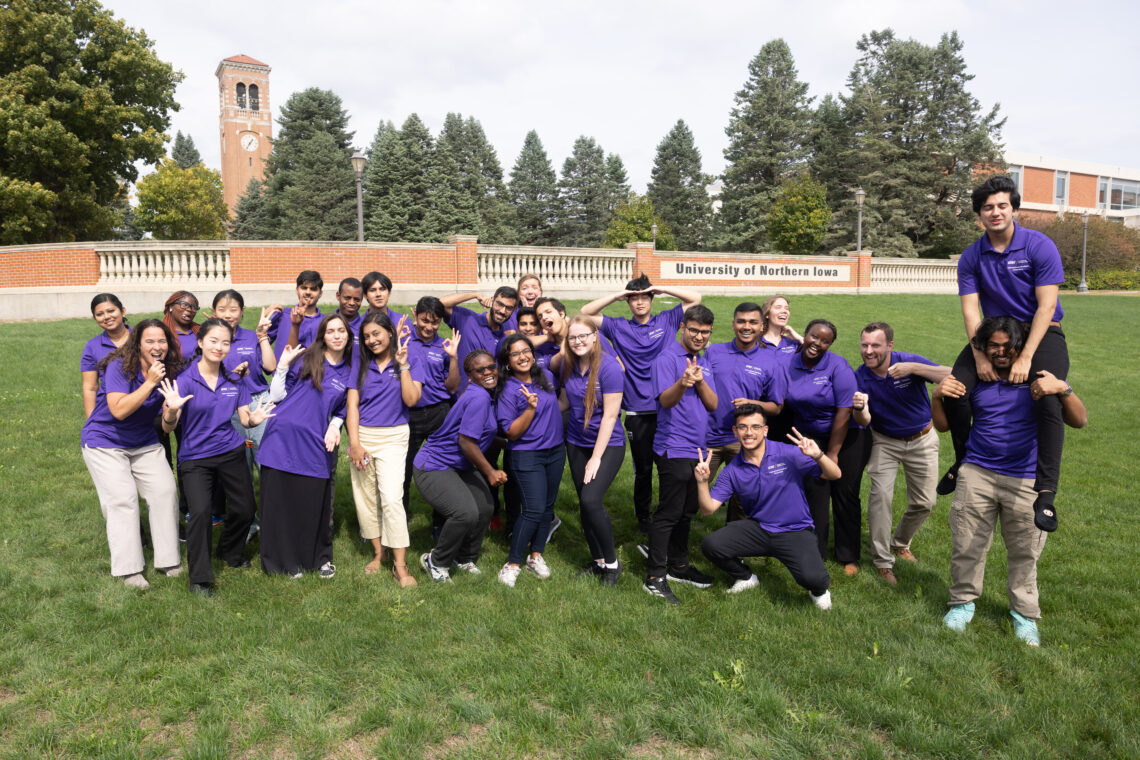
If you are reading this post, that’s probably because you are interested to learn more about UNI. Is it an acronym to University of Northern Iowa? or does it talk about ‘You’ and ‘I’. Let’s delve deeper into my life as a student in the USA to know the story behind UNI.
Curious to see how UNI looks like?
Well, as an international student, I always aspired to pursue higher education abroad. I scoured the web to find the right university. If you haven’t read my previous blog on choosing the perfect university, click here to learn about the 6 essential steps for serious study abroad considerations.
The University of Northern Iowa is a State University and is the 3rd Largest University in Iowa, renowned for the high quality education it provides for both domestic and international students. Learn more information about the university’s geographic location and more about the city Cedar Falls.
How is the Education System in the USA?
I completed my high school and earned my degree in Sri Lanka, which is an Asian country. Some might say pursuing a grad program is the logical next step since I already have a degree. However, I’ve found that education here in the US is significantly different.
In Sri Lanka, our local education is primarily teacher-centric, meaning we learn what our teachers teach us. In contrast, the US education system is more student-centered. This approach places students at the heart of the learning process, allowing them to gauge their own self-worth and fostering intrinsic motivation.
Student-centered learning flips the traditional teacher-centered approach, giving students a more active role. Teachers empower students to make decisions, believe in their leadership potential, and remember what it’s like to learn. I have to say, it’s a highly effective method, promoting deeper understanding.
But it’s also demanding. Expect regular assignments and quizzes, usually on a weekly basis, to stay on pace with the class. However, the advantage is that you’ll retain more and learn better, even if it means a lot of hard work.
How is the Academics at UNI?
Being a graduate student in the MBA program, I can confidently say that it has been an excellent experience so far. The program is tailored to meet the needs of business professionals, aligning with industry requirements and the job market.
Most of my classes are centered around discussions, and I also have assigned readings and similar activities on a weekly basis. If you’re an accounting student, this is the ideal place for you. UNI is nationally renowned for its high CPA (Certified Public Accountant) pass rates. To be precise UNI is in the top 10 among all schools nationwide for passing the entire exam. If you want to learn more about the College of Business, I recommend watching the video below.
Is the faculty Helpful at UNI?
As an international student, the initial months can be challenging in terms of culture shock and language barriers. However, I’m continually amazed by the support our faculty provides. At times, I’ve struggled with understanding the assigned work, and I’ve found that the faculty always goes above and beyond to assist international students.
The majority of my professors hold Ph.D. degrees and many are industry leaders, serving on director boards or holding chief executive positions. This brings a wealth of new knowledge into the classroom, preparing us effectively for the demands of the industry.
Would you believe it if I told you that they willingly sacrifice their lunchtime, work beyond regular hours, and even devote their weekends to help you? It’s truly remarkable. My experience as a student at UNI has not only brought me closer to my professors but has also allowed me to learn a great deal from them. They are industry professionals with a wealth of knowledge.
I’ve never felt a distinction in the classroom; they treat both domestic and international students equally. However, I must emphasize that they go the extra mile and offer special attention when you’re an international student. Will you believe that they call me by my name ‘ Dee-nee-thi’. But I love how they pronounce my name. In summary, the faculty here is amazing!

My Pillars of Strength in my University Journey at UNI
Left: Professor Chris Schrage. Right: Professor Matthew Wilson.
How about Housing & Dining
Well, I live off-campus because I received my Visa late and I couldn’t secure lodging on campus. However, many of my MBA friends are living on campus. Living in the dorms has proven to be quite effective for them, as it allows them to easily make friends and experience the true student life. There’s a wide range of living arrangements, from traditional dorms to suites and even apartment-style housing. Additionally, if you apply to be a resident assistant, you can enjoy the perks of free meals and lodging.
UNI Dining offers a variety of dining options throughout campus, catering to students, faculty, staff, and guests. You can enjoy a sit-down meal, grab a quick sandwich on the go, and even opt for meal plans so that students don’t have to worry about preparing their own food. There are Starbucks and numerous coffee shops, along with spacious dining centers and cozy restaurants, all designed for the convenience of students.
How about Financial Aid?
Great news! International students are automatically considered for various scholarships at UNI. In fact, around 9 out of 10 students receive some form of scholarship support. What’s even better is that UNI offers very affordable tuition, which makes it an attractive choice for both domestic and international students.
In my case, I was fortunate to receive a tuition scholarship that significantly reduced my financial burden. Furthermore, if you perform well and maintain a good GPA, you have the opportunity to apply for additional scholarships. The university understands the challenges you may face, so this is excellent news for you.
“UNI” or “You and I”
University of Northern Iowa, often referred to as UNI, located in the heart of Cedar Falls, Iowa. I find that, as its name suggests, UNI is a place where you truly feel like you belong. The name resonates with the idea that it’s a place for both ‘You’ and ‘I.’
Interested in learning whether it suits your style, check below video. I know it has a lot to tell you.
Why did I choose UNI?
If you were to ask me why I chose University of Northern Iowa, I’d honestly admit that I didn’t know much about the University until I arrived here. However, I’m extremely grateful that the university turned out to be the perfect fit for me. Had I chosen a different university, I might not have made it through even a single semester. It’s undeniably challenging to adapt to a foreign land with unfamiliar faces all around. Believe me, it’s a tough transition.
Fortunately, I didn’t experience that homesickness here at all, mainly because I was surrounded by people who genuinely care about international students. I felt like I truly belonged to this community. Both UNI and Cedar Falls have been exceptionally welcoming to us international students. The Program I am taking is also amazing. I am learning so much from my Professors. Everyone here in Cedar Falls is making us feel right at home. Listen to our own students to hear why they chose UNI.
Click here if you’d like to discover how host families enrich the lives of international students.

If you are reading this post, that’s probably because you are interested to learn more about UNI. Is it an acronym to University of Northern Iowa? or does it talk about ‘You’ and ‘I’. Let’s delve deeper into my life as a student in the USA to know the story behind UNI.
Curious to see how UNI looks like?
Well, as an international student, I always aspired to pursue higher education abroad. I scoured the web to find the right university. If you haven’t read my previous blog on choosing the perfect university, click here to learn about the 6 essential steps for serious study abroad considerations.
The University of Northern Iowa is a State University and is the 3rd Largest University in Iowa, renowned for the high quality education it provides for both domestic and international students. Learn more information about the university’s geographic location and more about the city Cedar Falls.
How is the Education System in the USA?
I completed my high school and earned my degree in Sri Lanka, which is an Asian country. Some might say pursuing a grad program is the logical next step since I already have a degree. However, I’ve found that education here in the US is significantly different.
In Sri Lanka, our local education is primarily teacher-centric, meaning we learn what our teachers teach us. In contrast, the US education system is more student-centered. This approach places students at the heart of the learning process, allowing them to gauge their own self-worth and fostering intrinsic motivation.
Student-centered learning flips the traditional teacher-centered approach, giving students a more active role. Teachers empower students to make decisions, believe in their leadership potential, and remember what it’s like to learn. I have to say, it’s a highly effective method, promoting deeper understanding.
But it’s also demanding. Expect regular assignments and quizzes, usually on a weekly basis, to stay on pace with the class. However, the advantage is that you’ll retain more and learn better, even if it means a lot of hard work.
How is the Academics at UNI?
Being a graduate student in the MBA program, I can confidently say that it has been an excellent experience so far. The program is tailored to meet the needs of business professionals, aligning with industry requirements and the job market.
Most of my classes are centered around discussions, and I also have assigned readings and similar activities on a weekly basis. If you’re an accounting student, this is the ideal place for you. UNI is nationally renowned for its high CPA (Certified Public Accountant) pass rates. To be precise UNI is in the top 10 among all schools nationwide for passing the entire exam. If you want to learn more about the College of Business, I recommend watching the video below.
Is the faculty Helpful at UNI?
As an international student, the initial months can be challenging in terms of culture shock and language barriers. However, I’m continually amazed by the support our faculty provides. At times, I’ve struggled with understanding the assigned work, and I’ve found that the faculty always goes above and beyond to assist international students.
The majority of my professors hold Ph.D. degrees and many are industry leaders, serving on director boards or holding chief executive positions. This brings a wealth of new knowledge into the classroom, preparing us effectively for the demands of the industry.
Would you believe it if I told you that they willingly sacrifice their lunchtime, work beyond regular hours, and even devote their weekends to help you? It’s truly remarkable. My experience as a student at UNI has not only brought me closer to my professors but has also allowed me to learn a great deal from them. They are industry professionals with a wealth of knowledge.
I’ve never felt a distinction in the classroom; they treat both domestic and international students equally. However, I must emphasize that they go the extra mile and offer special attention when you’re an international student. Will you believe that they call me by my name ‘ Dee-nee-thi’. But I love how they pronounce my name. In summary, the faculty here is amazing!

My Pillars of Strength in my University Journey at UNI
Left: Professor Chris Schrage. Right: Professor Matthew Wilson.
How about Housing & Dining
Well, I live off-campus because I received my Visa late and I couldn’t secure lodging on campus. However, many of my MBA friends are living on campus. Living in the dorms has proven to be quite effective for them, as it allows them to easily make friends and experience the true student life. There’s a wide range of living arrangements, from traditional dorms to suites and even apartment-style housing. Additionally, if you apply to be a resident assistant, you can enjoy the perks of free meals and lodging.
UNI Dining offers a variety of dining options throughout campus, catering to students, faculty, staff, and guests. You can enjoy a sit-down meal, grab a quick sandwich on the go, and even opt for meal plans so that students don’t have to worry about preparing their own food. There are Starbucks and numerous coffee shops, along with spacious dining centers and cozy restaurants, all designed for the convenience of students.
How about Financial Aid?
Great news! International students are automatically considered for various scholarships at UNI. In fact, around 9 out of 10 students receive some form of scholarship support. What’s even better is that UNI offers very affordable tuition, which makes it an attractive choice for both domestic and international students.
In my case, I was fortunate to receive a tuition scholarship that significantly reduced my financial burden. Furthermore, if you perform well and maintain a good GPA, you have the opportunity to apply for additional scholarships. The university understands the challenges you may face, so this is excellent news for you.
“UNI” or “You and I”
University of Northern Iowa, often referred to as UNI, located in the heart of Cedar Falls, Iowa. I find that, as its name suggests, UNI is a place where you truly feel like you belong. The name resonates with the idea that it’s a place for both ‘You’ and ‘I.’
Interested in learning whether it suits your style, check below video. I know it has a lot to tell you.
Why did I choose UNI?
If you were to ask me why I chose University of Northern Iowa, I’d honestly admit that I didn’t know much about the University until I arrived here. However, I’m extremely grateful that the university turned out to be the perfect fit for me. Had I chosen a different university, I might not have made it through even a single semester. It’s undeniably challenging to adapt to a foreign land with unfamiliar faces all around. Believe me, it’s a tough transition.
Fortunately, I didn’t experience that homesickness here at all, mainly because I was surrounded by people who genuinely care about international students. I felt like I truly belonged to this community. Both UNI and Cedar Falls have been exceptionally welcoming to us international students. The Program I am taking is also amazing. I am learning so much from my Professors. Everyone here in Cedar Falls is making us feel right at home. Listen to our own students to hear why they chose UNI.
Click here if you’d like to discover how host families enrich the lives of international students.

If you are reading this article, it’s probably because you are interested in studying abroad, perhaps in the United States. I’m an international student too, so I understand the mix of excitement and nervousness that comes with this big decision. Before we get into all the ins and outs of studying in another country, let’s take a moment to think about it. In today’s article, we’ll explore six essential steps to discover the perfect university for your studies in the USA.
Now, before you continue reading, ask yourself: Are you ready to study abroad?
Understanding the Journey
Studying in another country isn’t just about about pursuing education in a foreign land. It’s a special experience that can transform your life in profound ways. Choosing to study abroad is a decision that needs a lot of thought. It’s not just about acquiring knowledge but also about personal growth, cultural immersion, and expanding your horizons. It’s a journey that offers the chance to challenge yourself, step out of your comfort zone, and embrace a world of new opportunities.
Are you Ready?
Ask yourself, “Am I truly ready for this adventure?” Studying in another country is exciting, but it also brings a set of unique challenges. Can you adjust to a new culture, manage academics in a different educational system, and live independently in a foreign country? It’s important to think about how ready you are and if you’re okay with changes. If your answer is a strong “yes,” then get ready for an amazing journey. In the next parts of this article, we’ll talk about the good things, the tough stuff, and what you can do to prepare for studying in the USA. So, let’s start this adventure together, and I’ll be your helper as you chase your dreams of studying abroad
If you are ready, let’s go!
Step 01: Research the Universities of your Preference
When I decided I wanted to study abroad, I knew that finding the right university and destination would be the key to a successful and fulfilling international education experience. The first step on my quest was to research universities and countries. I scoured the internet, read through countless articles and reviews, and reached out to friends and peers who had their own study abroad experiences.
I understand that many students dream of securing admission to a highly ranked, large university. But does the ranking of the university truly matter? Well, it does matter to some extent. However, when you consider the available opportunities, the odds might not be in your favor. Big universities tend to attract a massive number of students, and the competition can be intense.
On the flip side, if you opt for a mid-sized university, you’re more likely to find a wealth of opportunities waiting for you. For further insights into this perspective, I recommend listening to the podcast titled ‘Why College Rankings do not Predict Student Success’ hosted by IELTS Podcast. In this podcast, the director of International Admissions emphasizes the importance of considering campus size when making your university selection. This fresh perspective can help you make a more informed decision and find the right university for your educational journey.
Step 02: Finding the Right Program: Matching your Interest
Once you’ve done your initial research on the university, the next crucial step is to see if the university offers the program of study that aligns with your interests and career goals. Let’s say you’re a business student with a passion for supply chain management. In this case, you’ll want to check if the university offers a major or specialization in supply chain management within their bachelor’s in business programs. Similarly, if you’re a computer science enthusiast with a desire to specialize in software engineering, you should look for universities that provide such programs. Ensuring that your chosen university offers the program you’re passionate about is essential. If it doesn’t, it’s time to cross it off your list and continue narrowing down your selection to find the perfect fit for your educational journey.
Step 03: Narrowing Down Your Selection
Once you’ve compiled a list of potential universities, the next step is narrowing it down. At this stage, it’s essential to delve into the specifics of each program. Take the time to explore the courses on offer, get to know the faculty, and investigate the array of extracurricular opportunities available. Your chosen program should be a perfect match for your interests and aspirations, and this decision marks a significant milestone in your educational journey. By ensuring the program resonates with your goals, you’re taking a substantial step toward finding the perfect university for you.
Step 04: Evaluating Program Costs, Academic Schedules and Admission Requirements
In the fourth step of your university selection journey, it’s crucial to assess the costs associated with your chosen program, especially the total expenses for an entire academic year, including tuition, living expenses, and other related costs. Look into how tuition is billed, understanding the payment structure and any available financial aid or scholarships for international students. Take note of the application deadlines for these scholarships to ensure you don’t miss out on valuable opportunities.
Also, consider the university’s academic schedules. Some institutions may provide specific programs only during the fall semester, while others could offer them during both the fall and spring. It’s also essential to be aware that certain universities might not conduct classes during the summer months.
Another important thing to check is the admission requirements and program eligibility. You’ll need to know what you need to apply, when the deadlines are, and if there are any tests you have to take. It can be a bit of a detailed process, but it’s super important for making sure you can get in and start your education journey abroad successfully. Most importantly, to find the perfect University for you.
With my shortlist in hand, I shifted my focus to admission requirements and program eligibility. It was essential to understand the prerequisites, deadlines, and any standardized tests I needed to take. This step was a meticulous process, but it was crucial for a successful application.
Step 05: Exploring Student Life – Key Consideration
While some students might not take it seriously, understanding what student life is like at a university is crucial. Many universities prioritize creating a fulfilling and enriching experience for their students, and this aspect should not be overlooked.
As an international student, it’s essential to assess how the university treats its current international students. Do they go the extra mile to make them feel at home? A good starting point is to explore the university’s website and social media accounts to get a sense of their approach.
Step 06: Apply!
Now that you’ve completed your thorough research and gathered all the essential information, it’s time to take the next big step—applying to the universities of your choice. You’ve put in the effort to find the right program, assess the costs, explore student life, and consider faculty support. Armed with this knowledge, you’re well-prepared to embark on the application process, which is a pivotal moment in your educational journey. Get ready to fill out those forms, meet the deadlines, and take one step closer to achieving your dream of studying abroad.
Finding the perfect university was a journey of dedication, patience, and determination, and I can say with confidence that it was well worth the effort. Studying abroad has opened doors to incredible opportunities and personal growth that I wouldn’t have experienced otherwise. Stay tuned for my My Journey to Choosing the Perfect University Abroad – Part 2 where I will discuss in detail about Majors, Eligibility requirements and admissions process in detail.

If you are reading this article, it’s probably because you are interested in studying abroad, perhaps in the United States. I’m an international student too, so I understand the mix of excitement and nervousness that comes with this big decision. Before we get into all the ins and outs of studying in another country, let’s take a moment to think about it. In today’s article, we’ll explore six essential steps to discover the perfect university for your studies in the USA.
Now, before you continue reading, ask yourself: Are you ready to study abroad?
Understanding the Journey
Studying in another country isn’t just about about pursuing education in a foreign land. It’s a special experience that can transform your life in profound ways. Choosing to study abroad is a decision that needs a lot of thought. It’s not just about acquiring knowledge but also about personal growth, cultural immersion, and expanding your horizons. It’s a journey that offers the chance to challenge yourself, step out of your comfort zone, and embrace a world of new opportunities.
Are you Ready?
Ask yourself, “Am I truly ready for this adventure?” Studying in another country is exciting, but it also brings a set of unique challenges. Can you adjust to a new culture, manage academics in a different educational system, and live independently in a foreign country? It’s important to think about how ready you are and if you’re okay with changes. If your answer is a strong “yes,” then get ready for an amazing journey. In the next parts of this article, we’ll talk about the good things, the tough stuff, and what you can do to prepare for studying in the USA. So, let’s start this adventure together, and I’ll be your helper as you chase your dreams of studying abroad
If you are ready, let’s go!
Step 01: Research the Universities of your Preference
When I decided I wanted to study abroad, I knew that finding the right university and destination would be the key to a successful and fulfilling international education experience. The first step on my quest was to research universities and countries. I scoured the internet, read through countless articles and reviews, and reached out to friends and peers who had their own study abroad experiences.
I understand that many students dream of securing admission to a highly ranked, large university. But does the ranking of the university truly matter? Well, it does matter to some extent. However, when you consider the available opportunities, the odds might not be in your favor. Big universities tend to attract a massive number of students, and the competition can be intense.
On the flip side, if you opt for a mid-sized university, you’re more likely to find a wealth of opportunities waiting for you. For further insights into this perspective, I recommend listening to the podcast titled ‘Why College Rankings do not Predict Student Success’ hosted by IELTS Podcast. In this podcast, the director of International Admissions emphasizes the importance of considering campus size when making your university selection. This fresh perspective can help you make a more informed decision and find the right university for your educational journey.
Step 02: Finding the Right Program: Matching your Interest
Once you’ve done your initial research on the university, the next crucial step is to see if the university offers the program of study that aligns with your interests and career goals. Let’s say you’re a business student with a passion for supply chain management. In this case, you’ll want to check if the university offers a major or specialization in supply chain management within their bachelor’s in business programs. Similarly, if you’re a computer science enthusiast with a desire to specialize in software engineering, you should look for universities that provide such programs. Ensuring that your chosen university offers the program you’re passionate about is essential. If it doesn’t, it’s time to cross it off your list and continue narrowing down your selection to find the perfect fit for your educational journey.
Step 03: Narrowing Down Your Selection
Once you’ve compiled a list of potential universities, the next step is narrowing it down. At this stage, it’s essential to delve into the specifics of each program. Take the time to explore the courses on offer, get to know the faculty, and investigate the array of extracurricular opportunities available. Your chosen program should be a perfect match for your interests and aspirations, and this decision marks a significant milestone in your educational journey. By ensuring the program resonates with your goals, you’re taking a substantial step toward finding the perfect university for you.
Step 04: Evaluating Program Costs, Academic Schedules and Admission Requirements
In the fourth step of your university selection journey, it’s crucial to assess the costs associated with your chosen program, especially the total expenses for an entire academic year, including tuition, living expenses, and other related costs. Look into how tuition is billed, understanding the payment structure and any available financial aid or scholarships for international students. Take note of the application deadlines for these scholarships to ensure you don’t miss out on valuable opportunities.
Also, consider the university’s academic schedules. Some institutions may provide specific programs only during the fall semester, while others could offer them during both the fall and spring. It’s also essential to be aware that certain universities might not conduct classes during the summer months.
Another important thing to check is the admission requirements and program eligibility. You’ll need to know what you need to apply, when the deadlines are, and if there are any tests you have to take. It can be a bit of a detailed process, but it’s super important for making sure you can get in and start your education journey abroad successfully. Most importantly, to find the perfect University for you.
With my shortlist in hand, I shifted my focus to admission requirements and program eligibility. It was essential to understand the prerequisites, deadlines, and any standardized tests I needed to take. This step was a meticulous process, but it was crucial for a successful application.
Step 05: Exploring Student Life – Key Consideration
While some students might not take it seriously, understanding what student life is like at a university is crucial. Many universities prioritize creating a fulfilling and enriching experience for their students, and this aspect should not be overlooked.
As an international student, it’s essential to assess how the university treats its current international students. Do they go the extra mile to make them feel at home? A good starting point is to explore the university’s website and social media accounts to get a sense of their approach.
Step 06: Apply!
Now that you’ve completed your thorough research and gathered all the essential information, it’s time to take the next big step—applying to the universities of your choice. You’ve put in the effort to find the right program, assess the costs, explore student life, and consider faculty support. Armed with this knowledge, you’re well-prepared to embark on the application process, which is a pivotal moment in your educational journey. Get ready to fill out those forms, meet the deadlines, and take one step closer to achieving your dream of studying abroad.
Finding the perfect university was a journey of dedication, patience, and determination, and I can say with confidence that it was well worth the effort. Studying abroad has opened doors to incredible opportunities and personal growth that I wouldn’t have experienced otherwise. Stay tuned for my My Journey to Choosing the Perfect University Abroad – Part 2 where I will discuss in detail about Majors, Eligibility requirements and admissions process in detail.

Join us in exploring the cultural facets of China. Are you intrigued by Chinese cuisine and their vibrant festivals? If so, delve into this article and consider experiencing China firsthand someday.
Meet Zoe!

大家好,我叫汪彦婷,也可以叫我Zoe,我是北爱荷华大学和上海电机学院合作项目(国际经济与贸易专业)的转学生,在商学院会计专业读大三。在课余时间,我喜欢听音乐、看电影我来自中国,是土生土长的上海人,我性格开朗真诚,mbti是infp。我喜欢运动,喜欢骑自行车,打篮球和游泳。在uni的第一个半月里,我就喜欢上了uni和cedar falls,在这里我遇到了很多友好善良的人,也尝试了攀岩、划皮艇,一切对我来说都是新的挑战。
Hello, everyone. My name is Wang Yanting, or Zoe. I am a junior majoring in accounting and a transfer student of the cooperation program between University of Northern Iowa and Shanghai Dianji University (International Economics and Trade). In my spare time, I like listening to music and watching movies.
I am from China, a native of Shanghai, I am outgoing and sincere, mbti is infp. I like sports. I like riding my bike, playing basketball and swimming. During my first month and a half at uni, I fell in love with uni and cedar falls, where I met a lot of friendly and kind people and tried rock climbing, kayaking, and everything was a new challenge for me.Zoe – Undergraduate Student
Where is China?
China officially the People’s Republic of China is a country in East Asia. It is the world’s second-most populous country with a population exceeding 1.4 billion. China spans the equivalent of five time zones and borders fourteen countries by land, tied with Russia as having the most of any country in the world.
✨Shanghai


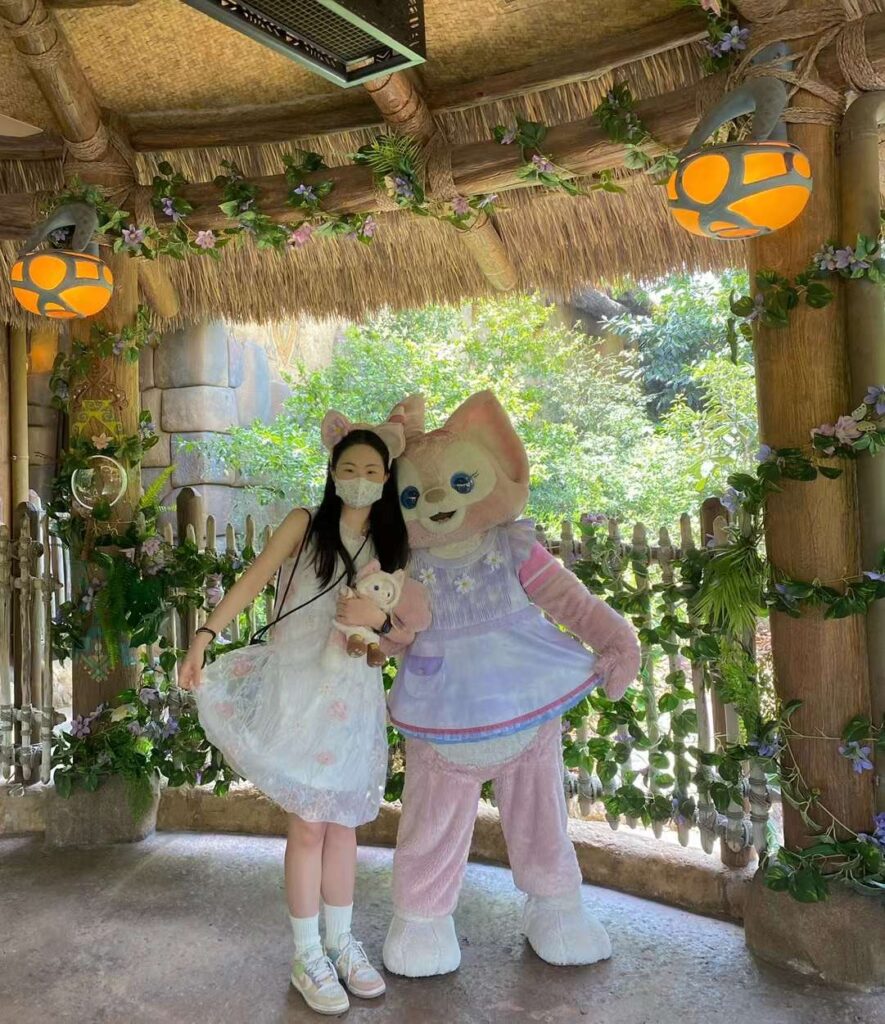

✨Shanghai is in the east of China.
It is about 6,340 square kilometers. It draws much attention from all over the world and is renowned as an international metropolis. Situated on the estuary of Yangtze River, it served as the most influential economic, financial, international trade, and cultural center in East China.
Two must-see places: The Bund and the Oriental Pearl TV Tower.
The Bund: Speaking of Shanghai, you must go to the fat Bund of the Huangpu River. It is an iconic window of Shanghai and a symbol of the bustling city of Shanghai.
Oriental Pearl TV Tower: Shanghai is very beautiful during the day, and Shanghai is a unique scene at night. Shanghai is most beautiful at night.
✨Beijing, the capital city of China
Is a vibrant and historical metropolis. Beijing has a rich history dating back over 3,000 years, and it has served as the capital for several dynasties.

One of the most iconic landmarks in Beijing is the Great Wall of China, a UNESCO World Heritage Site. This ancient structure stretches over 13,000 miles and is a testament to China’s rich cultural heritage.

Also referred to as the Palace Museum in the modern days, the Forbidden City is located in the heart of Beijing. It is an ancient architectural complex with a history of more than 600 years. In the Ming and Qing dynasties, twenty-four emperors lived here ruling China for nearly 500 years.
✨Xian, capital of China’s Shaanxi Province

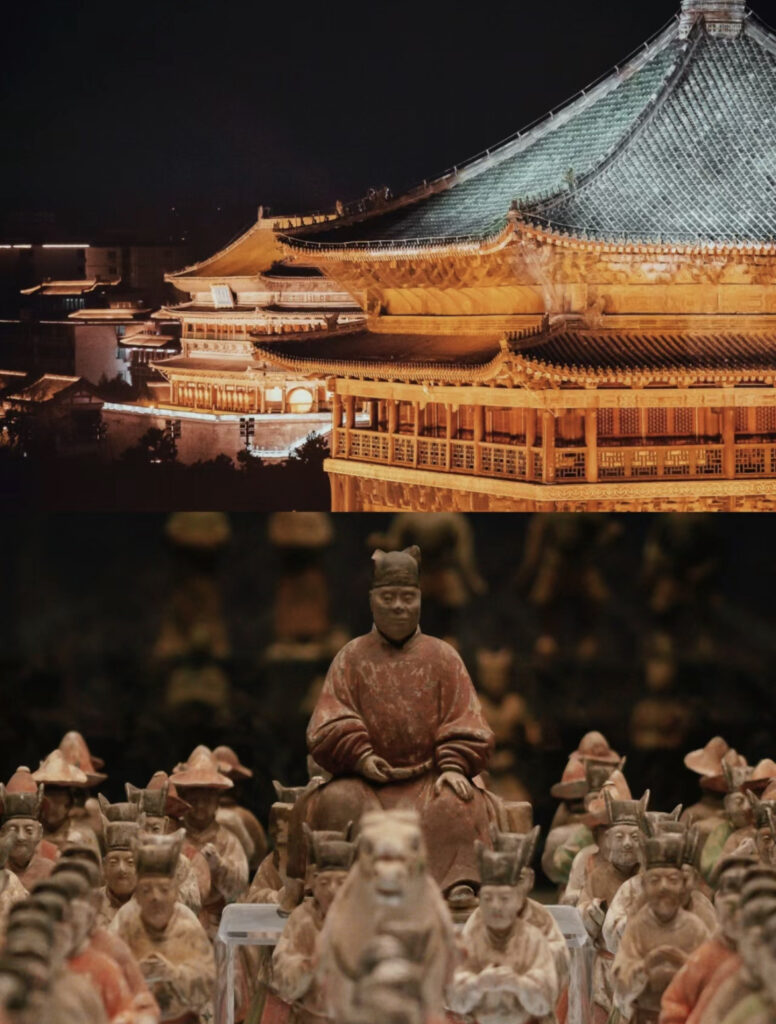
Capital of China’s Shaanxi Province has seen the rise and fall of a great number of dynasties. It served intermittently as the capital of 13 dynasties over 1200 years. There are countless historic sites and natural scenery spread in and around the city, such as the world-famous Terra Cotta Warriors, the city wall of the Ming Dynasty, the Qian Mausoleum and so on.
Traditional food in China
Chinese dumplings

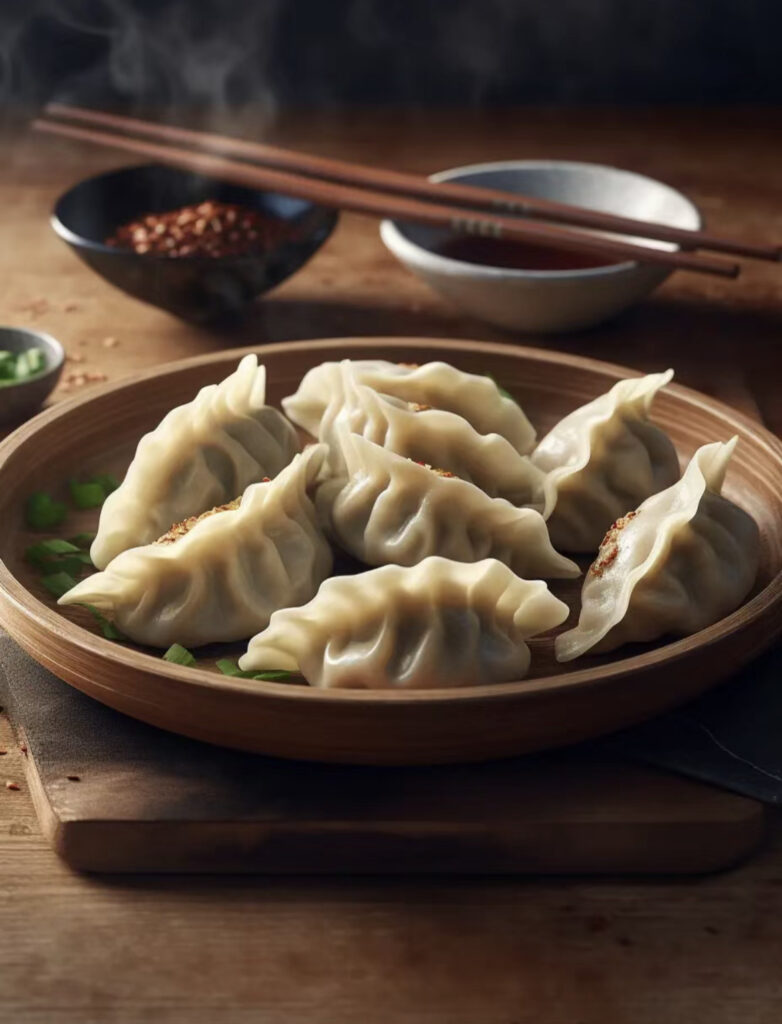
Chinese people all over China love Jiaozi, also known as Chinese dumplings. They prepare them by wrapping minced meat and vegetables in a thin dough wrapper, and then cook them by boiling, steaming, or pan-frying.
Jiaozi serves as a symbol of prosperity and good luck, and people often serve them during the Chinese New Year.
Traditional Costumes of China



4 Traditional Chinese Clothing and Dress: Hanfu, Qipao, Tang Suit, Zhongshan Suit
Festivals in China
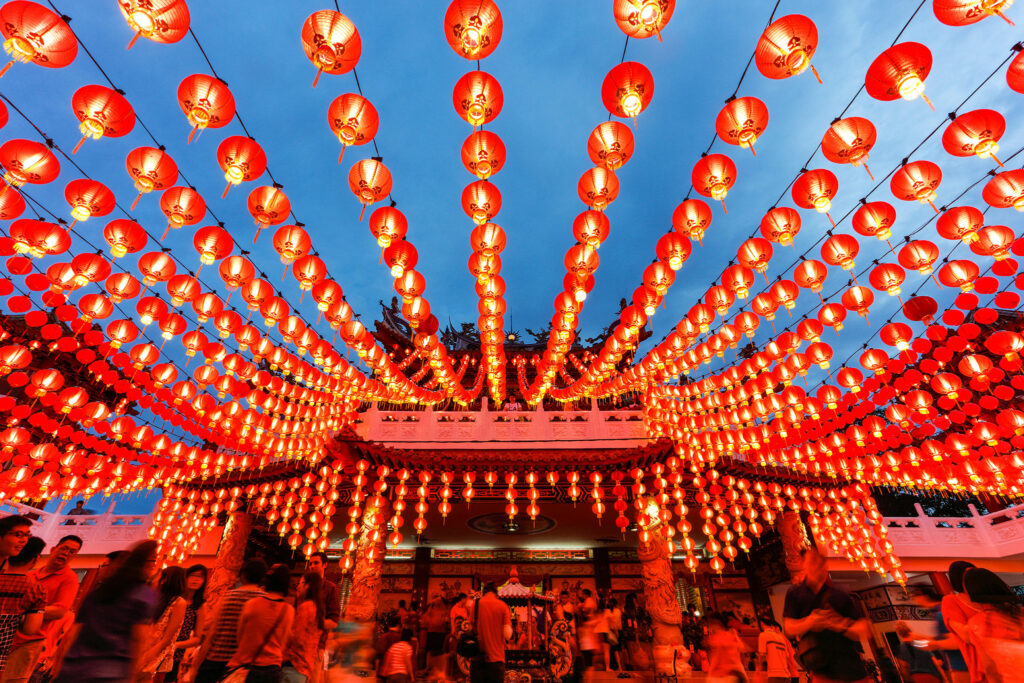
Chinese New Year is the festival that celebrates the beginning of a new year on the traditional lunisolar Chinese calendar. In Chinese, people commonly refer to the festival as the Spring Festival.
Learn More about Chinese New Year!
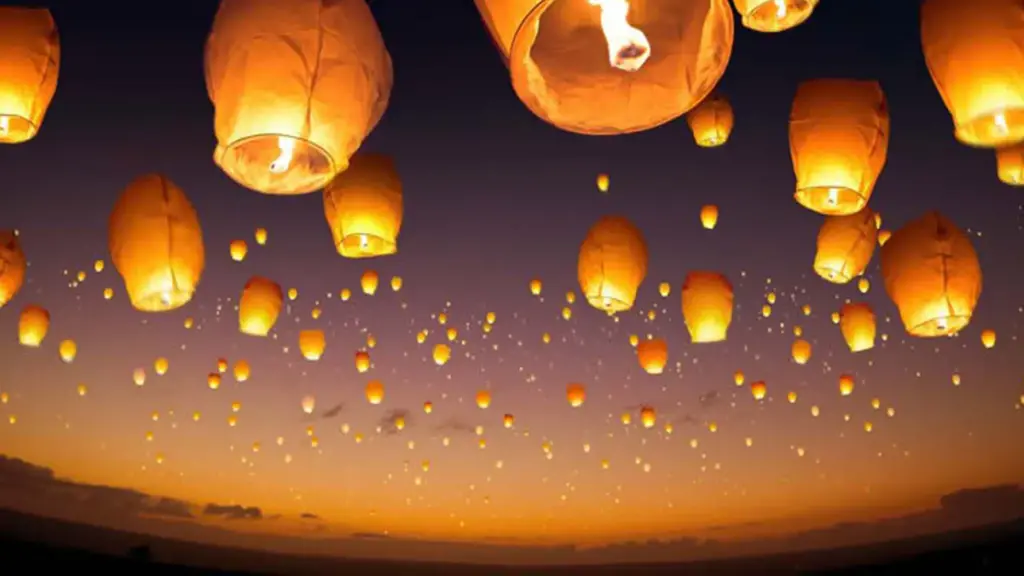 The Mid-Autumn Festival, also referred to as the Moon Festival or Mooncake Festival, is a harvest festival that Chinese culture celebrates. They observe it on the 15th day of the 8th month of the Chinese lunisolar calendar, coinciding with a full moon at night. This corresponds to mid-September to early October on the Gregorian calendar.
The Mid-Autumn Festival, also referred to as the Moon Festival or Mooncake Festival, is a harvest festival that Chinese culture celebrates. They observe it on the 15th day of the 8th month of the Chinese lunisolar calendar, coinciding with a full moon at night. This corresponds to mid-September to early October on the Gregorian calendar.
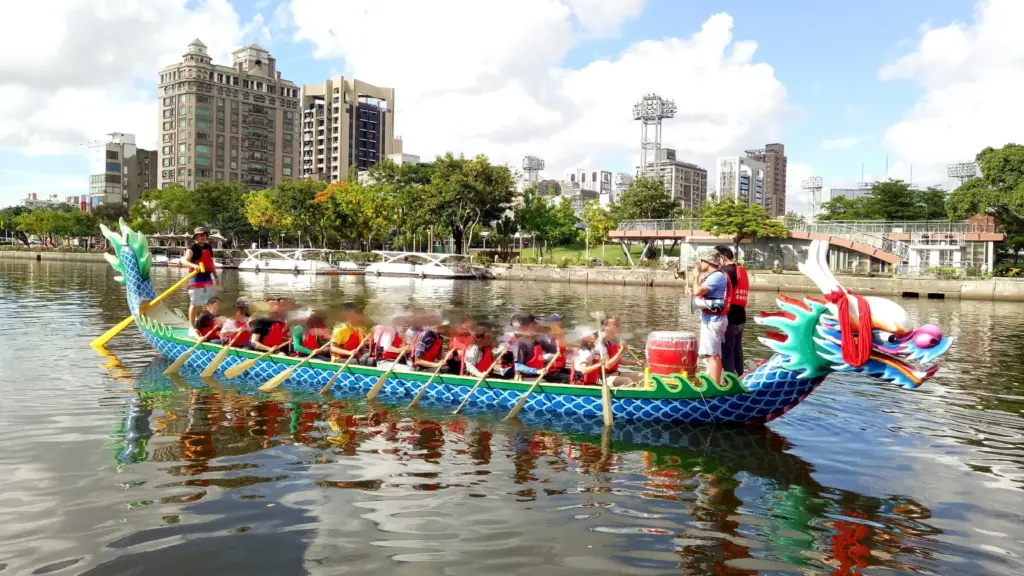
The Dragon Boat Festival is a traditional Chinese holiday which occurs on the fifth day of the fifth month of the Chinese calendar, which corresponds to late May or June in the Gregorian calendar.
Learn More about the Dragon Boat Festival!
 People celebrate Laba Festival as a traditional Chinese holiday on the eighth day of the month of La, the twelfth month of the Chinese calendar.
People celebrate Laba Festival as a traditional Chinese holiday on the eighth day of the month of La, the twelfth month of the Chinese calendar.

Join us in exploring the cultural facets of China. Are you intrigued by Chinese cuisine and their vibrant festivals? If so, delve into this article and consider experiencing China firsthand someday.
Meet Zoe!

大家好,我叫汪彦婷,也可以叫我Zoe,我是北爱荷华大学和上海电机学院合作项目(国际经济与贸易专业)的转学生,在商学院会计专业读大三。在课余时间,我喜欢听音乐、看电影我来自中国,是土生土长的上海人,我性格开朗真诚,mbti是infp。我喜欢运动,喜欢骑自行车,打篮球和游泳。在uni的第一个半月里,我就喜欢上了uni和cedar falls,在这里我遇到了很多友好善良的人,也尝试了攀岩、划皮艇,一切对我来说都是新的挑战。
Hello, everyone. My name is Wang Yanting, or Zoe. I am a junior majoring in accounting and a transfer student of the cooperation program between University of Northern Iowa and Shanghai Dianji University (International Economics and Trade). In my spare time, I like listening to music and watching movies.
I am from China, a native of Shanghai, I am outgoing and sincere, mbti is infp. I like sports. I like riding my bike, playing basketball and swimming. During my first month and a half at uni, I fell in love with uni and cedar falls, where I met a lot of friendly and kind people and tried rock climbing, kayaking, and everything was a new challenge for me.Zoe – Undergraduate Student
Where is China?
China officially the People’s Republic of China is a country in East Asia. It is the world’s second-most populous country with a population exceeding 1.4 billion. China spans the equivalent of five time zones and borders fourteen countries by land, tied with Russia as having the most of any country in the world.
✨Shanghai




✨Shanghai is in the east of China.
It is about 6,340 square kilometers. It draws much attention from all over the world and is renowned as an international metropolis. Situated on the estuary of Yangtze River, it served as the most influential economic, financial, international trade, and cultural center in East China.
Two must-see places: The Bund and the Oriental Pearl TV Tower.
The Bund: Speaking of Shanghai, you must go to the fat Bund of the Huangpu River. It is an iconic window of Shanghai and a symbol of the bustling city of Shanghai.
Oriental Pearl TV Tower: Shanghai is very beautiful during the day, and Shanghai is a unique scene at night. Shanghai is most beautiful at night.
✨Beijing, the capital city of China
Is a vibrant and historical metropolis. Beijing has a rich history dating back over 3,000 years, and it has served as the capital for several dynasties.

One of the most iconic landmarks in Beijing is the Great Wall of China, a UNESCO World Heritage Site. This ancient structure stretches over 13,000 miles and is a testament to China’s rich cultural heritage.

Also referred to as the Palace Museum in the modern days, the Forbidden City is located in the heart of Beijing. It is an ancient architectural complex with a history of more than 600 years. In the Ming and Qing dynasties, twenty-four emperors lived here ruling China for nearly 500 years.
✨Xian, capital of China’s Shaanxi Province


Capital of China’s Shaanxi Province has seen the rise and fall of a great number of dynasties. It served intermittently as the capital of 13 dynasties over 1200 years. There are countless historic sites and natural scenery spread in and around the city, such as the world-famous Terra Cotta Warriors, the city wall of the Ming Dynasty, the Qian Mausoleum and so on.
Traditional food in China
Chinese dumplings


Chinese people all over China love Jiaozi, also known as Chinese dumplings. They prepare them by wrapping minced meat and vegetables in a thin dough wrapper, and then cook them by boiling, steaming, or pan-frying.
Jiaozi serves as a symbol of prosperity and good luck, and people often serve them during the Chinese New Year.
Traditional Costumes of China



4 Traditional Chinese Clothing and Dress: Hanfu, Qipao, Tang Suit, Zhongshan Suit
Festivals in China

Chinese New Year is the festival that celebrates the beginning of a new year on the traditional lunisolar Chinese calendar. In Chinese, people commonly refer to the festival as the Spring Festival.
Learn More about Chinese New Year!
 The Mid-Autumn Festival, also referred to as the Moon Festival or Mooncake Festival, is a harvest festival that Chinese culture celebrates. They observe it on the 15th day of the 8th month of the Chinese lunisolar calendar, coinciding with a full moon at night. This corresponds to mid-September to early October on the Gregorian calendar.
The Mid-Autumn Festival, also referred to as the Moon Festival or Mooncake Festival, is a harvest festival that Chinese culture celebrates. They observe it on the 15th day of the 8th month of the Chinese lunisolar calendar, coinciding with a full moon at night. This corresponds to mid-September to early October on the Gregorian calendar.

The Dragon Boat Festival is a traditional Chinese holiday which occurs on the fifth day of the fifth month of the Chinese calendar, which corresponds to late May or June in the Gregorian calendar.
Learn More about the Dragon Boat Festival!
 People celebrate Laba Festival as a traditional Chinese holiday on the eighth day of the month of La, the twelfth month of the Chinese calendar.
People celebrate Laba Festival as a traditional Chinese holiday on the eighth day of the month of La, the twelfth month of the Chinese calendar.

Discover a captivating culture worth exploring! Come along on a journey with Johan to uncover Venezuela. You’ll encounter its breathtaking wonders and meet its vibrant community.”
Meet Johan!
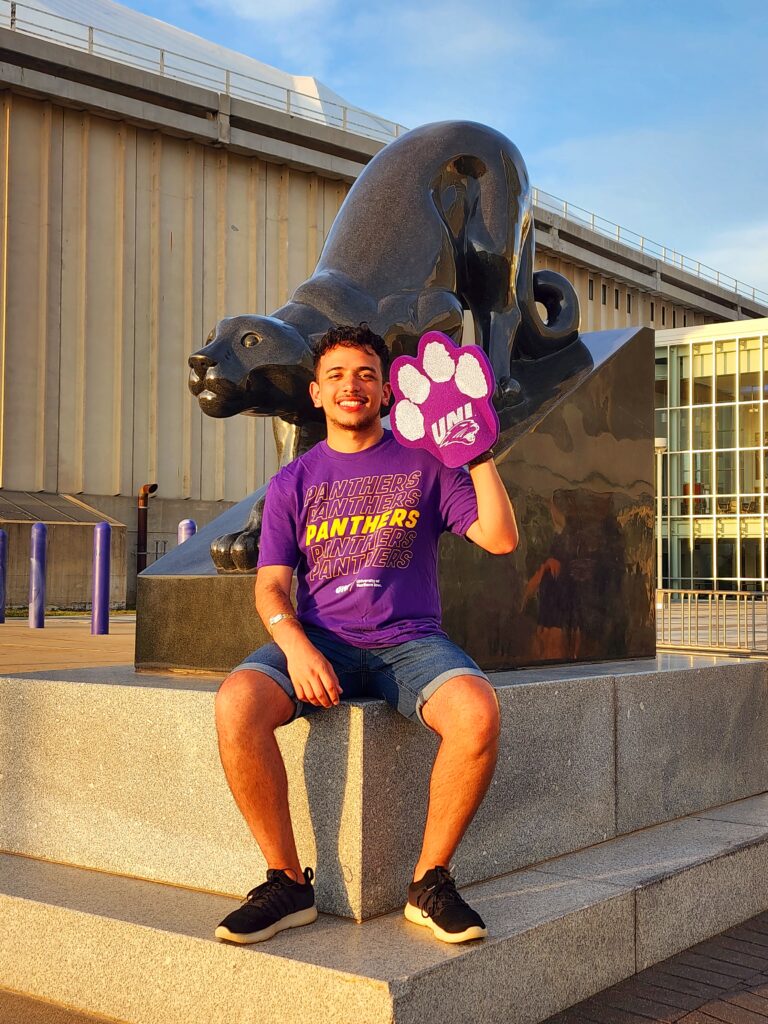
Hola a todos! Mi nombre es Johan López, y vengo de Venezuela, un país al norte de Sudamérica. Estoy estudiando en UNI por un semestre como parte del programa de intercambio Global Undergraduate Exchange Program (Global UGRAD). Yo estoy estudiando Idiomas Modernos, más específicamente traducción en tres idiomas, los cuales son español, inglés y francés. Mi experiencia aquí en UNI ha sido increíble, y estoy tratando de disfrutar mucho cada día y aprender lo más que pueda en mis clases, y también de toda la gente increíble que he conocido.
Hello everyone! My name is Johan Lopez, and I come from Venezuela, a country in the north of South America. I am studying at UNI for one semester as part of the Global Undergraduate Exchange Program (Global UGRAD). I am majoring in translation in three languages, which are Spanish, English, and French. My experience here at UNI has been amazing, and I am trying to make the most out of my days here as I try to learn as much as I can in my classes, and also from all the amazing people I have met.
Johan Lopez – Sponsored Student
Where is Venezuela?
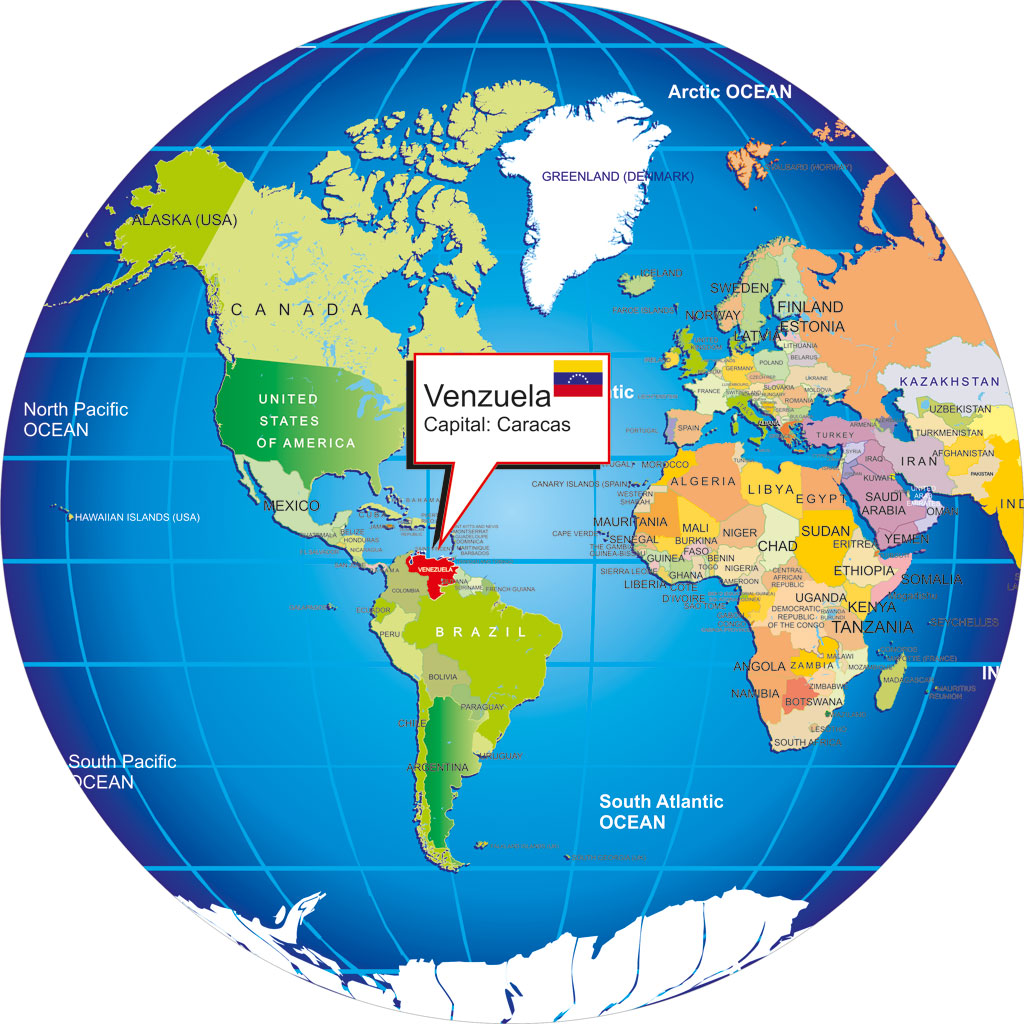
Nestled in northern South America, it is surrounded by the Caribbean Sea, Atlantic Ocean, Guyana, Brazil, and Colombia.
Places you should visit in Venezuela
Mérida
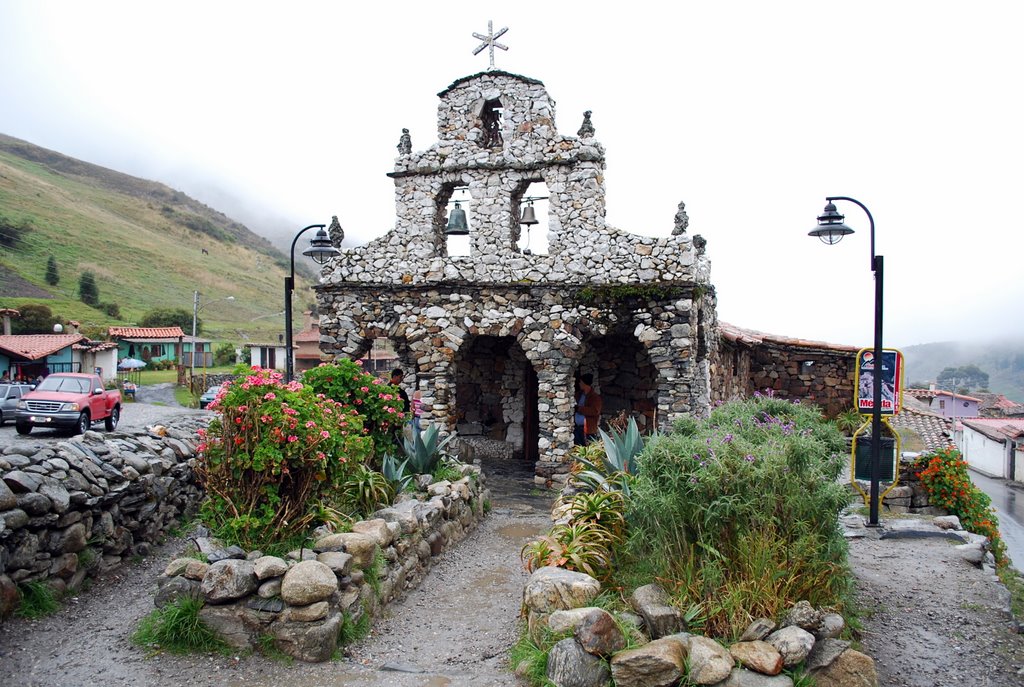

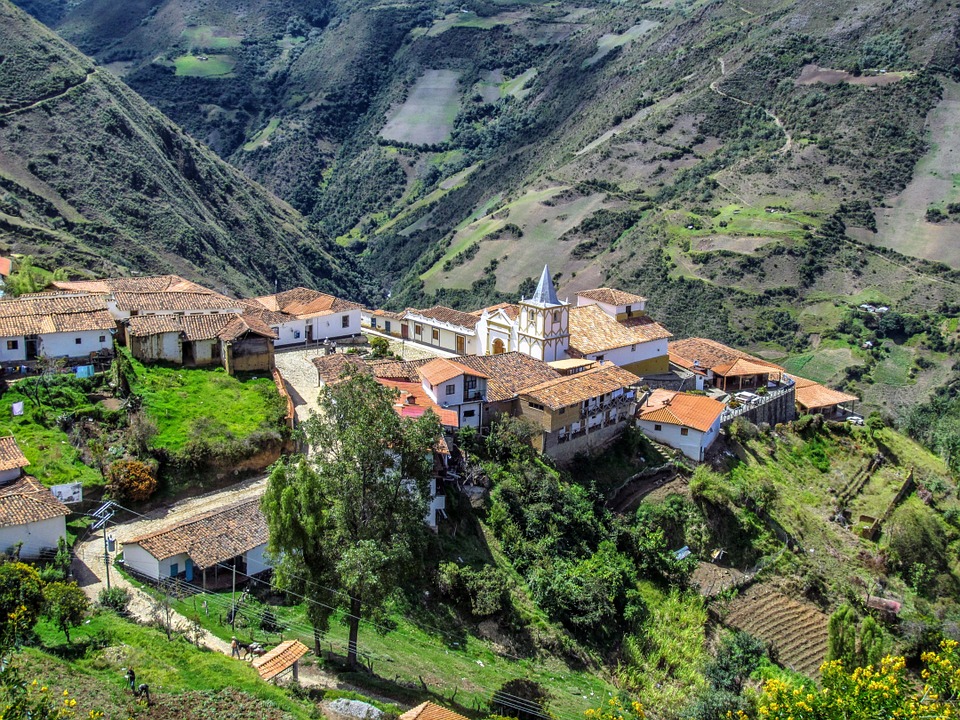
Santiago de los Caballeros de Mérida, serves as the capital of a Venezuelan state sharing its name. Nestled amidst two of Venezuela’s Andean Mountain ranges. Mérida is also home to the University of the Andes which is the country’s second-oldest university, established in 1785.
Margarita Island
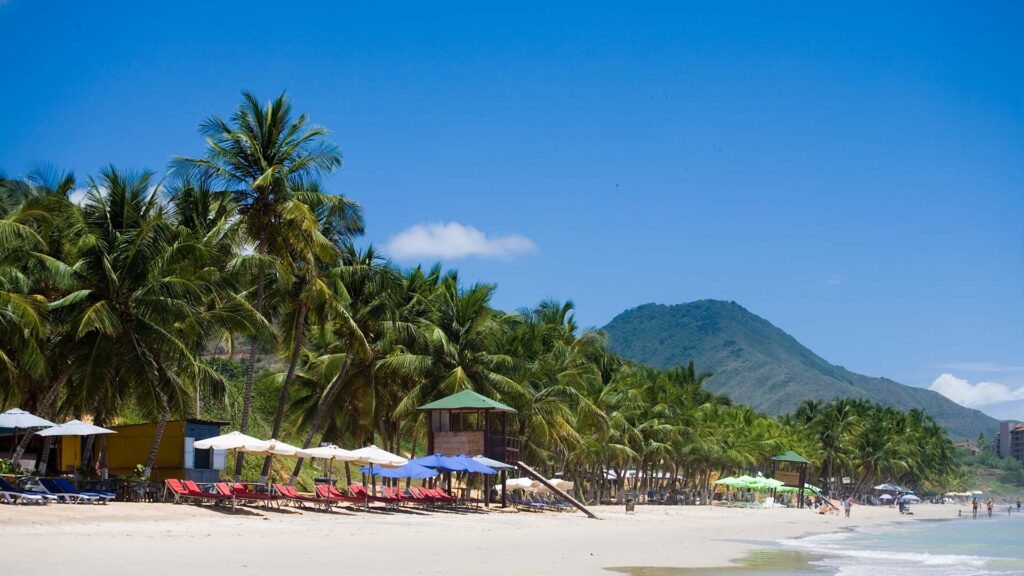
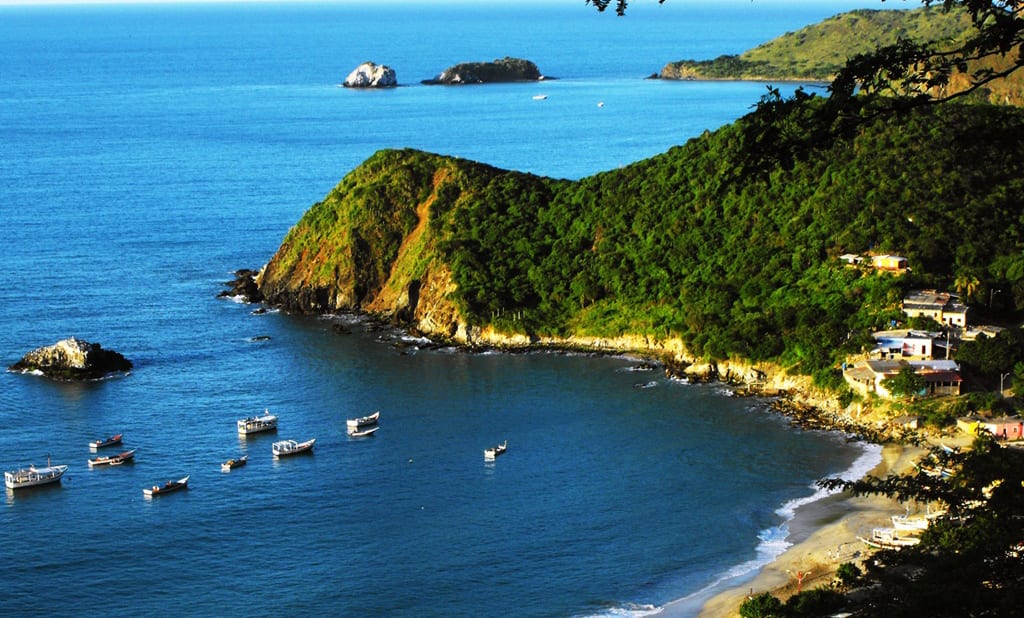
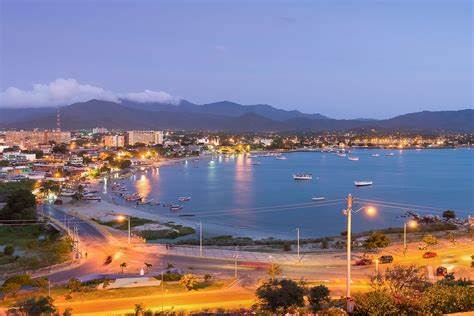
Margarita Island, the largest in the Venezuelan state of Nueva Esparta, graces the northeastern coast in the Caribbean Sea. People celebrate this island for its pristine white sandy beaches, clear waters, and enchanting tropical scenery. Visitors can indulge in a range of activities, including snorkeling, diving, sunbathing, fishing, and also windsurfing and kitesurfing.
Coro, Venezuela


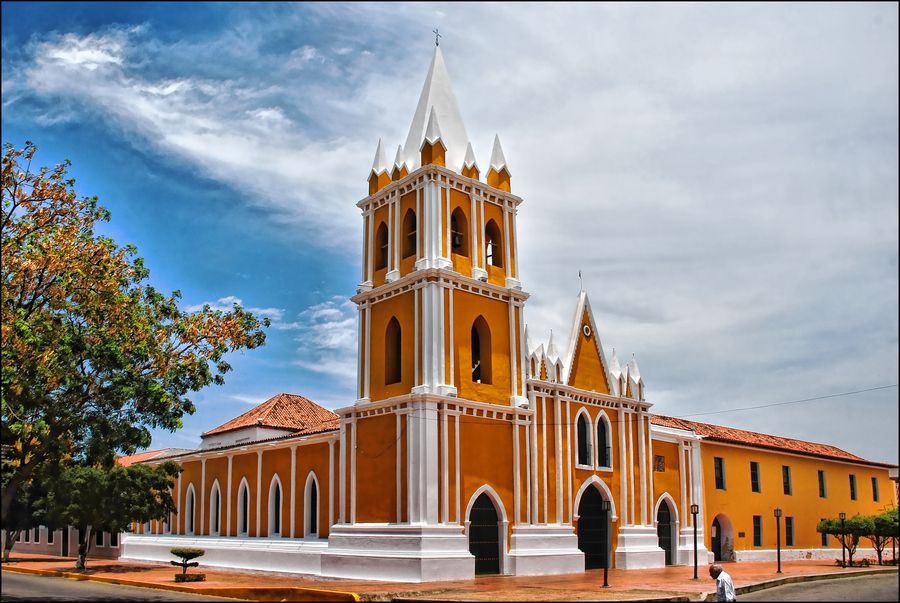
Coro, the capital of Falcon State, stands as Venezuela’s second oldest city. The city boasts a monumental architectural heritage from colonial and republican eras, showcasing the distinctive characteristics of Andalusian architecture from southern Spain. Its unique personality arises from Native American craftsmanship’s influence, as it utilizes materials and techniques like adobe and wattle.
Caracas – The capital
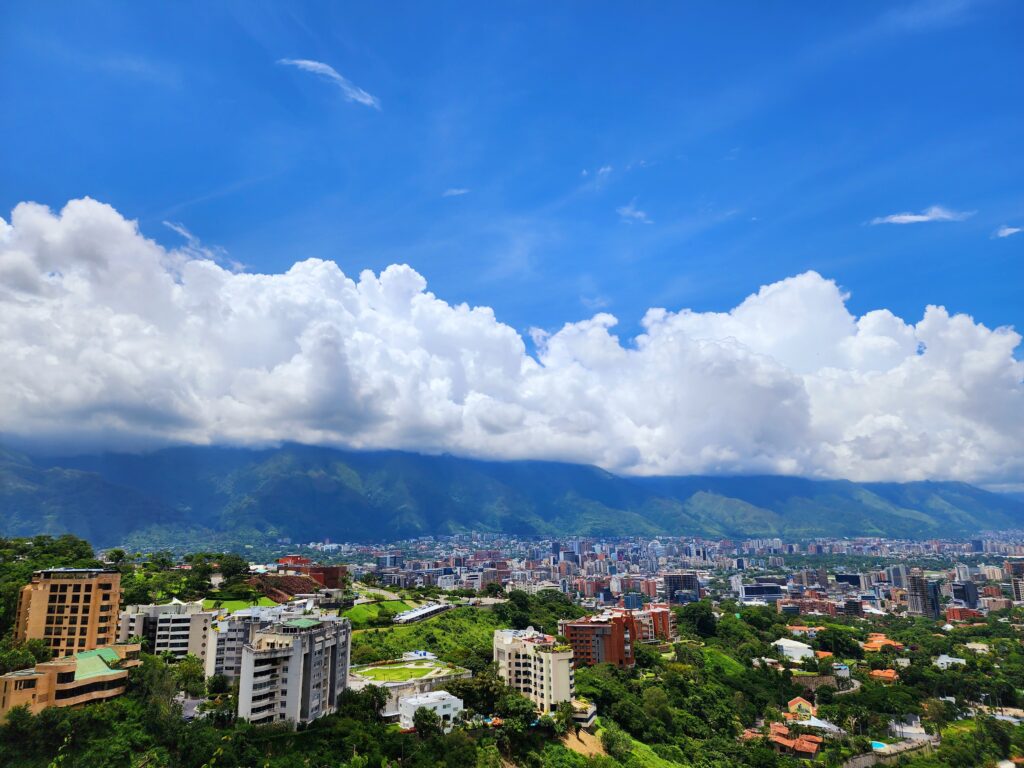
Caracas is the capital and largest city of Venezuela, and the center of the Metropolitan Region of Caracas.
Cuyagua

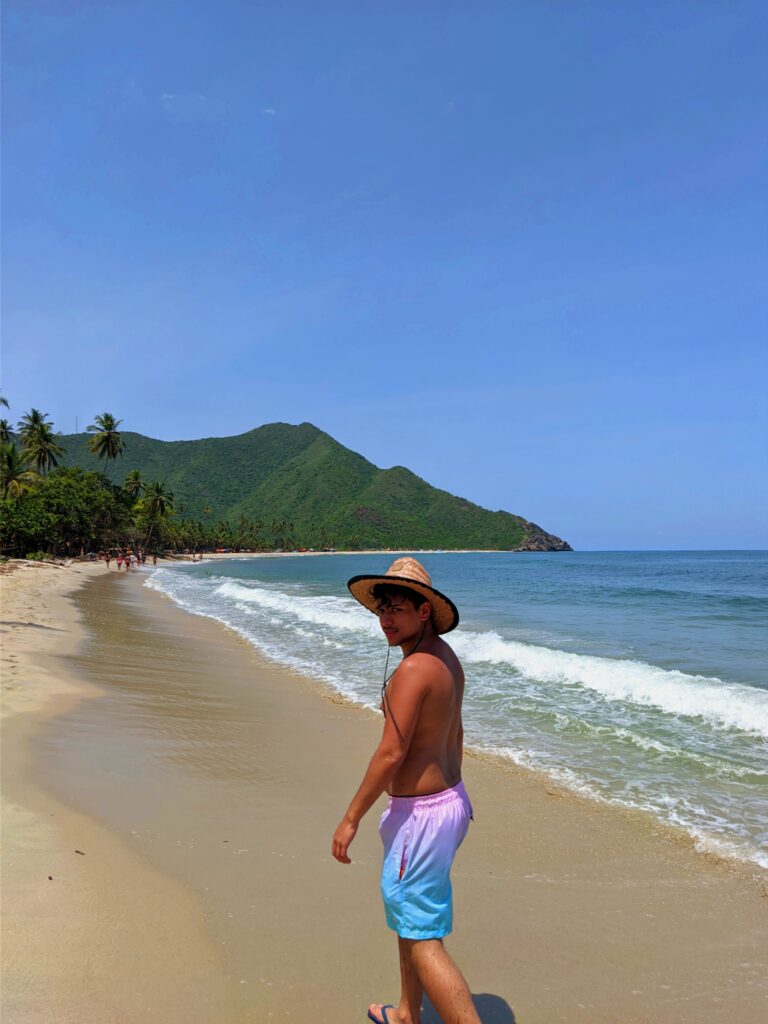
Isla Larga
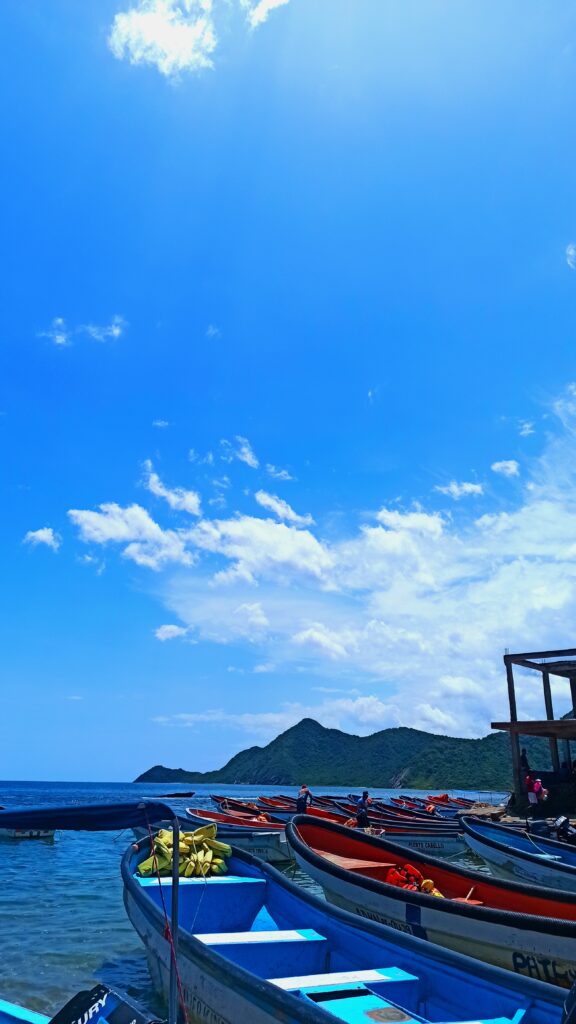
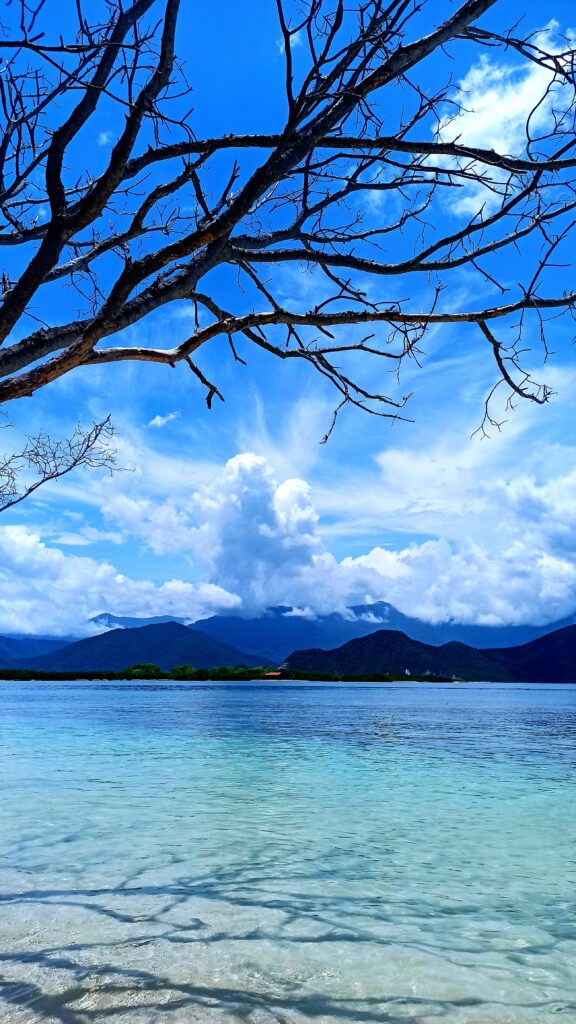
Traditional food of Venezuela
AREPA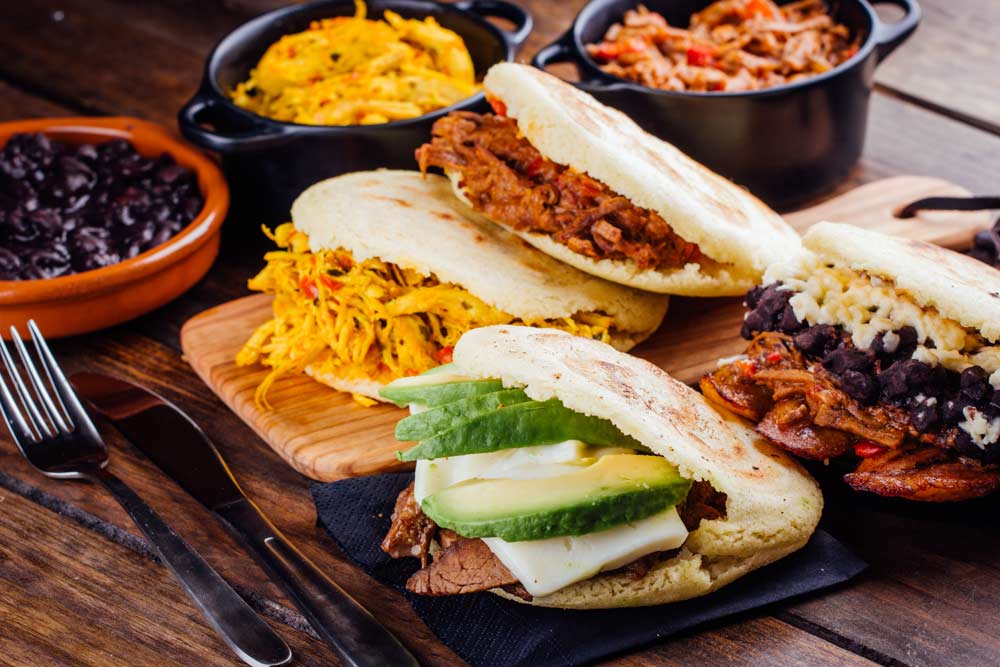
The arepa stands as an emblem of Venezuelan cuisine and remains one of the enduring pre-Hispanic foods in Venezuela. In a 2015 survey, nearly 70 percent of Venezuelans reported regularly enjoying arepas. Venezuelans commonly savor these versatile treats all day, both as snacks and alongside their meals.
Festivals in Venezuela
Festivals are vibrant and colorful festivals.They deeply root themselves in a fusion of Spanish, Caribbean, and Indigenous traditions.
Carúpano Carnaval

The Carúpano Carnivals are vibrant festivities in the city of Carúpano in the state of Sucre. Renowned as one of the most celebrated carnivals in the country, it has earned the distinction of being a Festival of Regional Tourist Interest.
These carnivals characterize themselves with traditional elements, including colorful costumes, ornate floats (carrozas), lively town-wide celebrations, and vibrant parades.
Corpus Christi Devil Dancing, San Francisco de Yare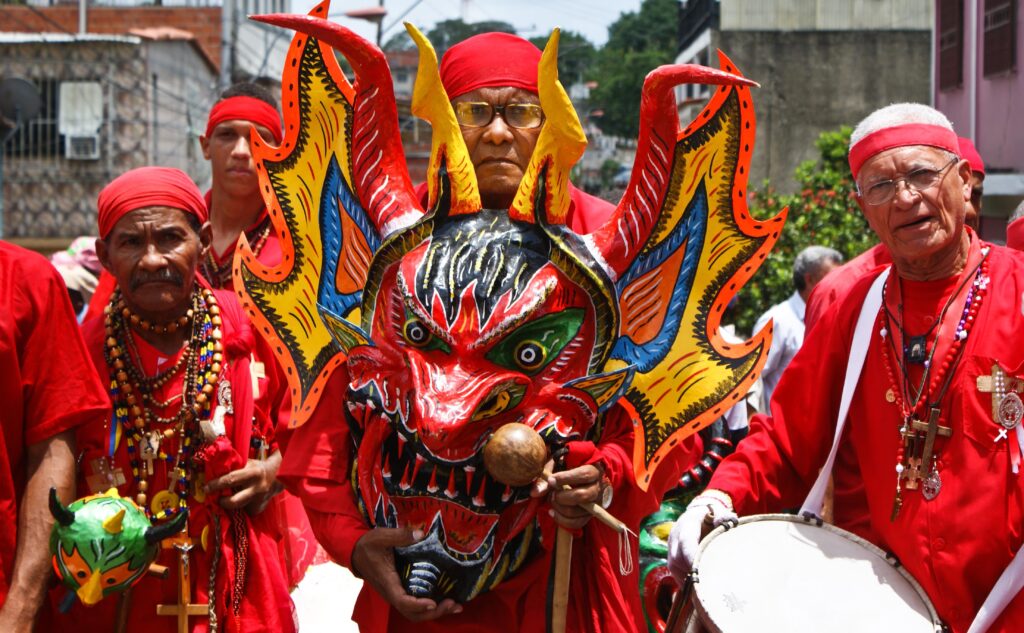
The festival of Los Diablos Danzantes features men in San Francisco de Yare who don eerie devil masks and crimson attire, embodying the “devil dancers” in a symbolic act. This haunting troupe gathers in the town’s central square, adorned with rosary beads, crosses, and maracas, to march through the streets to the eerie tunes of musical poems.
Traditional Costumes in Venezuela
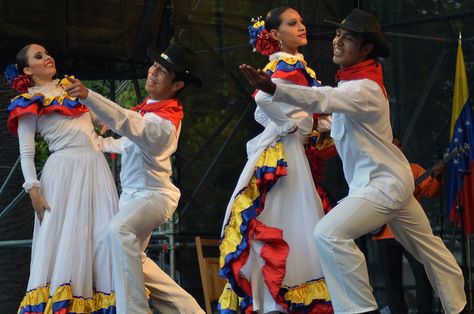
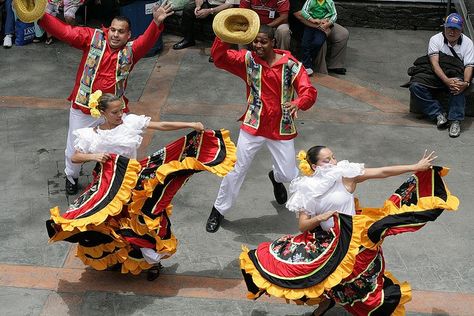
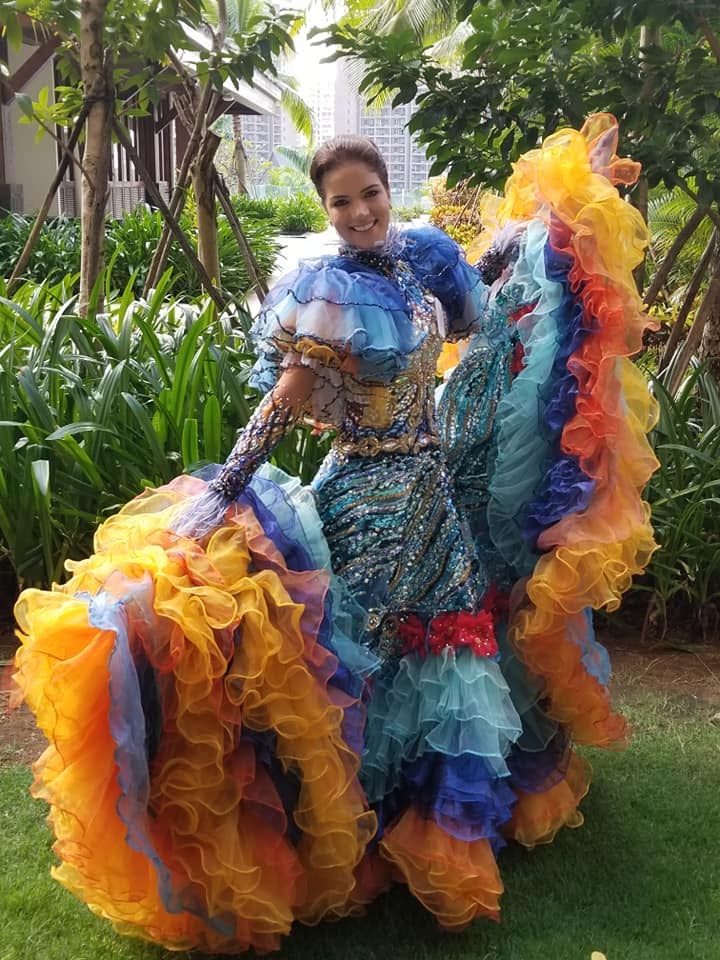
Why is Venezuela special to you?
Venezuela is the country where I was born, and most of my family lives there. I have some sense of identity and I love my country despite the difficulties we face on a daily basis. I keep thinking I can contribute to its betterment day by day even if it is with small actions because I want to have a better place to live in.
Johan Lopez
Why is UNI special to you?
UNI was the University I was chosen to go to as part of my exchange program. I keep thinking I couldn’t have been sent to a better place. This university and all its people have made me feel like home, and it will always have a special place in my heart.
I LOVE ITSponsored Student

Discover a captivating culture worth exploring! Come along on a journey with Johan to uncover Venezuela. You’ll encounter its breathtaking wonders and meet its vibrant community.”
Meet Johan!

Hola a todos! Mi nombre es Johan López, y vengo de Venezuela, un país al norte de Sudamérica. Estoy estudiando en UNI por un semestre como parte del programa de intercambio Global Undergraduate Exchange Program (Global UGRAD). Yo estoy estudiando Idiomas Modernos, más específicamente traducción en tres idiomas, los cuales son español, inglés y francés. Mi experiencia aquí en UNI ha sido increíble, y estoy tratando de disfrutar mucho cada día y aprender lo más que pueda en mis clases, y también de toda la gente increíble que he conocido.
Hello everyone! My name is Johan Lopez, and I come from Venezuela, a country in the north of South America. I am studying at UNI for one semester as part of the Global Undergraduate Exchange Program (Global UGRAD). I am majoring in translation in three languages, which are Spanish, English, and French. My experience here at UNI has been amazing, and I am trying to make the most out of my days here as I try to learn as much as I can in my classes, and also from all the amazing people I have met.
Johan Lopez – Sponsored Student
Where is Venezuela?

Nestled in northern South America, it is surrounded by the Caribbean Sea, Atlantic Ocean, Guyana, Brazil, and Colombia.
Places you should visit in Venezuela
Mérida



Santiago de los Caballeros de Mérida, serves as the capital of a Venezuelan state sharing its name. Nestled amidst two of Venezuela’s Andean Mountain ranges. Mérida is also home to the University of the Andes which is the country’s second-oldest university, established in 1785.
Margarita Island



Margarita Island, the largest in the Venezuelan state of Nueva Esparta, graces the northeastern coast in the Caribbean Sea. People celebrate this island for its pristine white sandy beaches, clear waters, and enchanting tropical scenery. Visitors can indulge in a range of activities, including snorkeling, diving, sunbathing, fishing, and also windsurfing and kitesurfing.
Coro, Venezuela



Coro, the capital of Falcon State, stands as Venezuela’s second oldest city. The city boasts a monumental architectural heritage from colonial and republican eras, showcasing the distinctive characteristics of Andalusian architecture from southern Spain. Its unique personality arises from Native American craftsmanship’s influence, as it utilizes materials and techniques like adobe and wattle.
Caracas – The capital

Caracas is the capital and largest city of Venezuela, and the center of the Metropolitan Region of Caracas.
Cuyagua


Isla Larga


Traditional food of Venezuela
AREPA
The arepa stands as an emblem of Venezuelan cuisine and remains one of the enduring pre-Hispanic foods in Venezuela. In a 2015 survey, nearly 70 percent of Venezuelans reported regularly enjoying arepas. Venezuelans commonly savor these versatile treats all day, both as snacks and alongside their meals.
Festivals in Venezuela
Festivals are vibrant and colorful festivals.They deeply root themselves in a fusion of Spanish, Caribbean, and Indigenous traditions.
Carúpano Carnaval

The Carúpano Carnivals are vibrant festivities in the city of Carúpano in the state of Sucre. Renowned as one of the most celebrated carnivals in the country, it has earned the distinction of being a Festival of Regional Tourist Interest.
These carnivals characterize themselves with traditional elements, including colorful costumes, ornate floats (carrozas), lively town-wide celebrations, and vibrant parades.
Corpus Christi Devil Dancing, San Francisco de Yare
The festival of Los Diablos Danzantes features men in San Francisco de Yare who don eerie devil masks and crimson attire, embodying the “devil dancers” in a symbolic act. This haunting troupe gathers in the town’s central square, adorned with rosary beads, crosses, and maracas, to march through the streets to the eerie tunes of musical poems.
Traditional Costumes in Venezuela



Why is Venezuela special to you?
Venezuela is the country where I was born, and most of my family lives there. I have some sense of identity and I love my country despite the difficulties we face on a daily basis. I keep thinking I can contribute to its betterment day by day even if it is with small actions because I want to have a better place to live in.
Johan Lopez
Why is UNI special to you?
UNI was the University I was chosen to go to as part of my exchange program. I keep thinking I couldn’t have been sent to a better place. This university and all its people have made me feel like home, and it will always have a special place in my heart.
I LOVE ITSponsored Student
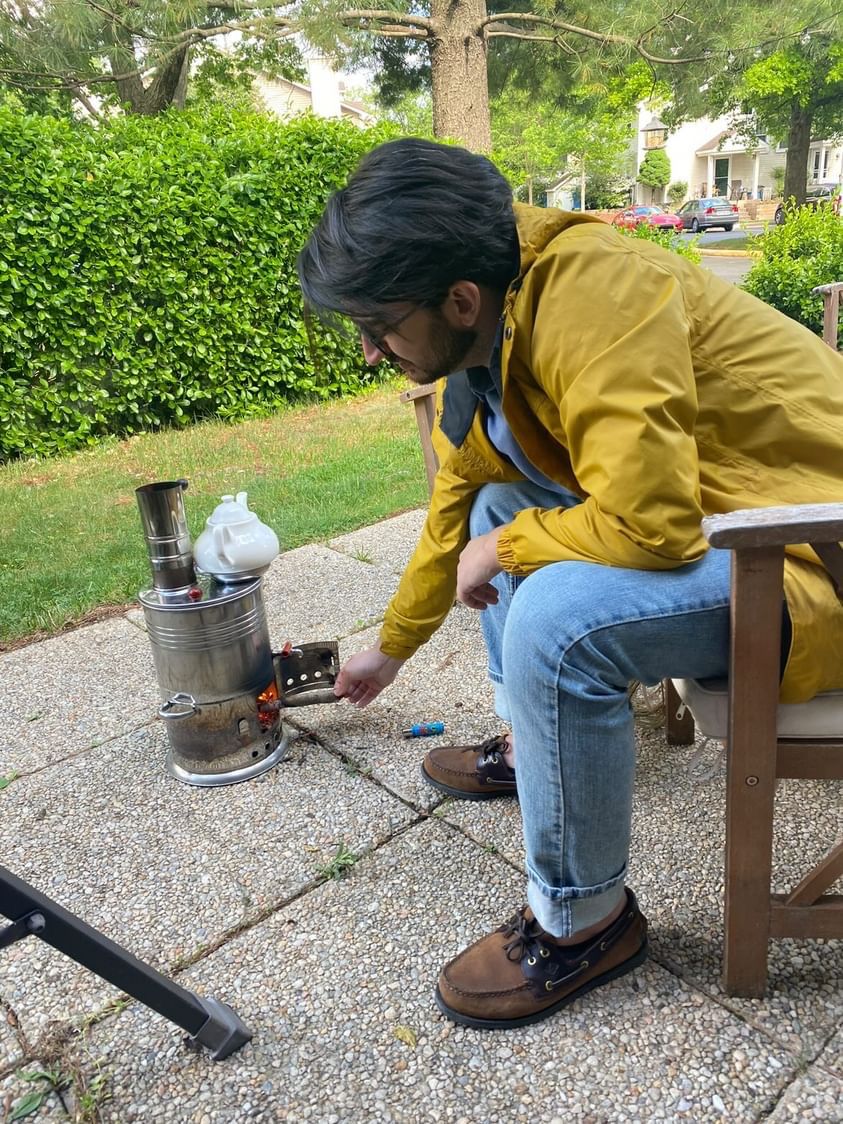
Welcome to a captivating journey through the enchanting land of Turkey! In this episode, we invite you to join us as we embark on an exploration of Turkey’s rich tapestry of beauty, culture, and tradition. Burak, who is not only an alumnus of UNI but also a passionate ambassador of his home country, Turkey.
Meet Burak!

Selam, ben Turkiye’den Burak. UNI mezunuyum ve finansal analizci olarak çalışıyorum. Mayıs 2021’de muhasebe bölümünden mezun oldum ve şu anda Macy’s Inc’de finansal analist olarak çalışıyorum. UNI’ye New York’tan uluslararası transfer öğrencisi olarak geldim. ABD eğitim sistemi tecrübesi olan biri olarak UNI çalışanlarından aldığım destek sayesinde transfer sürecinde hiç zorlanmadım. UNI, geçirdiğim süre boyunca çok sayıda gönüllülük fırsatı ve akademik rehberlik sağladı. Uluslararası öğrenci organizasyonlarında ve bölümümle ilgili organizasyonlarda aktif olarak yer aldım. Fırsatları da bu şekilde öğrendim. Danışmanlarım, profesörlerim ve meslektaşlarım yüksek öğrenimimi başarıyla tamamlamamda ve sonrasında iyi bir işe girmemde bana yardımcı oldular. Mezun olarak hâlâ Panther ailesinin büyük bir parçasıyım. UNI Mezunlar Derneği, toplumu meşgul edecek etkinlikler düzenlemektedir.
Hi, I am Burak from Turkey. I am a UNI graduate and work as a financial analyst. I graduated in May 2021 with an accounting degree and now working as a financial analyst at Macy’s Inc. I came to UNI as an international transfer student from New York. As someone who has experience in the US educational system and with the assistance I received from UNI staff, I didn’t struggle at all during the transfer process. UNI provided handful of volunteer opportunities and academic guidance throughout my time. I was an active participant of international student organizations and organizations that are related to my major. That’s how I learned about opportunities as well. My advisors, professors and peers helped me to complete my higher education successfully and land a decent job after that. I’m still a big part of Panther family as an alumni. UNI Alumni Association organizes events to keep the community engaged.
Ahmed Burak Cil – UNI Alumni
Where is Turkey?

Turkey, known as the Republic of Türkiye. A unique transcontinental nation situated at the intersection of Southeast Europe and West Asia. The majority of its territory lies on the Anatolian Peninsula in West Asia, with a smaller section known as East Thrace situated on the Balkan Peninsula in Southeast Europe.
It shares its borders with the Black Sea to the north, Georgia to the northeast, Armenia, Azerbaijan, and Iran to the east, Iraq to the southeast, Syria and the Mediterranean Sea to the south, the Aegean Sea to the west, and Greece and Bulgaria to the northwest.
Places you should visit in Turkey
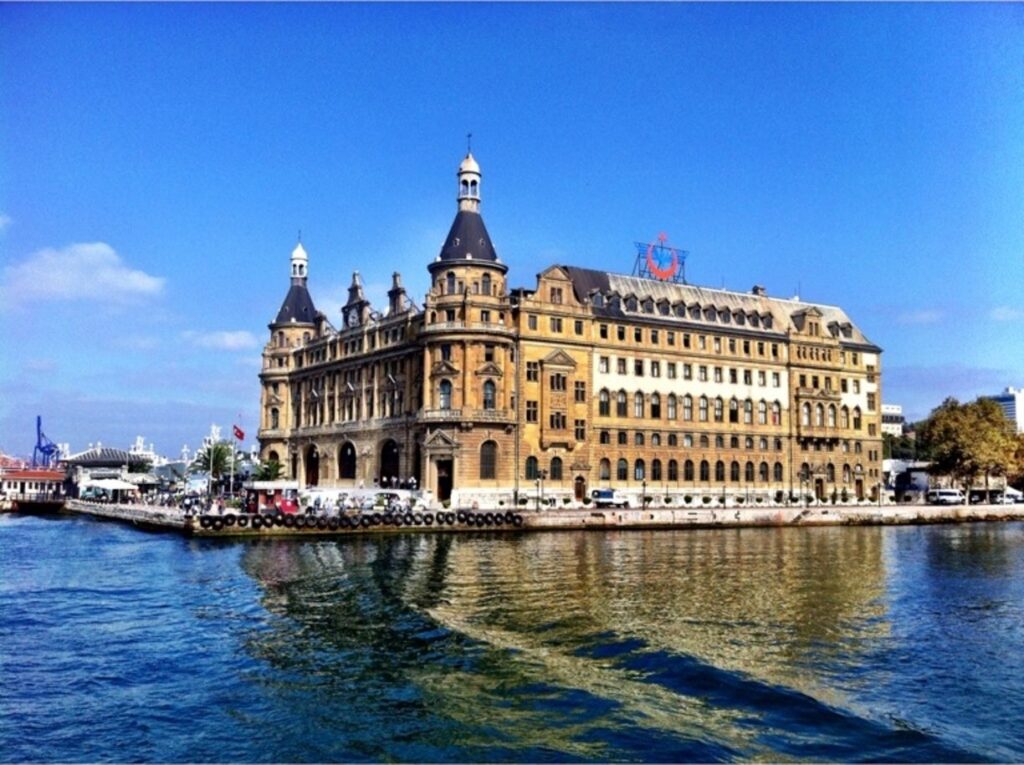
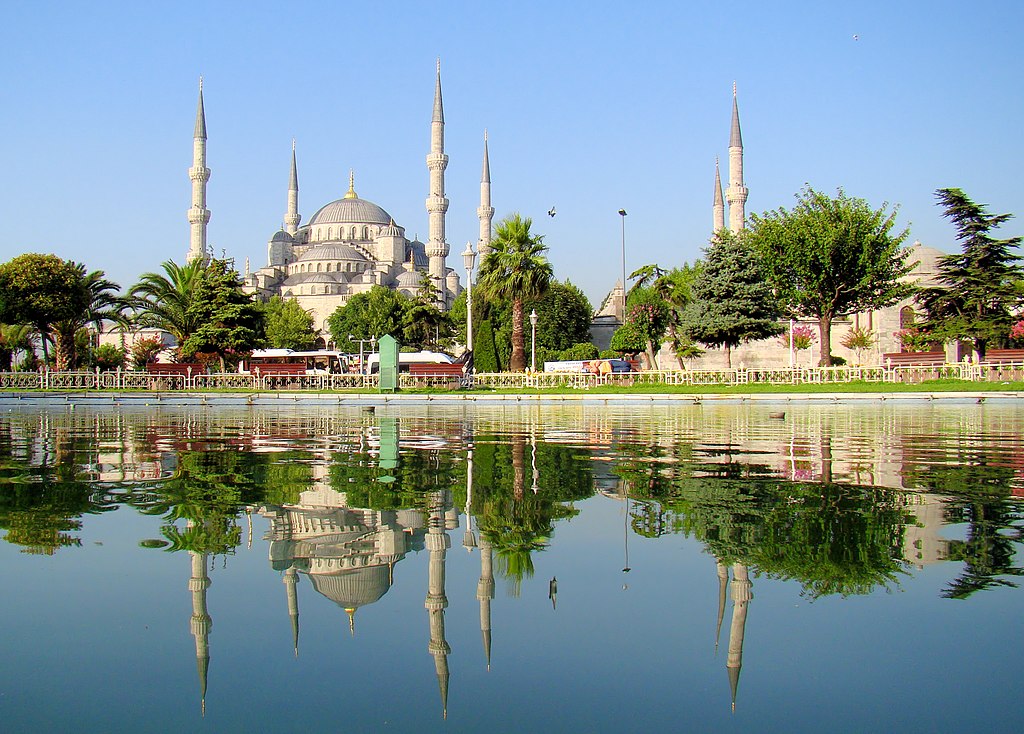
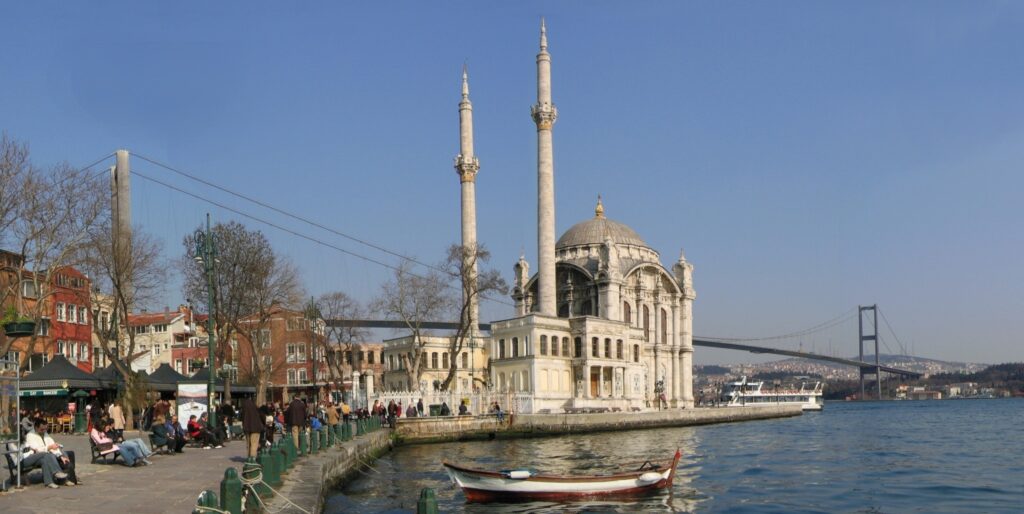
Istanbul as the culture center of Turkey
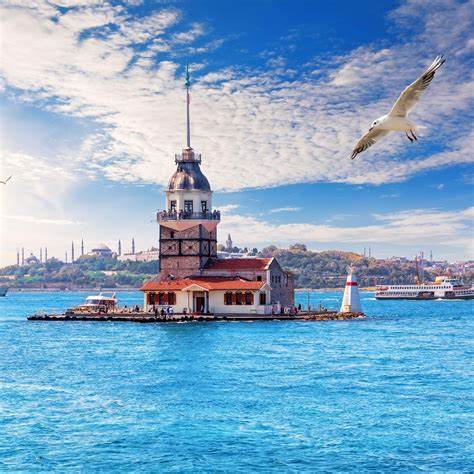
Istanbul, referred to as the heart of Turkey, holds a prominent position as the country’s economic, cultural, and historical hub. Commonly hailed as the capital of Turkish culture. This vibrant city spans the Bosphorus Strait. Where Europe and Asia Minor intersect, creating a unique blend of eastern and western influences, both in geography and culture.
Istanbul stands as one of Turkey’s top tourist destinations, boasting a wealth of renowned historical and cultural landmarks. UNESCO-recognized treasures such as Hagia Sophia, Sarayburnu, and Topkapi Palace located in Turkey. These iconic monuments exemplify the rich heritage that draws visitors from around the world to this remarkable city.
Hagia Sophia – A Christian church that became a mosque.
Hagia Sophia, also known as the Church of the Divine Wisdom, is a historic Byzantine structure in Istanbul. Built as a Christian church in the 6th century under Emperor Justinian I. It has transitioned between being a mosque, a museum, and a mosque again over the centuries. The building showcases a blend of Islamic inscriptions and Christian mosaics, reflecting the region’s changing religious influences.


Hagia Sophia
TopKapi Palace


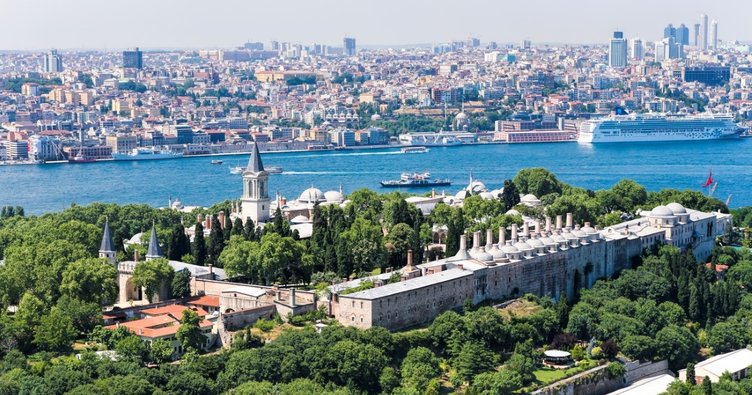
Topkapi Palace, situated in Istanbul’s Fatih district, is a museum and library with a rich historical significance. It served as the royal residence of the Ottoman Empire for nearly four centuries. From the 1460s until the construction of Dolmabahçe Palace in 1856.
Cappadocia – Historical Region in Turkey


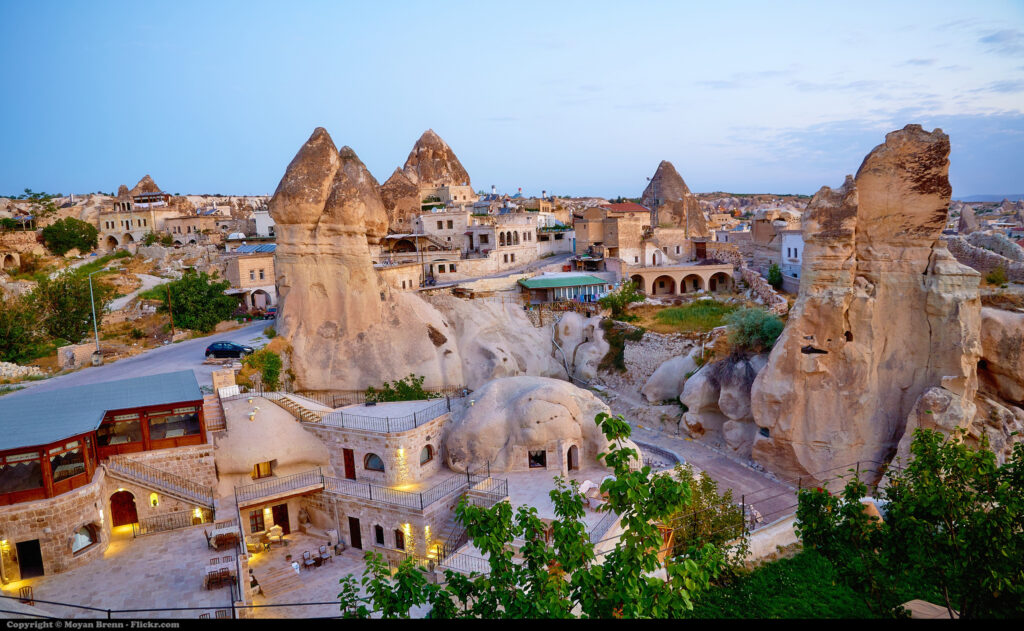
Cappadocia, which translates to “the land of beautiful horses” in Persian. Has a deep-rooted history in horse breeding and equestrian culture.Characterized by volcanic rock formations, caves, and hidden underground cities.
Ankara – Capital of Turkey
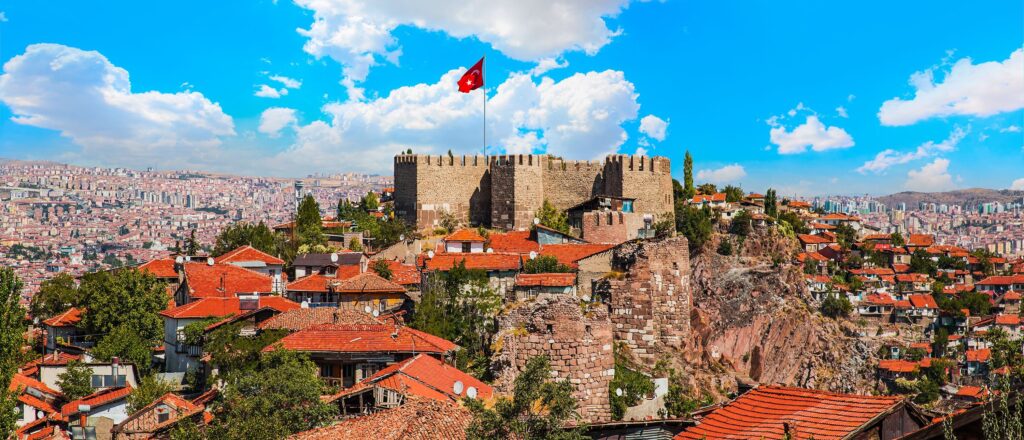
Ankara, previously known as Ancyra and Angora, serves as the capital of Turkey. Positioned in the heart of Anatolia, the city boasts a population of 5.1 million within its urban core and 5.7 million in the wider Ankara Province, solidifying its status as Turkey’s second-largest city.
Check the link for more information!
Antalya – City of Turkey

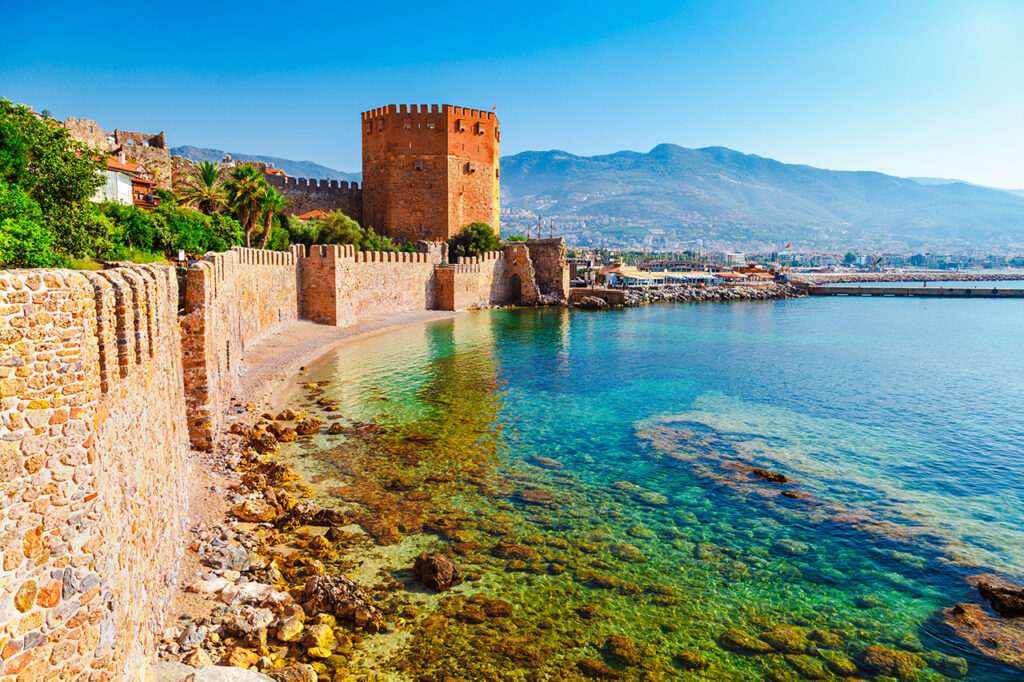
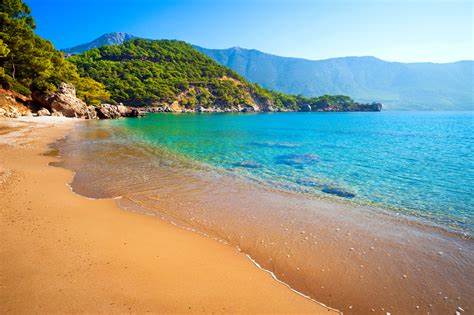
Learn more about Antalya, the fifth-most populous city in Turkey. Also, the capital of Antalya Province, and it is seen as the “capital of tourism” in Turkey.
Some of Turkey’s traditional food
Baklava

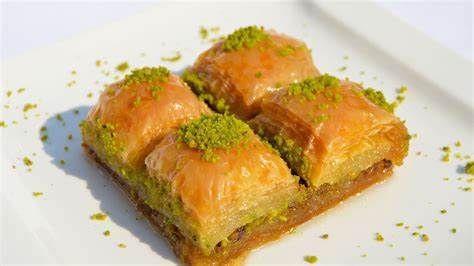

Baklava, a delectable pastry dessert composed of delicate filo pastry layers, generously filled with finely chopped nuts, and sweetened with a luscious syrup or honey. This delightful treat was a beloved staple in Ottoman cuisine and remains a cherished traditional dessert among Turkish people. Baklava – Wikipedia
Simit

Turkish simit is a circular bread that’s commonly accompanied by either tea or ayran (salted yogurt drink) and consumed for breakfast with fruit preserves or in savory combinations with cheese, pastırma (salt cured beef), and fresh vegetables.
Kebab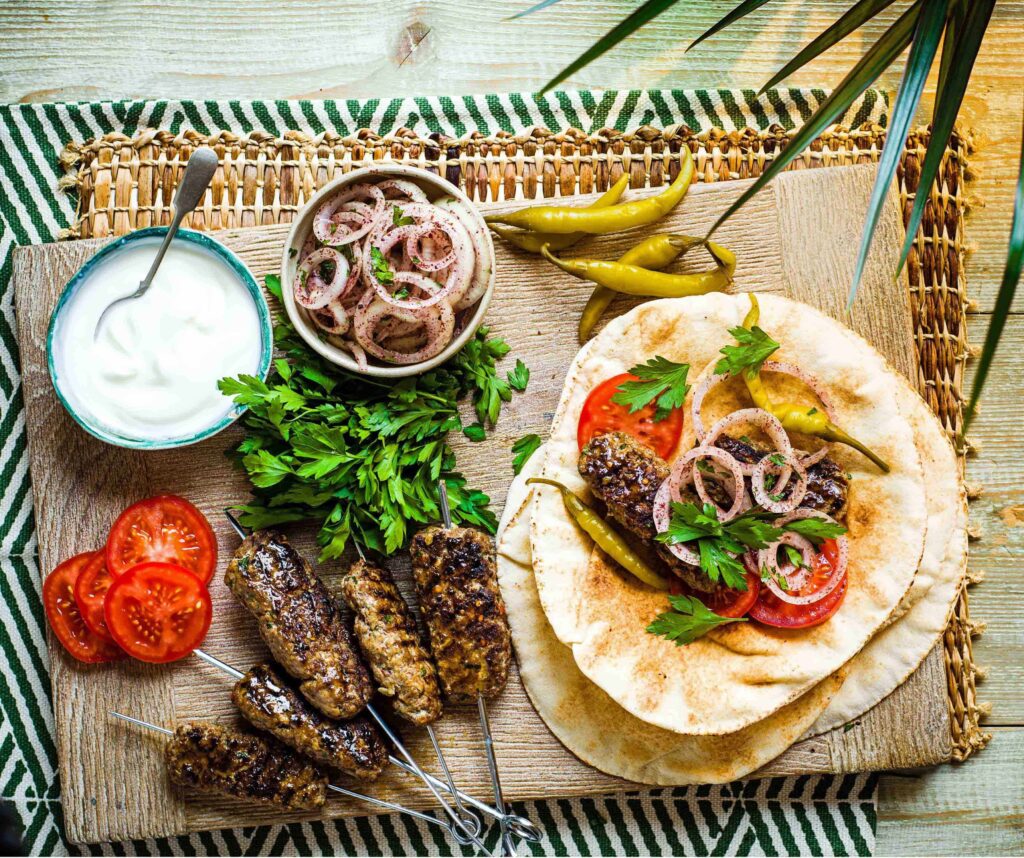
Kebab presents a dish of meat, fish, or vegetables, which are grilled on a skewer or roasted using a rotisserie.
In Turkey, the word kebab extends to include any of these dishes cooked over, or next to, a flame because It consists of both small and large cuts of meat, as well as ground meat.
Traditional Costumes in Turkey
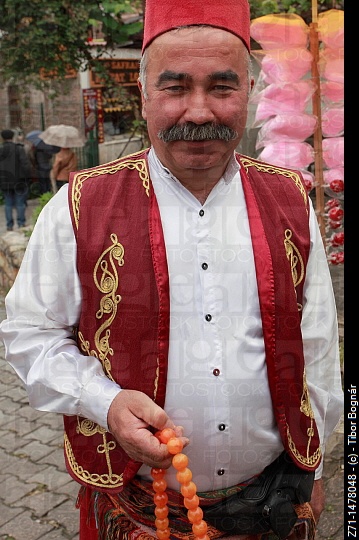
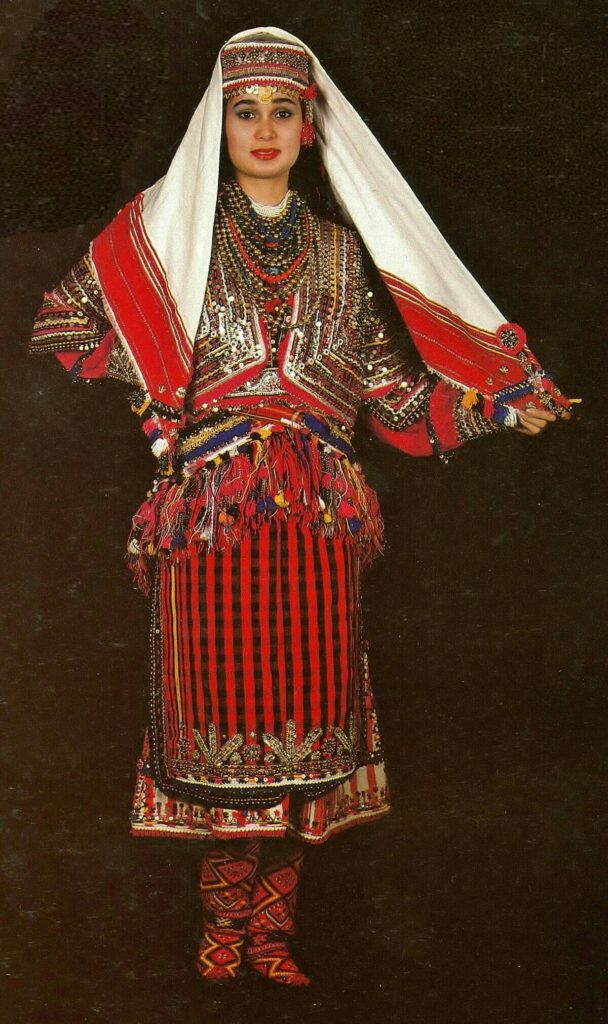
Traditional Attire and Festivals in Turkey
Ramadan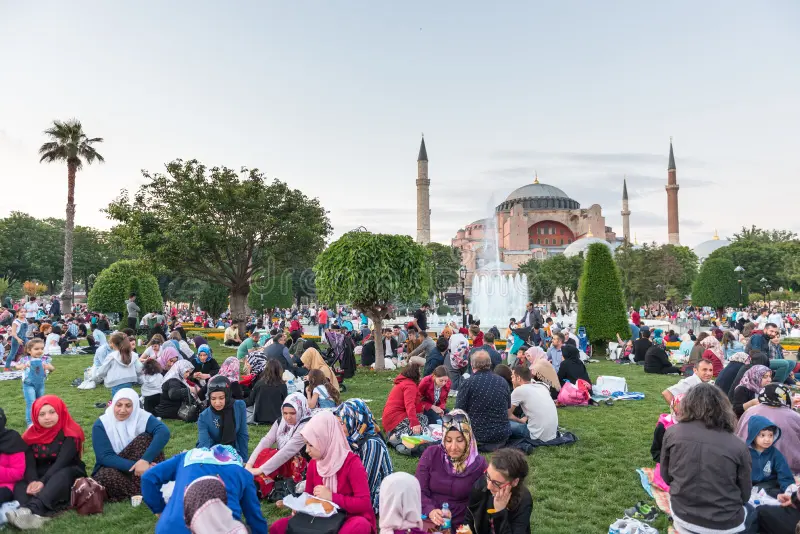
Ramazan, is the most religious festival in Turkey because it marks the anniversary of the revelation of the Quran to Prophet Muhammad, and during this time, Muslims all over the world practice fasting from daybreak to sunset.
Istanbul Tulip Festival

Spring is full of vibrant tulips, and the Turkish community celebrates the Tulip Festival every March to show their love for the tulips.
International Izmir Festival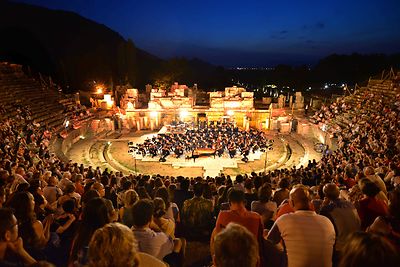
The International Izmir Festival is one of Turkey’s largest and most popular events. Held in the beautiful city of Izmir between May and June, this festival brings together musicians, dancers, and performers from all over the world for a unique celebration of art and culture.
Traditional arts and crafts
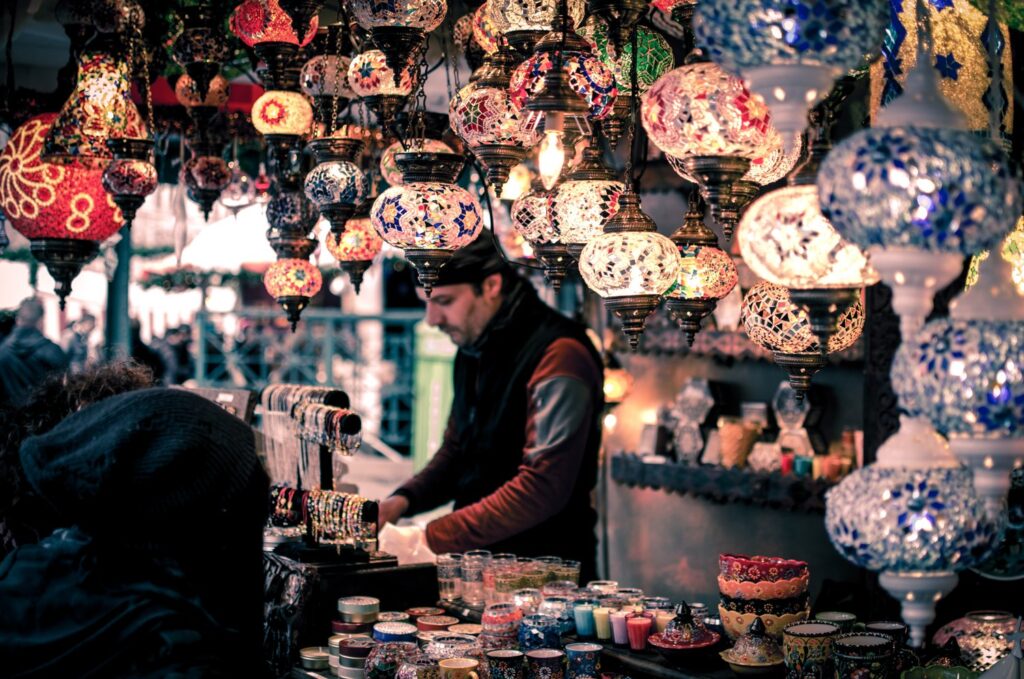


Fun Fact about Turkey
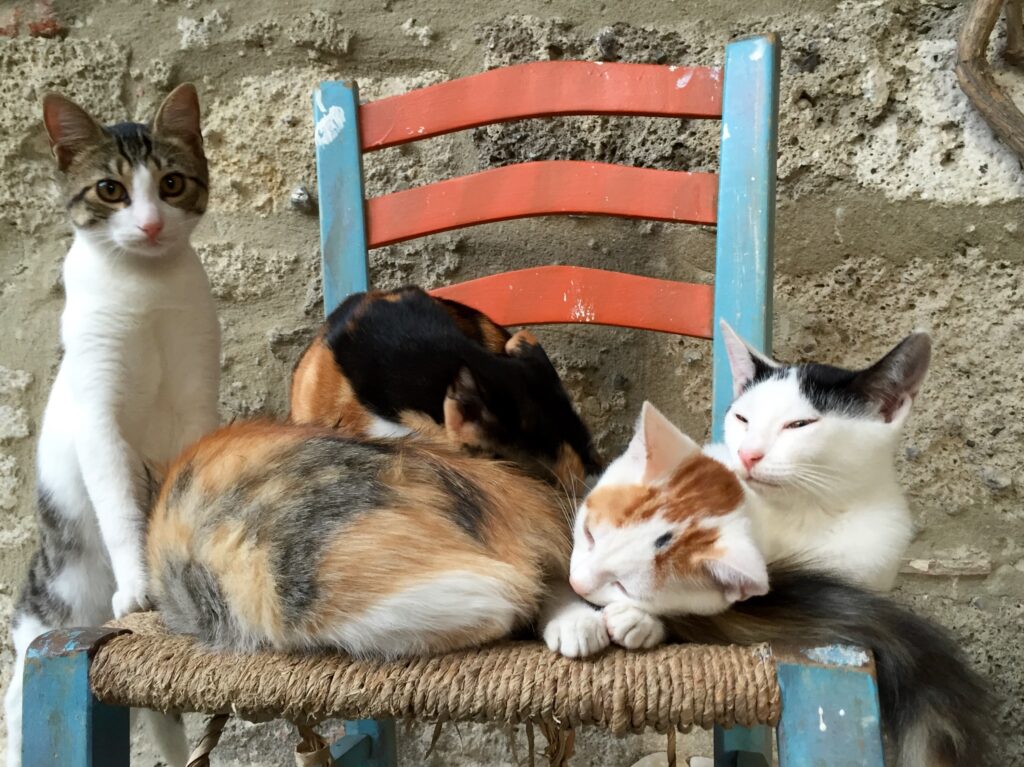
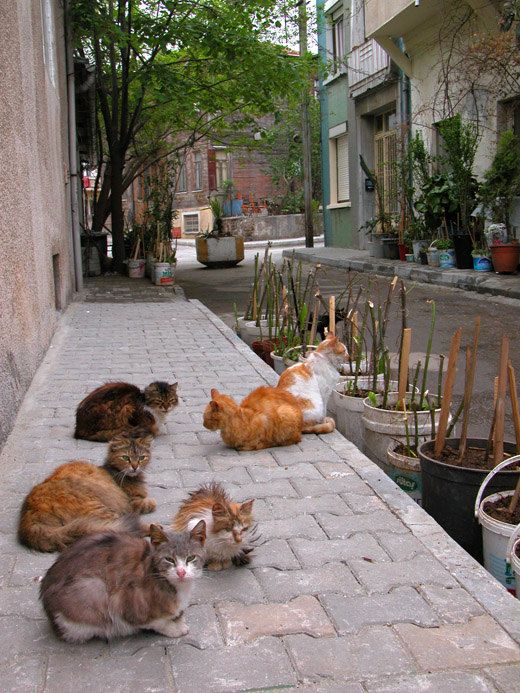
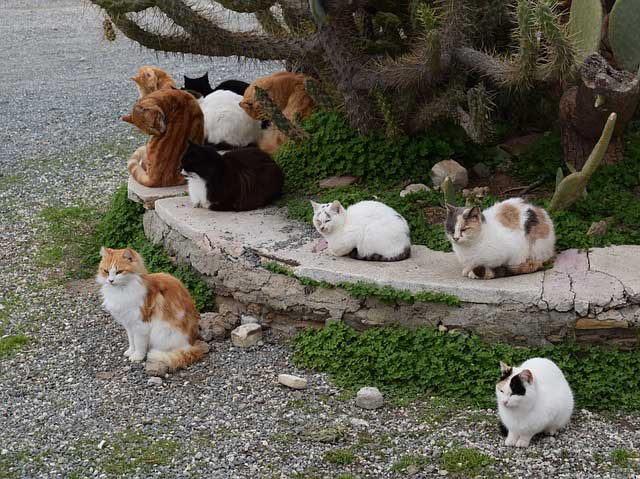
Cats are everywhere in Turkey as they are an important part of Turkish Culture. The place hosts a sizeable feral cat population, with estimates ranging from a hundred thousand to over a million stray cats.
“Every time I see people from Balkan countries, I feel like I see a friend from home!”
Ahmed Burak Cil
If you want to explore the culture of Iowa, Discovering Iowa: Journey with Celia! – UNI Student Stories

Welcome to a captivating journey through the enchanting land of Turkey! In this episode, we invite you to join us as we embark on an exploration of Turkey’s rich tapestry of beauty, culture, and tradition. Burak, who is not only an alumnus of UNI but also a passionate ambassador of his home country, Turkey.
Meet Burak!

Selam, ben Turkiye’den Burak. UNI mezunuyum ve finansal analizci olarak çalışıyorum. Mayıs 2021’de muhasebe bölümünden mezun oldum ve şu anda Macy’s Inc’de finansal analist olarak çalışıyorum. UNI’ye New York’tan uluslararası transfer öğrencisi olarak geldim. ABD eğitim sistemi tecrübesi olan biri olarak UNI çalışanlarından aldığım destek sayesinde transfer sürecinde hiç zorlanmadım. UNI, geçirdiğim süre boyunca çok sayıda gönüllülük fırsatı ve akademik rehberlik sağladı. Uluslararası öğrenci organizasyonlarında ve bölümümle ilgili organizasyonlarda aktif olarak yer aldım. Fırsatları da bu şekilde öğrendim. Danışmanlarım, profesörlerim ve meslektaşlarım yüksek öğrenimimi başarıyla tamamlamamda ve sonrasında iyi bir işe girmemde bana yardımcı oldular. Mezun olarak hâlâ Panther ailesinin büyük bir parçasıyım. UNI Mezunlar Derneği, toplumu meşgul edecek etkinlikler düzenlemektedir.
Hi, I am Burak from Turkey. I am a UNI graduate and work as a financial analyst. I graduated in May 2021 with an accounting degree and now working as a financial analyst at Macy’s Inc. I came to UNI as an international transfer student from New York. As someone who has experience in the US educational system and with the assistance I received from UNI staff, I didn’t struggle at all during the transfer process. UNI provided handful of volunteer opportunities and academic guidance throughout my time. I was an active participant of international student organizations and organizations that are related to my major. That’s how I learned about opportunities as well. My advisors, professors and peers helped me to complete my higher education successfully and land a decent job after that. I’m still a big part of Panther family as an alumni. UNI Alumni Association organizes events to keep the community engaged.
Ahmed Burak Cil – UNI Alumni
Where is Turkey?

Turkey, known as the Republic of Türkiye. A unique transcontinental nation situated at the intersection of Southeast Europe and West Asia. The majority of its territory lies on the Anatolian Peninsula in West Asia, with a smaller section known as East Thrace situated on the Balkan Peninsula in Southeast Europe.
It shares its borders with the Black Sea to the north, Georgia to the northeast, Armenia, Azerbaijan, and Iran to the east, Iraq to the southeast, Syria and the Mediterranean Sea to the south, the Aegean Sea to the west, and Greece and Bulgaria to the northwest.
Places you should visit in Turkey



Istanbul as the culture center of Turkey

Istanbul, referred to as the heart of Turkey, holds a prominent position as the country’s economic, cultural, and historical hub. Commonly hailed as the capital of Turkish culture. This vibrant city spans the Bosphorus Strait. Where Europe and Asia Minor intersect, creating a unique blend of eastern and western influences, both in geography and culture.
Istanbul stands as one of Turkey’s top tourist destinations, boasting a wealth of renowned historical and cultural landmarks. UNESCO-recognized treasures such as Hagia Sophia, Sarayburnu, and Topkapi Palace located in Turkey. These iconic monuments exemplify the rich heritage that draws visitors from around the world to this remarkable city.
Hagia Sophia – A Christian church that became a mosque.
Hagia Sophia, also known as the Church of the Divine Wisdom, is a historic Byzantine structure in Istanbul. Built as a Christian church in the 6th century under Emperor Justinian I. It has transitioned between being a mosque, a museum, and a mosque again over the centuries. The building showcases a blend of Islamic inscriptions and Christian mosaics, reflecting the region’s changing religious influences.


Hagia Sophia
TopKapi Palace



Topkapi Palace, situated in Istanbul’s Fatih district, is a museum and library with a rich historical significance. It served as the royal residence of the Ottoman Empire for nearly four centuries. From the 1460s until the construction of Dolmabahçe Palace in 1856.
Cappadocia – Historical Region in Turkey



Cappadocia, which translates to “the land of beautiful horses” in Persian. Has a deep-rooted history in horse breeding and equestrian culture.Characterized by volcanic rock formations, caves, and hidden underground cities.
Ankara – Capital of Turkey

Ankara, previously known as Ancyra and Angora, serves as the capital of Turkey. Positioned in the heart of Anatolia, the city boasts a population of 5.1 million within its urban core and 5.7 million in the wider Ankara Province, solidifying its status as Turkey’s second-largest city.
Check the link for more information!
Antalya – City of Turkey



Learn more about Antalya, the fifth-most populous city in Turkey. Also, the capital of Antalya Province, and it is seen as the “capital of tourism” in Turkey.
Some of Turkey’s traditional food
Baklava



Baklava, a delectable pastry dessert composed of delicate filo pastry layers, generously filled with finely chopped nuts, and sweetened with a luscious syrup or honey. This delightful treat was a beloved staple in Ottoman cuisine and remains a cherished traditional dessert among Turkish people. Baklava – Wikipedia
Simit

Turkish simit is a circular bread that’s commonly accompanied by either tea or ayran (salted yogurt drink) and consumed for breakfast with fruit preserves or in savory combinations with cheese, pastırma (salt cured beef), and fresh vegetables.
Kebab
Kebab presents a dish of meat, fish, or vegetables, which are grilled on a skewer or roasted using a rotisserie.
In Turkey, the word kebab extends to include any of these dishes cooked over, or next to, a flame because It consists of both small and large cuts of meat, as well as ground meat.
Traditional Costumes in Turkey


Traditional Attire and Festivals in Turkey
Ramadan
Ramazan, is the most religious festival in Turkey because it marks the anniversary of the revelation of the Quran to Prophet Muhammad, and during this time, Muslims all over the world practice fasting from daybreak to sunset.
Istanbul Tulip Festival

Spring is full of vibrant tulips, and the Turkish community celebrates the Tulip Festival every March to show their love for the tulips.
International Izmir Festival
The International Izmir Festival is one of Turkey’s largest and most popular events. Held in the beautiful city of Izmir between May and June, this festival brings together musicians, dancers, and performers from all over the world for a unique celebration of art and culture.
Traditional arts and crafts



Fun Fact about Turkey



Cats are everywhere in Turkey as they are an important part of Turkish Culture. The place hosts a sizeable feral cat population, with estimates ranging from a hundred thousand to over a million stray cats.
“Every time I see people from Balkan countries, I feel like I see a friend from home!”
Ahmed Burak Cil
If you want to explore the culture of Iowa, Discovering Iowa: Journey with Celia! – UNI Student Stories



